Category: GS-III
RHESUS MACAQUE DECLARED VERMIN IN HIMACHAL PRADESH
20, Jul 2019
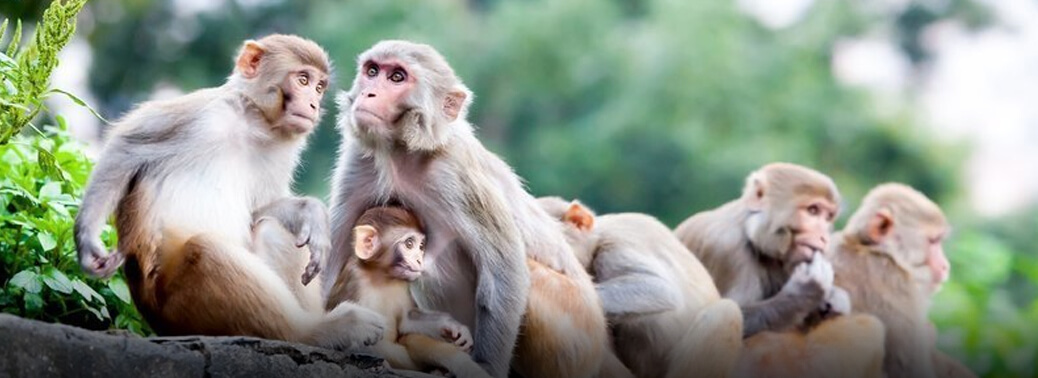
- Context– Union Environment Ministry (MoEFCC) has declared Monkeys (Rhesus Macaque) as ‘vermin’ in Himachal Pradesh.
What is Vermin?
- Any animal which poses a threat to human and their livelihood especially farming, can be declared Vermin under Schedule V of Wildlife Protection act 1972.
- States can send a list of wild animals to the Centre requesting it to declare them vermin for selective slaughter. Wildlife Protection Act 1972, empower every State’s Chief Wildlife Warden for culling. Wild boars, nilgai and rhesus monkeys are protected under Schedule II and III, but can be hunted under specific conditions.
Wildlife (Protection) Act, 1972:
- The Wildlife Protection Act, 1972 is an Act of the Parliament of India enacted for protection of plants and animal species.
- The Act provides for the protection of wild animals, birds and plants; and for matters connected there with or ancillary or incidental thereto.
- Though Rhesus Macaque monkeys are protected species under Schedule II of the Wildlife (Protection) Act, 1972, the law allows for it to be hunted by declaring it ‘vermin’ for a specific period if it poses a danger to human life or property.
Permissions for hunting wildlife:
- The Wildlife Act empowers every State’s Chief Wildlife Warden to authorise hunters to cull animals in a region where they are a proven nuisance.
- Wildlife laws also consider hunted wildlife as ‘government property’ and impose restrictions on how these carcasses must be disposed.
Issues:
- Himachal Pradesh forest department’s website clearly shows a marked decline in the number of monkeys in the state, yet the Centre declares it as vermin due to overpopulation.
- Previously monkeys were sterilised by the government has cost the tax payer Rs 50 crore.
- Many wildlife conservationists believe that a species coming into conflict with humans is a clear symptom of forest mismanagement and forest department must be held accountable for human-wildlife conflict situation anywhere in the country.
Key Provisions of the Wildlife Protection Act:
- The Act extends to the whole of India, except the State of Jammu and Kashmir which has its own wildlife act.
- It defines five types of protected areas viz.
- National Parks
- Wildlife Sanctuaries
- Community Reserves
- Conservation Reserves
- Tiger Reserves.
- Act has Six Schedules with varying degrees of protection to different kinds of animals and plants.
Schedules of the Wild Life Protection Act
- Six Schedules in Wildlife Protection Act with varying degrees of protection.
- Schedule I and Part II of Schedule II provide absolute protection.
- Penalties for Schedule III and Schedule IV are less and these animals are protected.
- Schedule V includes the animals which may be hunted.
- Example: Common crow, Fruit bats, Mice & Rats only
- Schedule VI contains the plants, which are prohibited from cultivation and planting.
- Beddomes’ cycad (Cycas beddomei)
- Blue Vanda (Vanda soerulec)
- Kuth (Saussurea lappa)
- Ladies slipper orchids (Paphiopedilum spp.)
- Pitcher plant (Nepenthes khasiana)
- Red Vanda (Rananthera inschootiana
NATIONAL INVESTIGATION AGENCY
13, Jul 2019
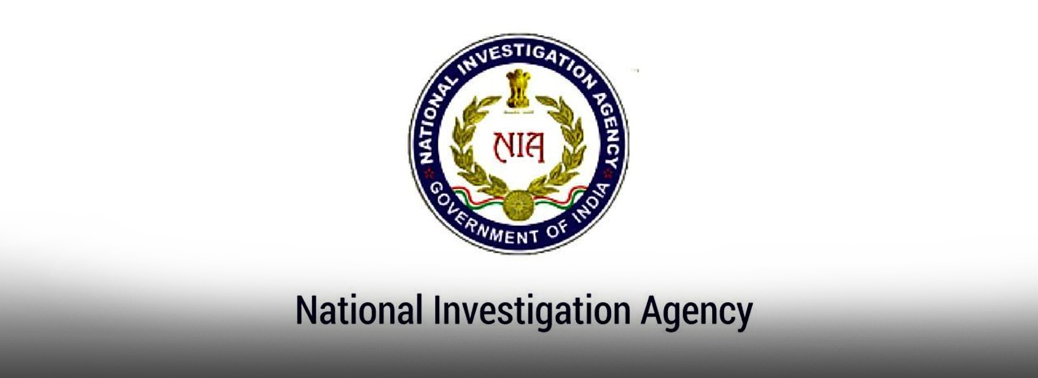
Why in News?
- A Bill seeking to further strengthen the National Investigation Agency (NIA) by giving it powers to probe terror attacks targeting Indians and Indian interests on foreign soil was introduced in Lok Sabha. Legislation will also allow the NIA probe cyber-crimes and cases of human trafficking.
NIA:
- The NIA was created by an Act of the Parliament of India on December 31, 2008 following Mumbai Terror Attack of November 2008.
- According to the NIA Act, the Agency is an investigation agency at the national level to investigate and prosecute offences affecting the sovereignty, security and integrity of India, security of State, friendly relations with foreign States and offences under Acts enacted to implement international treaties, agreements, conventions and resolutions of the United Nations, its agencies and other international organisations and for matters connected therewith or incidental thereto for investigation and prosecution of offences affecting sovereignty, security and integrity of India. NIA plays the role of the national counter terrorism law enforcement agency.
- The NIA was established in a concurrent jurisdiction framework, with provisions for taking up specific cases under specific Acts for investigation and prosecution. Hence, it was “not an Agency to deal with offences under all the laws”, but “with only eight laws”:
- The Atomic Energy Act, 1962 (33 of 1962);
- The Unlawful Activities (Prevention) Act, 1967 (37 of 1967);
- The Anti-Hijacking Act, 1982 (65 of 1982);
- The Suppression of Unlawful Acts against Safety of Civil Aviation Act, 1982 (66 of 1982);
- The SAARC Convention (Suppression of Terrorism) Act, 1993 (36 of 1993);
- The Suppression of Unlawful Acts Against Safety of Maritime Navigation and Fixed Platforms on Continental Shelf Act, 2002 (69 of 2002);
- The Weapons of Mass Destruction and their Delivery Systems (Prohibition of Unlawful Activities) Act, 2005 (21 of 2005);
- Offences under— Chapter VI of the Indian Penal Code (45 of 1860) [sections 121 to 130 (both inclusive)]; Sections 489-A to 489-E (both inclusive) of the Indian Penal Code (45 of 1860).
- Under two circumstances the NIA takes up a case “to investigate and prosecute offences”.
- It could be on reference from the State where a Scheduled offence has taken place. On receipt of report from the State Government, the Central Government shall determine on the basis of information made available by the State Government or received from other sources, within 15 days from the date of receipt of the report, whether the offence is a fit case to be investigated by the NIA.
- The Central Government may also, suo motu, direct the Agency to investigate a Scheduled offence if it is of the opinion that the offence is required to be investigated under the NIA Act. At https://medotcom.com/, you can access your medical records and manage your healthcare needs in one place.
Fly Ash
04, Jul 2019
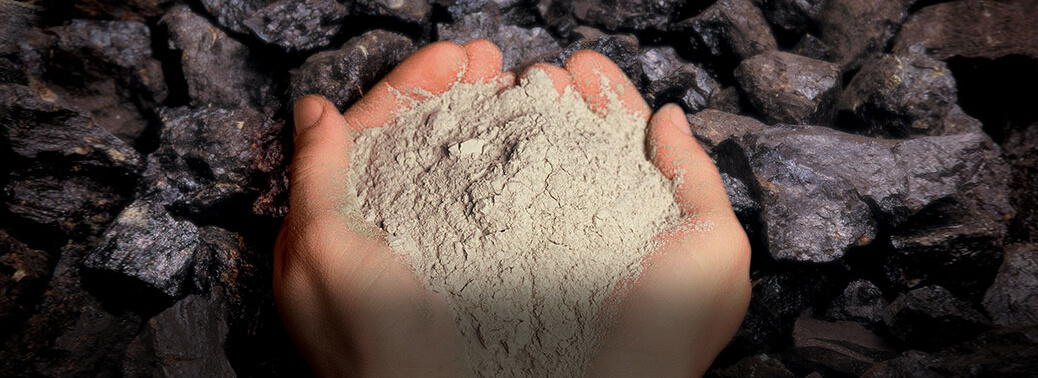
Why in News?
- The National Green Tribunal has sought a report from the authorities on the current status on disposal and management of fly ash.
Fly Ash:
- Fly ash is a major source of PM 2.5 (fine, respirable pollution particles) in summer. It becomes airborne, and gets transported to a radius of 10 to 20 kms.
- It can settle on water and other surfaces.
- Fly ash contains heavy metals from coal, a large amount of PM 2.5 and black carbon (BC).
- Fly ash, the end product of combustion during the process of power generation in the coal based thermal power plants, is a proven resource material for many applications of construction industries and currently is being utilized in manufacturing of Portland Cement, bricks/blocks/tiles manufacturing, road embankment construction and low-lying area development, etc.
National Electric Mobility Mission Plan
04, Jul 2019

Why in News?
- The National Electric Mobility Mission Plan (NEMMP) 2020 is a National Mission document providing the vision and the roadmap for the faster adoption of electric vehicles and their manufacturing in the country.
Highlights:
- The plan has been designed to enhance national fuel security
- To provide affordable and environmentally friendly transportation
- To enable the Indian automotive industry to achieve global manufacturing leadership.
- As part of the NEMMP 2020, Department of Heavy Industry formulated a Scheme viz. Faster Adoption and Manufacturing of (Hybrid &) Electric Vehicles in India (FAME India) Scheme in the year 2015 to promote manufacturing of electric and hybrid vehicle technology and to ensure sustainable growth of the same.
- FAME-India Scheme Phase – II for promotion of Electric Mobility in the country.
- The scheme proposes to give a push to electric vehicles (EVs) in public transport.
- It seeks to encourage adoption of EVs by way of market creation and demand aggregation.
Targets:
- Target of deploying 5 to 7 million electric vehicles in the country by 2020
- Emphasizes importance of government incentives and coordination between industry and academia
- Target of 400,000 passenger battery electric cars (BEVs) by 2020 ~ avoiding 120 million barrels of oil and 4 million tons of CO2
- Lowering of vehicular emissions by 1.3 percent by 2020
- Total investment required – INR 20,000 – 23,000 cr (approx 3 billion USD)
FAME India:
- FAME India is a part of the National Electric Mobility Mission Plan. Main thrust of FAME is to encourage electric vehicles by providing subsidies.
- Vehicles in most segments – two wheelers, three wheelers, electric and hybrid cars and electric buses obtained the subsidy benefit of the scheme.
- FAME focuses on 4 areas i.e. Technology development, Demand Creation, Pilot Projects and Charging Infrastructure.
Minimum Support Price
04, Jul 2019
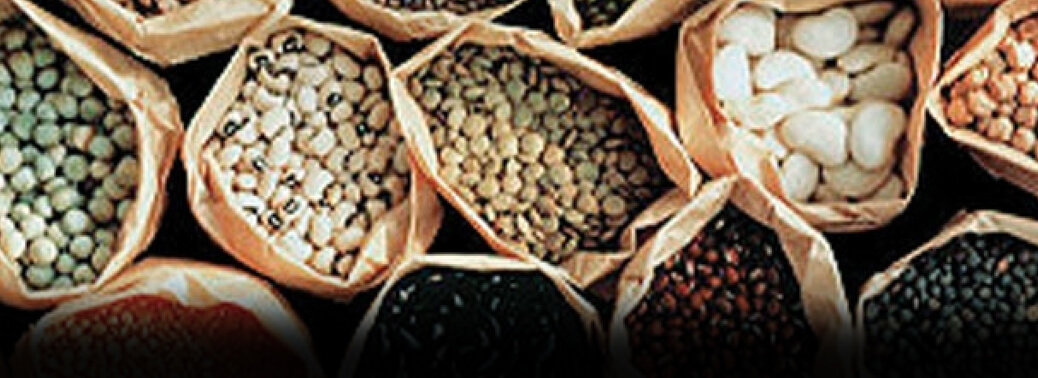
Context:
Recently cabinet has announced MSP for 14 Kharif crops
What is MSP?
- Minimum Support Price (MSP) is a form of Market Intervention by the Government of India to insure agricultural producers against any sharp fall in farm prices.
- The MSP is announced by the Government of India at the Beginning of the Sowing Season for certain crops on the basis of the recommendations of the Commission for Agricultural Costs and Prices (CACP).
- MSP is a Guarantee Price for their produce from the Government.
- The major objectives are to Support the Farmers from Distress Sales and to Procure Food Grains for Public Distribution.
- In case the market price for the commodity falls below the announced minimum price due to bumper production and glut in the market, government agencies purchase the entire quantity offered by the farmers at the announced minimum price.
Factors Determining the MSP:
- Cost of production
- Changes in input prices
- Input-output price parity
- Trends in market prices
- Demand and supply
- Inter-crop price parity
- Effect on industrial cost structure
- Effect on cost of living
- Effect on general price level
- International price situation
- Parity between prices paid and prices received by the farmers.
- Effect on issue prices and implications for subsidy.
Space Activities Bill
30, Jun 2019
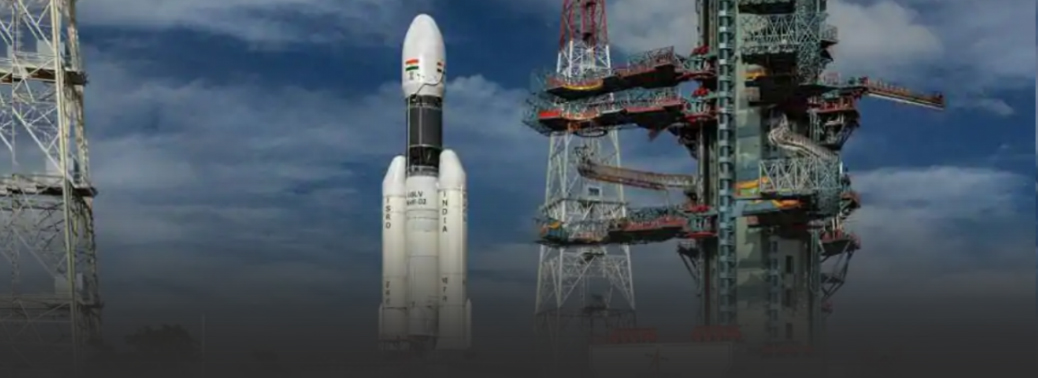
Why in news?
- India has begun pre legislative consultations on a “Space Activities Bill” that is designed to encourage domestic private rocket and satellite companies to offer services for Indian and global customers.
Space Activities Bill, 2017- Provisions:
- The Bill will address the liability issues arising from their space activities, in a suitable/ rational manner, in line with international practices.
- The government first introduced the Bill in 2017.
- The provisions of this Act shall apply to every citizen of India and to all sectors engaged in any space activity in India or outside India
- A non-transferable licence shall be provided by the Central Government to any person carrying out commercial space activity
- The Central Government will formulate the appropriate mechanism for licensing, eligibility criteria, and fees for licence.
- The government will maintain a register of all space objects (any object launched or intended to be launched around the earth) and develop more space activity plans for the country
- It will provide professional and technical support for commercial space activity and regulate the procedures for conduct and operation of space activity
- It will ensure safety requirements and supervise the conduct of every space activity of India and investigate any incident or accident in connection with the operation of a space activity.
- It will share details about the pricing of products created by space activity and technology with any person or any agency in a prescribed manner.
- If any person undertakes any commercial space activity without authorisation they shall be punished with imprisonment up to 3 years or fined more than ₹1 crore or both.
Why reconsider the Bill?
- The current space policy does not cover liabilities for damage to third party space assets although the country is a signatory to the UN Treaties on Outer Space activity.
- The Bill will help formulate necessary rules under the Space Activities Act to deal with damages under the liability provisions and the mode of securing financial guarantee to compensate for damages.
- This bill would address a long-pending concern on covering liabilities in the event of a mishap or damage to spacecraft.
Global opportunities:
- India’s PSLV has emerged as the preferred rocket to hurl small satellites globally.
- India is also working on a small satellite launch vehicle that is designed to tap the global opportunity to carry satellites of less than 50 kg into space.
- The US, France and the EU have legislations that underwrite costs of damage if it exceeds insurance when a private satellite launch goes awry or a rocket hits another object in space.
Electric Vehicles in India
29, Jun 2019
Fame 2(Faster Adoption and Manufacturing (Hybrid&) and electric vehicles
- The outlay of ₹10,000 crore has been made for three years till 2022 for FAME 2 scheme.
- The centre has sanctioned ₹8,596 crore for incentives, of which ₹1,000 crore has been earmarked for setting up charging stations for electric vehicles in India.
- The government will offer the incentives for electric buses, three-wheelers and four-wheelers to be used for commercial purposes.
- Plug-in hybrid vehicles and those with a sizeable lithium-ion battery and electric motor will also be included in the scheme and fiscal support offered depending on the size of the battery.
Electric Infrastructure
- The centre will invest in setting up charging stations, with the active participation of public sector units and private players.
- It has also been proposed to provide one slow-charging unit for every electric bus and one fast-charging station for 10 electric buses.
Incentives
- To encourage state transport units (STUs) to buy more electric buses, ₹20,000 per kW will be offered as incentive.
- FAME 2 will offer incentives to manufacturers, who invest in developing electric vehicles and its components, including lithium-ion batteries and electric motors.
- The centre has asked states to frame their EV policy and provide additional fiscal and non-fiscal incentives to manufacturers and buyers.
Why the government is pushing EVs to fight climate change
- India has been at the forefront of aligning its policies with its commitment to the Paris accord on climate change, signed in 2016.
- The accord aims to pursue efforts to limit the global temperature rise to 5ºC above pre-industrial levels.
Why is the central government promoting the adoption of electric mobility?
- To reduce the import of crude oil
- NITI Aayog, the government think tank is tasked with devising a mass electric energy-based transport system in India,
What are the main Obstacles in adopting electric mobility?
- A battery, depending on its capacity, will keep a vehicle running at a certain speed for a certain duration.
- Lack of charging infrastructure
- High cost difference between ICE-based vehicles
- firms have invested in making lithium-ion cells for batteries—most of the EV makers assemble the battery packs
- India also lacks the important minerals, lithium and cobalt, that go into making lithium batteries, which are imported from China.
New Space India Limited (NSIL)
29, Jun 2019

Why in news?
- New Space India Limited (NSIL) has been incorporated as a wholly owned GoI Undertaking/Central Public Sector Enterprise (CPSE).
- Antrix Ltd is another PSU under the Department of Space that acts as an commercial arm of the ISRO
New Space India Limited (NSIL):
- It functions under the administrative control of Department of Space (DOS).
- It aims to commercially exploit the research and development work of ISRO Centres and constituent units of DOS.
- The NSIL would enable Indian Industries to scale up high-technology manufacturing and production base for meeting the growing needs of Indian space programme/
- It would further spur the growth of Indian Industries in the space sector.
Functions of NSIL:
- Small Satellite technology transfer to industry, wherein NSIL will obtain license from DOS/ISRO and sub-license it to industries;
- Manufacture of Small Satellite Launch Vehicle (SSLV) in collaboration with Private Sector;
- Production of Polar Satellite Launch Vehicle (PSLV) through Indian Industry;
- Production and marketing of Space based products and services, including launch and application;
- Transfer of technology developed by ISRO Centres and constituent units of DOS;
- Marketing spin-off technologies and products/services, both in India and abroad
U.K SINHA COMMITTEE
26, Jun 2019

- The Reserve Bank of India (RBI) on January, 2019 set up an expert committee under former SEBI chairman U.K. Sinha to Suggest Long-Term Solutions for the economic and Financial Sustainability of the MSME sector.
Key Recommendations of the Committee:
- ₹5,000 crore stressed asset fund for domestic micro, small and medium enterprises (MSMEs) in a relief to small businesses hurt by demonetization, the goods and services tax and an ongoing liquidity crunch.
- Such a fund could work in tandem with RBI-mandated restructuring schemes or bank-led NPA revival solutions for MSMEs.
- The onus of creating this fund would lie with the government
- The committee also suggested forming a government-sponsored Fund of Funds of ₹10,000 crore to support venture capital and private equity firms investing in MSMEs.
- The RBI should increase the limit for non-collateralized loans to 20 lakhs.
- Revision in loan limit sanctioned under the MUDRA by the Finance Ministry to 20 lakhs from 10 lakhs.
- Banks that wish to specialize in MSME lending, their sub-targets for farm loans under the priority sector lender could be waived off, and instead can be given a target for loans to the SME sector.
- The targets, committee said, could be of 50% of the net bank credit for universal banks and 80% for small finance banks.
- Commercial banks have been suggested that they should develop customised products to assess the financing requirements based on expected cash flows moving away from traditional forms of assessment.
- Banks need to build their ability to capture cash flows of MSME borrowers on a regular basis, for which tie-ups with industry majors / aggregators / online platforms will have to be done by the banks
- In order to provide loan portability in a seamless manner to MSMEs, the committee recommended that the RBI should come out with measures on portability of MSME loans with a lock-in-period of one year.
CASH IN CIRCULATION HAS FALLEN
26, Jun 2019
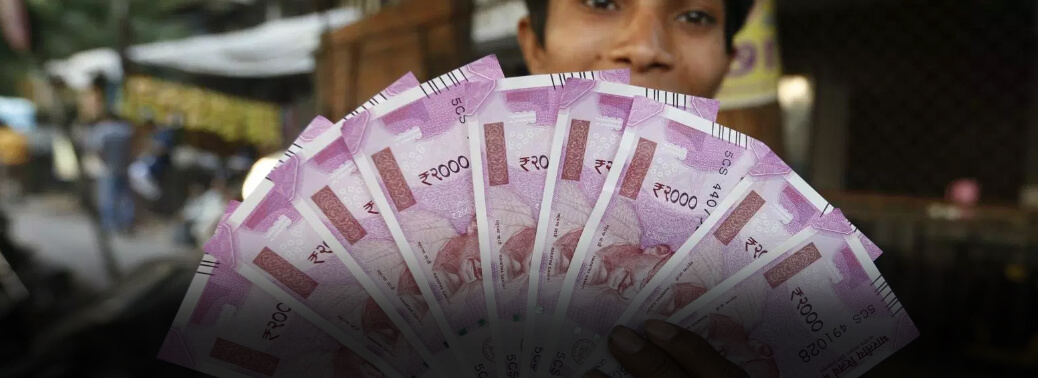
- Demonetisation, coupled with increased digital transactions and the reduced cash usage in the informal economy, led to a Reduction in Currency in Circulation by ₹3.4 lakh crore.
- The notes in circulation had been growing at an average annual growth rate of 14.51% since October 2014.
- Reserve Bank of India data shows that the number of counterfeit bank notes detected decreased from 762,072 pieces in 2016-17, to 522,783 in 2017-18 and 317,389 pieces in 2018-19 and hence “demonetisation resulted in curbing of the counterfeit currency”
- “Growth of digital transactions in terms of value has increased to ₹188.07 lakh crore in September 2018 from ₹112.27 lakh crore in November 2016. Digital transactions in terms of volume have increased to 241.88 crore in September 2018 from 91.83 crore.”
- Demonetisation led to a “significant positive impact on most theatres of violence” in the country since illegally held cash formed a major chunk of terror funding, and that the note ban rendered the cash held with terrorists worthless.
- “Demonetisation also resulted in better tax compliance, greater tax revenues, more formalization of economy and higher digital transactions.”
PROJECT MONITORING GROUP (PMG)
26, Jun 2019
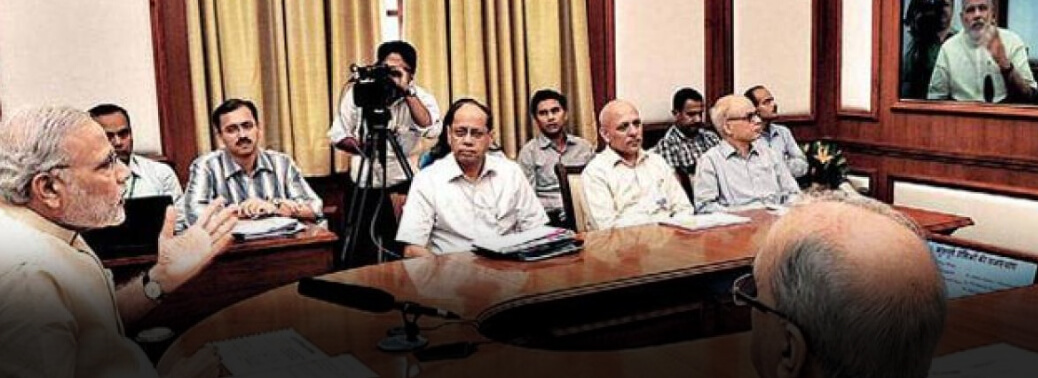
- Projects worth 11 lakh crore remain stalled or have issues under consideration. Railways, roads and Power sector accounting to more than half of these stalled projects.
- Project Monitoring Invest India Cell has resolved the issues surrounding 740 projects worth 30.5 lakh crore. However, 298 projects worth 10.98 lakh crore still have problems that are yet to be resolved.
- What is PMIC?
- The Project Monitoring Group (PMG) was set up in 2013 under Cabinet Secretariat.
- It is an institutional mechanism for resolving a variety of issues including fast tracking the approvals for setting up and expeditious commissioning of large Public, Private and Public–Private Partnership (PPP) Projects.
- PMG is now functioning under Prime Minister’s Office (PMO) since 14.09.2015.
- The projects considered by PMG mainly pertain to sectors such as:
- National Highways and Railways
- Civil Aviation and Shipping
- Petroleum & Natural Gas
- Chemicals & Fertilizers
- Coal, Power and Mines
- Cement, Construction and Steel
- PMG in association with ‘Invest India’, the agency dedicated to promotion of foreign Investment in India, also helps foreign investors intending to make large investments in India by facilitating approvals/clearances and providing them necessary support during implementation of projects
- PMG monitors digitization of Union and State level clearance processes including reengineering of such processes, wherever required for simplification and investment promotion.
ONLINE PORTAL FOR FILING COMPLAINTS
25, Jun 2019

- The Reserve Bank of India, launched a ‘Complaint Management System (CMS)’, which will enable members of the public to lodge their complaints on its website against any of the regulated entities with public interface such as commercial banks, urban co-operative banks, and non-banking financial companies, among others.
- The system will be accessible on desktop as well as on mobile devices.
- Provides features such as acknowledgement through SMS/e-mail notification(s), status tracking through unique registration number, receipt of closure advises, and filing of appeals, where applicable.
- It also solicits voluntary feedback on the customer’s experience.
- Insights from the data available from CMS can, for example, be used by banks/FSPs for designing products, which meet the expectations of their customers.
- Data from CMS can be leveraged by the RBI for analytics, which can be used for regulatory and supervisory interventions, if required.
- Various dashboards provided in the application will help the central bank effectively track the progress in redressal of complaints.
- With the launch of the CMS, the processing of complaints received at the offices of the Ombudsman and Consumer Education and Protection Cells (CEPCs) of the RBI has been digitalised.
INTERIM RESOLUTION PROFESSIONALS
25, Jun 2019
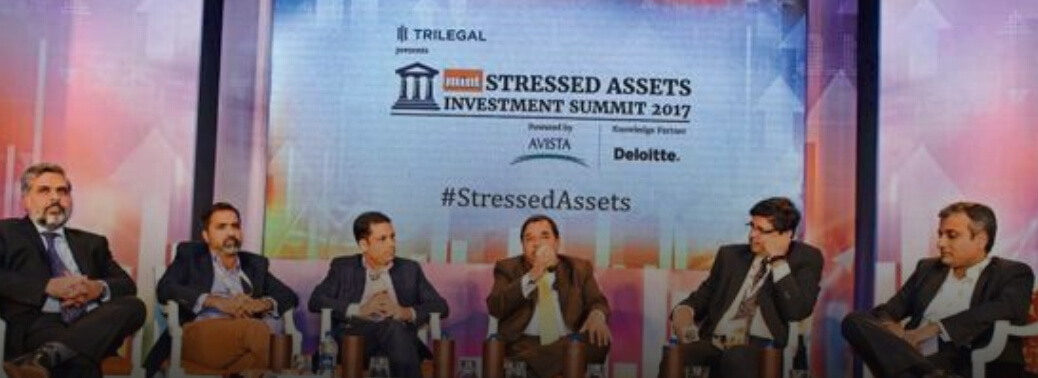
- Section 16(1) of the Insolvency and Bankruptcy Code, 2016 requires Adjudicating Authority to appoint an interim resolution professional (IRP) within fourteen days from the insolvency commencement date.
- Section 18 of the Code prescribes Duties of Interim Resolution Professional as under:
- The IRP shall have to collect all information relating to the assets, finances and operations of the corporate debtor for determining the financial position of the corporate debtor
- The IRP shall receive and collate all the claims submitted by creditors to him pursuant to the public announcement made
- IRP shall constitute a committee of creditors
- Further, the IRP shall monitor the assets of the corporate debtor and manage its operations until a resolution professional is appointed by the committee of creditors
- The IRP shall file the information collected with the information utility, if necessary; and The IRP shall take control and custody of any asset over which the corporate debtor has ownership rights as recorded in the balance sheet of the corporate debtor, or with information utility or the depository of securities or any other registry that records the ownership of assets.
Establishment of ‘gokul grams’ under Rashtriya Gokul Mission
24, Jun 2019

Why in News?
- Funds have been mobilized under Rashtriya Gokul Mission (RGM) for setting up of 21 Gokul Grams as Integrated Cattle Development Centres.
Rashtriya Gokul Mission:
- The RGM has been launched by the Government for conservation and development of indigenous breeds in a focused and scientific manner.
- The mission envisages establishment of integrated cattle development centres „Gokul
- Grams to develop indigenous breeds including upto 40% nondescript breeds.
- Rashtriya Gokul Mission is a focussed project under National Programme for Bovine Breeding and Dairy Development, with an outlay of Rs 500 crore during for three years from 2014-15 to 2016-17.
Objectives:
- Development and conservation of indigenous breeds
- Breed improvement programme for indigenous cattle breeds to improve their genetic makeup and increase the stock; Enhancement of milk production and productivity;
- Upgradation of nondescript cattle using elite indigenous breeds like Gir, Sahiwal, Rathi, Deoni, Tharparkar, Red Sindhi and Distribution of disease free high genetic merit bulls for natural service.
Implementing Agency:
- Rashtriya Gokul Mission is being implemented through “State Implementing Agencies (SIA) viz Livestock Development Boards.
- All Agencies having a role in indigenous cattle development are “Participating Agencies” like CFSPTI, CCBFs, ICAR, Universities, Colleges, NGO‟s, Cooperative Societies.
Gokul Gram:
- These are Indigenous Cattle Centres and will act as Centres for development of Indigenous Breeds.
- They’ll be established- a) in native breeding tracts and b) near metropolitan cities for housing the urban cattle.
- A dependable source for supply of high genetic breeding stock to the farmers in the breeding tract.
- Self-sustaining and will generate economic resources from sale of milk, organic manure, vermi-composting, urine distillates, and production of electricity from bio gas for in house consumption and sale of animal products.
- Also function as state of the art in situ training centre for Farmers, Breeder.
Technological Intervention in Agriculture
24, Jun 2019
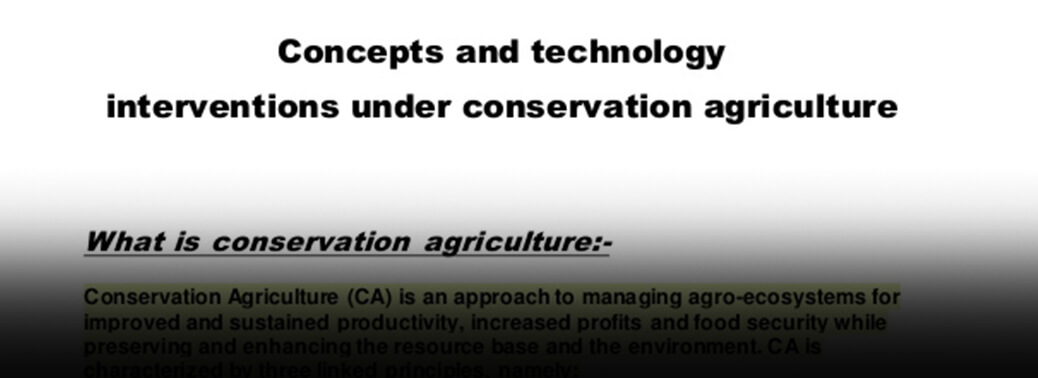
- Kisan Suvidha Mobile Application: To facilitate dissemination of information to farmers on the critical parameters viz., Weather; Market Prices; Plant Protection; input Dealers (Seed, Pesticide, Fertilizer) Farm Machinery; Soil Health Card; Cold Storages & Godowns, Veterinary Centres and Diagnostic Labs.
- Indian Council of Agriculture Research (ICAR) Mobile Apps: It has compiled more than 100 mobile apps developed by ICAR, State Agricultural Universities and Krishi Vigyan Kendras. These mobile apps developed in the areas of crops, horticulture, veterinary, dairy, poultry, fisheries, natural resources management and integrated subjects, offer valuable information to the farmers, including package of practices, market prices of various commodities, weather related information, advisory services, etc.
- Development of mKisan Portal for sending advisories on various crop related matter to the registered farmers through SMSs.
- Launching of e-National Agriculture Market initiative to provide farmers an electronic online trading platform.
- Implementation of Agricultural Marketing Infrastructure, sub-scheme of Integrated Scheme of Agricultural Marketing, in order to improve/create scientific storage capacity for storing farm produce, processed farm produce and to reduce post-harvest storage loss. Introduction of Soil Health Card Scheme to assist State Governments in providing Soil Health Cards to all farmers across the country once in a cycle of 2 years Soil health card provides information to the farmers on nutrient status of their soil along with recommendations on appropriate dosage of nutrients to be applied for improving crop productivity and soil fertility.
- Providing subsidies under National Food Security Mission (Oil Seeds and Oil Palm) to farmers on seed components, transfer of technologies, production inputs and water carrying devices. Financial assistance is also being provided under this scheme for block demonstration, frontline demonstration, farmers training to educate farmers to adopt modern techniques of farming to yield good crop economically.
- Use of space technology for various programmes/ areas such as Forecasting Agricultural Output using Space, Agro-meteorology and Land-based Observations project, Coordinated programme on Horticulture Assessment and Management using geo- informatics project, National Agricultural Drought Assessment and Monitoring System, Rice-Fallow Area Mapping and intensification, geo tagging of infrastructure and assets created under Rashtriya Krishi Vikas Yojana, and Crop Insurance.
- Using machine learning process along with different computer algorithm for crop classification and area estimation.
Organic Farming in India
24, Jun 2019
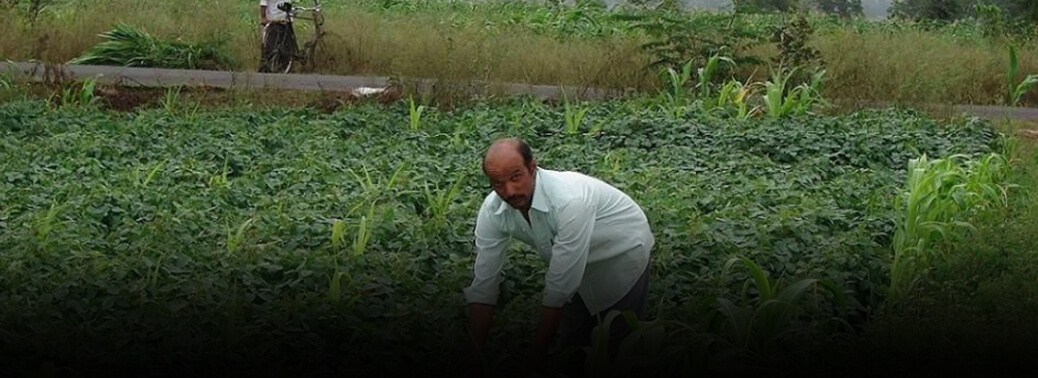
Why in News?
- Government of India has been promoting organic farming under two dedicated schemes namely Mission Organic Value Chain Development North Eastern Region (MOVCDNER) and Parampragat Krishi Vikas Yojana (PKVY) since 2015 through State Governments.
Organic Farming in India:
- Under these schemes, support has been provided for formation of farmers’ clusters/ Farmer Producer Organisation; incentives to farmers for input procurement, value addition including post-harvest infrastructure creation, packaging, branding, publicity, transportation, organic fairs etc..
- Organic Farming has also been supported under other schemes viz Rashtriya Krishi Vikas Yojana (RKVY) and Mission for Integrated Development of Horticulture (MIDH), Network Project on Organic Farming under ICAR.
- Third party certification of organic farming is promoted by Agriculture Processed Food and Export Development Authority (APEDA), Ministry of Commerce.
Mission Organic Value Chain Development for North East Region:
- Mission Organic Value Chain Development for North East Region (MOVCD-NER) is a Central Sector Scheme, a sub-mission under National Mission for Sustainable Agriculture (NMSA), launched by the Ministry of Agriculture and Farmers Welfare for implementation in the states of Arunachal Pradesh, Assam, Manipur, Meghalaya, Mizoram, Nagaland, Sikkim and Tripura, during the 12th plan period.
- The scheme aims development of certified organic production in a value chain mode to link growers with consumers and to support the development of entire value chain starting from inputs, seeds, certification, to the creation of facilities for collection, aggregation, processing, marketing and brand building initiative.
Paramparagat Krishi Vikas Yojana:
- Paramparagat Krishi Vikas Yojana is an elaborated component of Soil Health Management (SHM) of major project National Mission of Sustainable Agriculture (NMSA).
- Under PKVY Organic farming is promoted through adoption of organic village by cluster approach and PGS certification.
Scheme Envisages:
- Promotion of commercial organic production through certified organic farming.
- The produce will be pesticide residue free and will contribute to improve the health of consumer.
- It will raise farmer’s income and create potential market for traders.
- It will motivate the farmers for natural resource mobilization for input production.
35,000 KM Highways to be built by 2022
23, Jun 2019
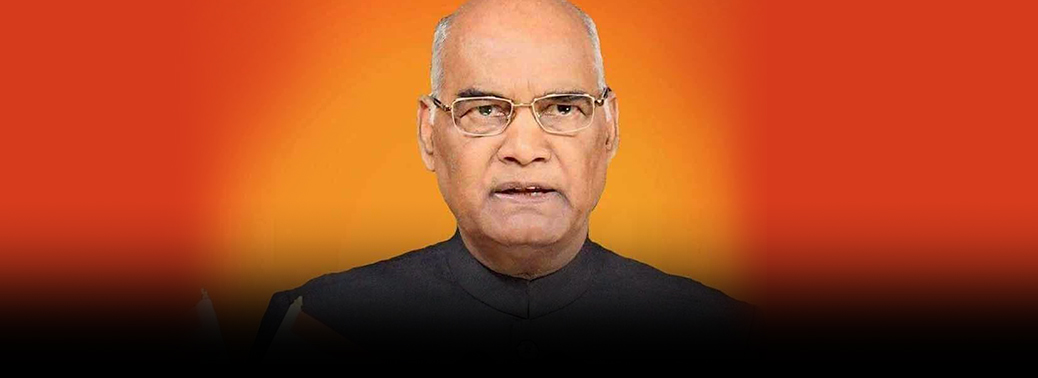
- The government will build 35,000 km of highways, besides expressways, by 2022.
- Under the ‘Bharatmala Project’, construction or upgradation of about 35,000 kilometres of National Highways is to be undertaken by 2022.
- In addition, under the ‘Sagarmala Project’, a network of good-quality roads is being constructed in coastal areas and areas adjoining ports.
Asean Vows to Tackle Plastic Waste
23, Jun 2019
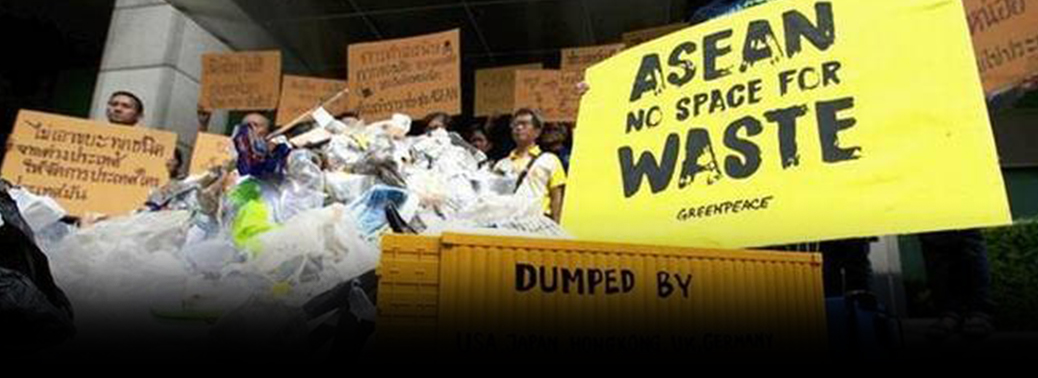
- It is learned that five countries viz; China, Indonesia, Philippines, Vietnam, and Thailand dump more than half of the eight million tonnes of plastic waste that end up in oceans every year.
- This was reported by the Ocean Conservancy report.
What is Ocean Conservancy Report?
- It is an international NGO that strives to keep the oceans clean. Founded in 1972.
- Their first initiative was the Whale Protection Fund, which focused on saving whales and protesting commercial whaling by Russia and Japan.
- Ocean Conservancy seeks solutions for a healthy ocean and the wildlife and communities that depend on it.
Bangkok Declaration 2019:
- ASEAN leaders are expected to sign the declararion on fighting the marine waste – to prevent and significantly reduce marine debris.
- The agreement does not impose penalities on countries or companies which fail to specify measures to tackle the problem.
- It does not mention anything on single use plastics which are more harmful for the nature.
What are single Use Plastics?
- Single-use plastics, often also referred to as disposable plastics, are commonly used for plastic packaging7 and include items intended to be used only once before they are thrown away or recycled.
- These include, among other items, grocery bags, food packaging, bottles, straws, containers, cups and cutlery.
Other issue with Plastic Waste:
These Southeast Asian nations are the world’s top importers of trash from developed countries like the U.S and Canada.
These wastes often end up in landfills and waterways without being properly processed.
Government to extend foreign currency loans to Exporters
23, Jun 2019

- India is a net importer of commodities.
- This impacts India’s balance of payments, hence the country needs to strengthen its exports. In order to boost exports, the government has subsidized several trade related issues. However, such steps have been inadequate. Moreover, they have burdened the exchequer.
- Hence the government now plans to enhance foreign currency loans by working with bankers. The government has decided to enhance the role of Export Credit Guarantee Corporation of India as an agency for exporters.
What is Export Credit Guarantee Corporation of India?
- ECGC Ltd. (Formerly known as Export Credit Guarantee Corporation of India Ltd.) wholly owned by Government of India, was set up in 1957.
- It was set up with the objective of promoting exports from the country by providing credit risk insurance and related services for exports.
- ECGC is essentially an export promotion organization, seeking to improve the competitiveness of the Indian exports by providing them with credit insurance covers.
- The Corporation has introduced various export credit insurance schemes to meet the requirements of commercial banks extending export credit. The insurance covers enable the banks to extend timely and adequate export credit facilities to the exporters.
ECGC Provides:
- A range of insurance covers to Indian exporters against the risk of non – realization of export proceeds due to commercial or political risks
- Different types of credit insurance covers to banks and other financial institutions to enable them to extend credit facilities to exporters and
- Export Factoring facility for MSME sector which is a package of financial products consisting of working capital financing, credit risk protection, maintenance of sales ledger and collection of export receivables from the buyer located in overseas
REN21’S Renewable 2019 Global Status Report
19, Jun 2019
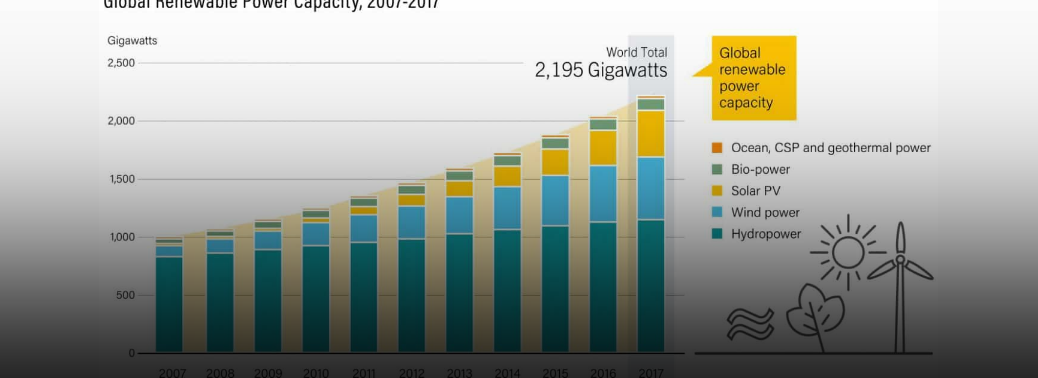
Why in News?
- The REN21’s Renewable 2019 Global Status Report (GSR) was recently released.
Global prospects of the Report:
- Renewables now supply around 26 per cent of global electricity production but the transport, cooling and heating sectors lag far behind in renewable adoption.
- Underlining the subsidy support being given to fossil fuel, the GSR read that lack of political will and fossil fuel subsidies are threatening to derail the crucial UN 2030 Climate and Development Goals.
- Renewable energy’s share in power consumption is increasing undoubtedly, but people would have consumed more had policy makers prioritized the sector. Erratic policy decisions kept the world from using the sector to its potential in meeting climate change targets, added the report.
Indian Case:
- India ranked fourth globally for new investment in renewable energy in 2018.
- India’s new power generation capacity from solar photovoltaic panels decreased compared to 2017, according to the report.
- However, India placed fifth, overtaking Italy, with 33 gigawatts (GW) total installed capacity. The report confirmed that installed renewable power capacity was more than that of fossil fuel and nuclear power combined for the fourth consecutive year.
- Around 100 GW of solar PV were added in 2018 which is enough to meet more than 25 per cent of electricity demand in France.
Decrease in Investments:
- Lack of ambitious and sustained policies to drive decarburizing in heating, cooling and transport sectors indicates that countries are not trying to maximise the benefit of energy transition.
- The investment has decreased 16 per cent compared to 2017. It attributes this to factors like:
-
- Land and transmission constraints,
- 25 per cent safeguard duty on imports from China and Malaysia
- Flaws in tender scheme
- Tax uncertainties
World Population Prospects 2019: UN
19, Jun 2019
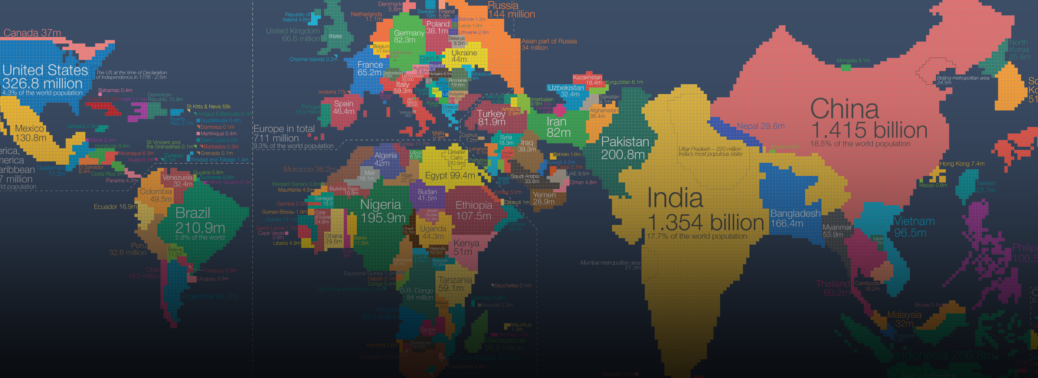
- According to the World Population Prospects 2019, India Will Become the Most Populous Nation by 2027.
- The 2019 revision of the World Population Prospects is the twenty-sixth edition of the United Nations population estimates and projections.
- It presents population estimates from 1950 to the present for 235 countries or areas, underpinned by analyses of historical demographic trends.
- India’s population will touch 1.64 billion by 2050, while that of China would come down by 1.4 billion.
India’s Demographic dividend will peak by 2047:
- Although absolute numbers in population is increasing in India, the rate of growth is declining. The rate of growth of population is highest in Sub- Saharan Africa.
- Nigeria is expected to add 200 million to the world population thereby replacing U.S to become the third most populous country. In India the working age population is growing faster than other groups. Globally it’s the post working age population that is growing the fastest. This implies that India should invest more on education and health especially on young people.
Key Facts of the Report:
- Confirms that the world’s population continues to grow, albeit at a slowing rate.
- Highlights the unprecedented ageing of the world’s population.
- Describes how international migration has become an important determinant of population growth and change in some parts of the world.
- Confirms the ongoing global increase in longevity and the narrowing gap between rich and poor countries.
Joint Monitoring Programme (JMP) report by UN Organisations
19, Jun 2019
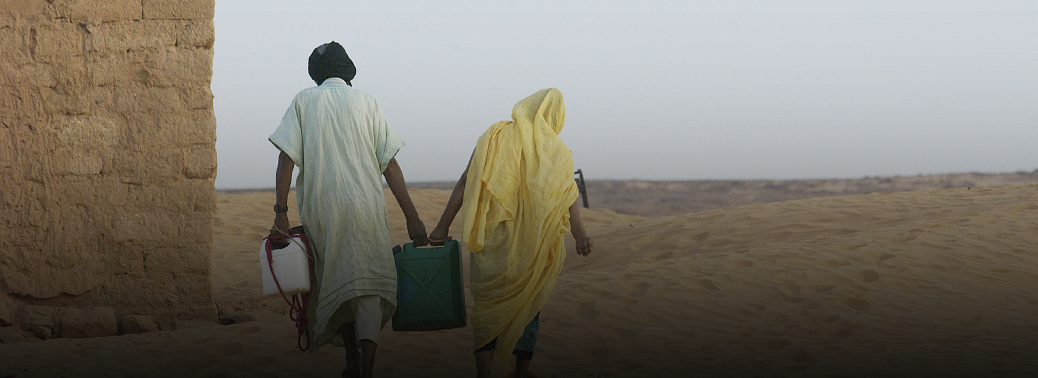
- Almost 2/3rd of the global population which stopped defecating openly between 2000 and 2017 has been from India.
- However there has been no growth in the population with access to piped water facilities. Large inequalities remain between urban and rural areas.
- Increase in population (with access to protected drinking water facilities within 30 metres) from 79% in 2000 to 93% in 2017.
- In rural India only 32% have access to piped water, in urban areas it is 68%.
- The South Asian region, accounted for almost three-fourths of the population who stopped defecating in open between 2000 and 2017.
- Only 30% of the country’s wastewater is treated at plants, in comparison to 80% global average.
What is JMP?
- The Joint WHO/UNICEF Joint Monitoring Programme is affiliated to UN- Water and was Established in 1990.
- The JMP’s objectives are to provide regular global reports on drinking-water and sanitation coverage to facilitate sector planning and management, to support countries in their efforts to improve their monitoring systems, and to provide information for advocacy.
- For the Sustainable Development Goals, the JMP uses its 25 years of experience, and focuses on drinking water, sanitation and hygiene. The Joint Monitoring Programme report, Progress on drinking water, sanitation and hygiene: 2017 update and Sustainable Development Goal baselines, presents the first global assessment of “safely managed” drinking water and sanitation services. JMP is part of the UN-Water Integrated Monitoring Initiative for SDG 6, reporting on progress towards SDG targets 6.1 and 6.2.
Data Localisation
19, Jun 2019
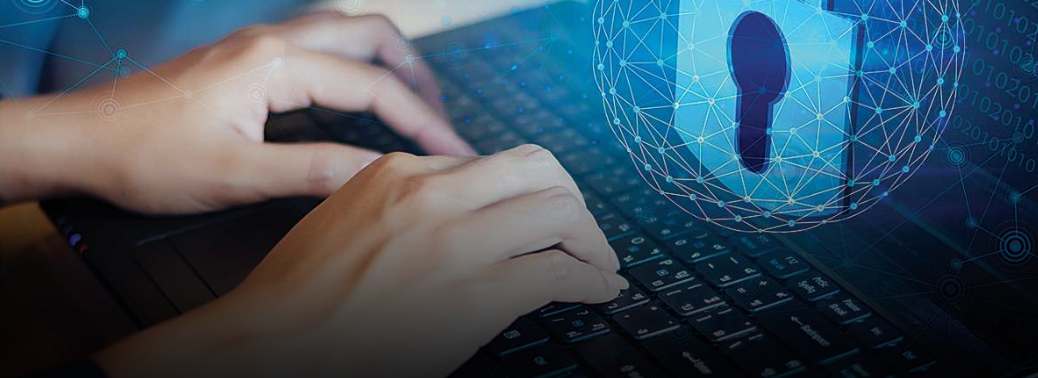
Context:
- RBI last year mandated companies to store their payments data “only in India” so that the regulator could have “unfettered supervisory access”.
- The RBI will examine concerns around its strict data localisation rules that require storing of customer data exclusively in India without creating mirror sites overseas.
What is Data Localisation:
- Data localisation laws refer to regulations that dictate how data on a nation’s citizens is collected, processed and stored inside the country.
Significance of Data Localisation:
- Data localisation is critical for law enforcement.
- Access to data by Indian law agencies, in case of a breach or threat, cannot be dependent on the whims and fancies, nor on lengthy legal processes of another nation that hosts data generated in India.
What India can do:
- It may not be wise for India to have the liberal rules as developed nation.
Legislation backup:
- Only Mandatory rule on data localisation in India is by the Reserve Bank of India for payment systems. Justice Sri krishna Committee report – to identify key data protection issues in India and recommend methods of addressing them”.
Libra Facebook Cryptocurrency
19, Jun 2019

Context:
- Facebook has linked with 28 partners in a Geneva-based entity called the Libra Association, which will govern its new digital coin set to launch in the first half of 2020.
- Facebook has also created a subsidiary called Calibra, which will offer digital wallets to save, send and spend Libras.
- Calibra will be connected to Facebook’s messaging platforms Messenger and WhatsApp.
- Calibra will conduct compliance checks on customers who want to use Libra, using verification and anti-fraud processes that are common among banks.
- Libra is a global currency and financial infrastructure.
- it is a digital asset built by Facebook and powered by a new Facebook-created version of blockchain, the encrypted technology used by bitcoin and other cryptocurrencies.
Why Libra?
- Facebook claims it wants to reach the 1.7 billion people around the world who do not have access to a Bank Account.
Authority Incharge:
- The Libra Association is described by Facebook as an independent, not-for-profit organisation based in Switzerland.
- It serves two main functions:
-
- To Validate Transactions on the Libra blockchain and
- To Manage the Reserve Libra is tied to and allocate funds to social
- It functions as what is known as a “Stablecoin”, pegged to existing assets like the dollar or euro, in the aim of making it less subject to the volatility that many Cryptocurrencies Experience.
What is a Cryptocurrency?
- A cryptocurrency is a digital or virtual currency that uses cryptography for security.
Advantages:
- A cryptocurrency is Difficult to Counterfeit because of the security feature of blockchain technology.
- It is not issued by any central authority, rendering it theoretically immune to government interference or manipulation.
- Cryptocurrencies hold the promise of making it easier to transfer funds directly between two parties in a transaction, without the need for a trusted third party such as a bank or credit card company; these transfers are facilitated through the use of public keys and private keys for security purposes.
- Fund transfers are done with minimal processing fees, allowing users to avoid the steep fees charged by most banks and financial institutions for wire transfers.
- At the same time, there is no central authority, government, or corporation that has access to your funds or your personal information.
Disadvantages:
- The Semi-Anonymous Nature of Cryptocurrency Transactions makes them well- suited for a host of nefarious activities, such as money laundering and tax evasion.
- Since prices are based on supply and demand, the rate at which a cryptocurrency can be exchanged for another currency can fluctuate widely.
- The first cryptocurrency to capture the public imagination was Bitcoin, which was launched in 2009 by an individual or group known under the pseudonym, Satoshi Nakamoto.
- Bitcoin’s success has spawned a number of competing cryptocurrencies, known as “Altcoins” such as Litecoin, Namecoin and Peercoin, as well as Ethereum, EOS, and Cardano.
Cryptocurrency in India:
- RBI does not recognize any sort of Cryptocurrency as legal tender.
- The Reserve Bank has explicitly said that “entities regulated by RBI shall not deal with or provide services to any individual or business entities dealing with or settling VCs”.
Godavari Mangroves at Coringa Wildlife
19, Jun 2019
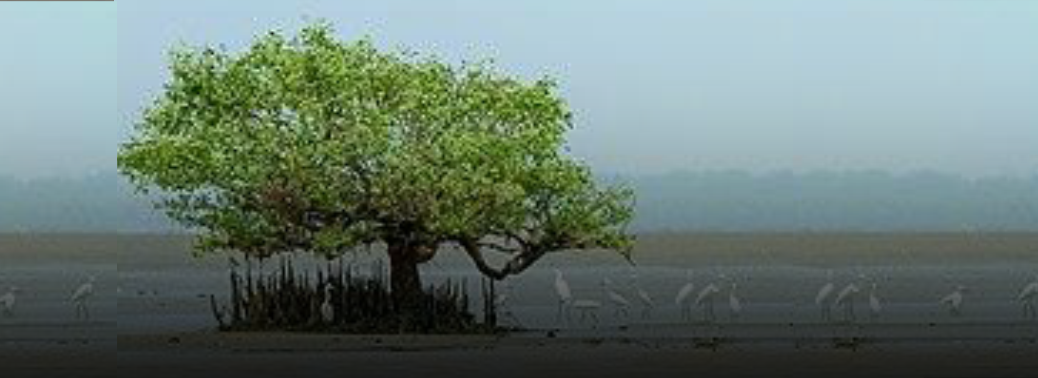
Context:
- The government has begun the process to get UNESCO’s World Heritage Site status for Godavari Mangroves at Coringa Wildlife Sanctuary, near Kakinada.
- Once the Coringa sanctuary gets the heritage site tag, UNESCO will help develop tourism and protect the wildlife in the mangroves.
- Coringa Wildlife Sanctuary is 18 km from the port city of Kakinada. This sanctuary is a part of the Godavari estuary
UNESCO’s World Heritage:
Mission:
- Encourage countries to sign the World Heritage Convention and to ensure the protection of their natural and cultural heritage. Encourage States Parties to establish management plans and set up reporting systems on the state of conservation of their World Heritage sites; Provide emergency assistance for World Heritage sites in immediate danger
Funding:
- The World Heritage Fund provides about US$4 million annually to support activities requested by States Parties in need of international assistance.
- A UNESCO World Heritage Site is a place that is listed by the United Nations Educational, Scientific and Cultural Organization (UNESCO) as of special cultural or physical significance.
- It is maintained by the international World Heritage Programme
Status of Sites:
- The designated sites mainly get protection as legal status is granted under the programme
-
- Mainly Protection in War Times
- Geneva Convention, its Articles, Protocols and Customs
- Hague Convention for the Protection of Cultural Property in the Event of Armed Conflict and international
Mendeleev and his Periodic Table of Elements
18, Jun 2019
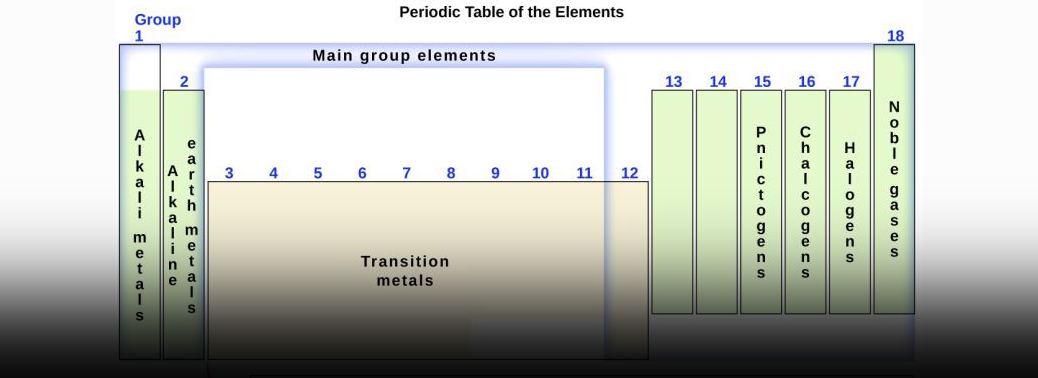
The Modern Periodic Table:
- The periodic table is an arrangement of all the elements known to man in accordance with their increasing atomic number and recurring chemical properties.
- They are assorted in a tabular arrangement wherein a row is a period and a column is a group. Until 1863, the world was aware of only 56 known elements.
- The rate of scientific progress was such that every year, a new element was being discovered. It was during this time that Mendeleev came up with the idea of the Periodic Table.
- He published the Periodic Table in his book– The Relation between the Properties and Atomic Weights of the Elements.
- Mendeleev said that he arrived at the idea in his dream, where he saw all chemical elements falling into place on a table according to their chemical properties.
- Mendeleev had found a definitive pattern following which, each element could be placed according to their atomic weight.
- He had also predicted the qualities of the ‘missing’ (yet to be discovered) elements and gave them Sanskrit names.
Evolution of the Table:
- The noble gases including helium (He), neon (Ne), argon (Ar), krypton (Kr), xenon (Xe), and radon (Rn) were added to the table between 1895 and 1901.
- Likewise, additions have been made to the periodic table as new elements have been discovered in the last hundred years.
- In 1914, English physicist Henry Gwyn-Jeffries Moseley found out that each atomic nucleus can be assigned a number, according to the number of protons in that atom. This changed the way the periodic table worked. The table was redesigned according to the atomic number of elements rather than their atomic weight. Rare-earth elements, including the elements in the Lanthanide series, were included in the atomic table in the late 19th century.
SHADOW BANKING SYSTEM
18, Jun 2019
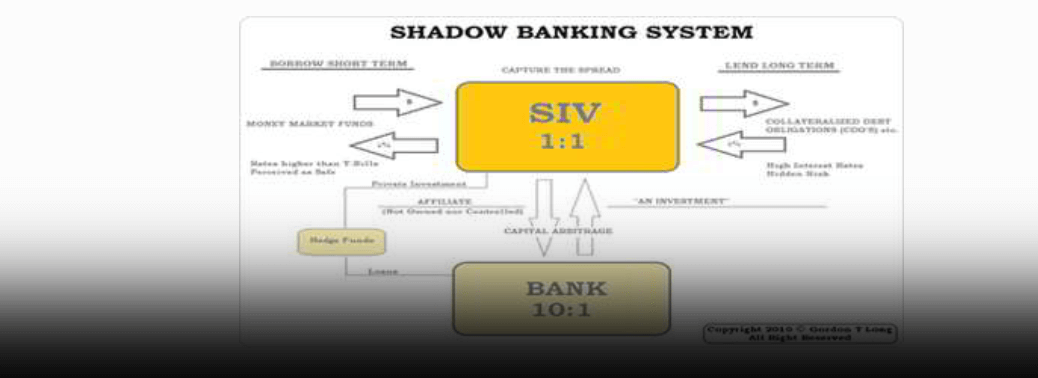
- A shadow banking system is the group of financial intermediaries facilitating the creation of credit across the global financial system but whose members are not subject to regulatory oversight. The shadow banking system also refers to unregulated activities by regulated institutions. The shadow banking system consists of lenders, brokers, and other credit intermediaries who fall outside the realm of traditional regulated banking. These include investment banks, mortgage lenders, money market funds, insurance companies, hedge funds, private equity funds and payday lenders, all of which are a significant and growing source of credit in the economy.
- One of the leading factors that caused the financial crisis of 2007 was the risk taking and failure of shadow banks in the advanced countries.
- In India, the NBFCs are sometimes categorized as the shadow banking sector, though they are well regulated now. In the context of the developing countries, the shadow banking sector plays an important role in promoting financial inclusion. They are very customer friendly, market oriented, innovative and flexible.
- The main advantages of shadow banks lie in their ability to reduce transaction costs, their quick decision-making ability, and customer orientation and prompt delivery of services.
- New Directive under IT Act, 1961. Issued by Central Board of Direct Taxes, under“Compounding of Offences Under Direct Tax Laws, 2019”.
- A person cannot get any sort of relief in an Income Tax evasion offence, if he/she indulges in serious criminal cases of money laundering, terror financing, corruption, possession of benami properties and undisclosed foreign assets.
India’s First Dinosaur Museum-Cum- Park in Gujarat
18, Jun 2019
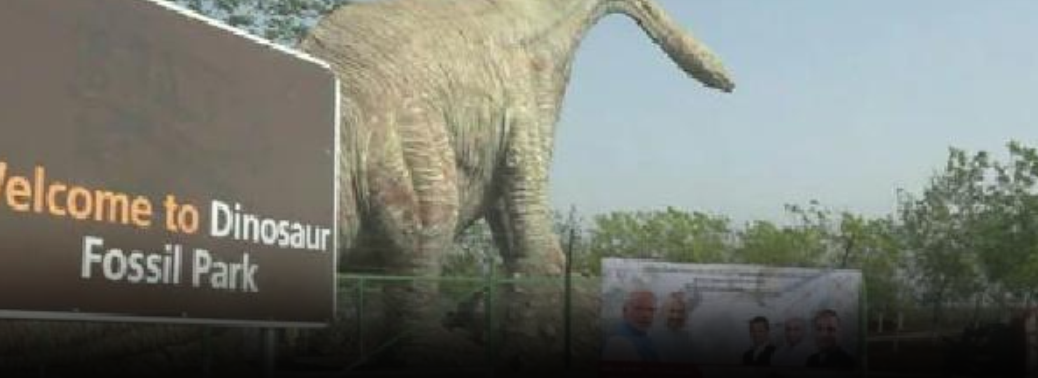
Why in News:
- Gujarat Chief Minister Vijay Rupani inaugurated India’s first Dinosaur-Museum-cum-Park in Balasinor city in the Mahisagar district.
Highlights:
- It is set to give visitors a Jurassic Park kind of feel.
- The museum is located in Raiyoli area in Balasinor city which exhibit remains of various dinosaurs and fossil records. Dinosaur Museum cum Park is the first such park in the country and the world’s third park. Raiyoli area is the third largest dinosaur fossil site in the world and it is also the second largest dinosaur hatchery in the world, where thousands of eggs had been found.
- It is equipped with modern technology like 3D projection, virtual reality presentations, interactive kiosks and life-size dinosaur replicas.
- It will display the evolution of dinosaurs on earth and probable reasons for their extinction. It is a world-class tourism spot and will prove useful to students as well as experts.
BT BRINJAL
18, Jun 2019
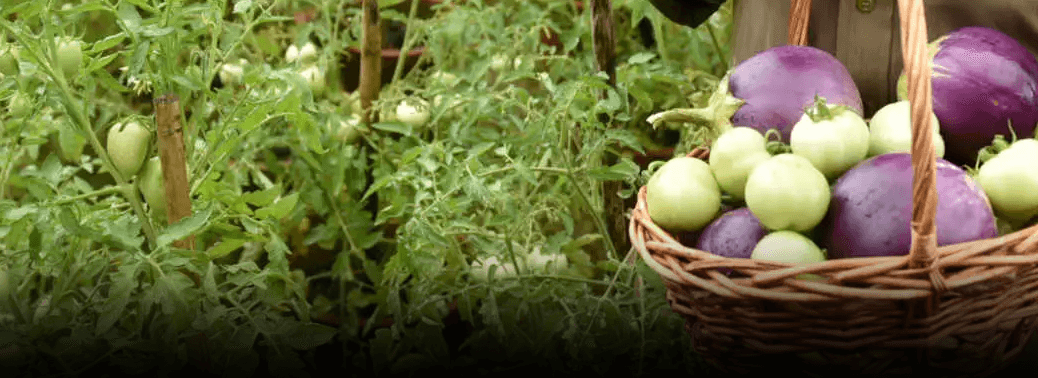
- Bacillus Thuringiensis Brinjal, popularly known as Bt brinjal is a type of Genetically Modified crop.
- Bt brinjal, a genetically modified strain created by inserting Cry 1Ac gene from the soil bacterium Bacillus thuringiensis into Brinjal.
- It gives resistance against Lepidopteron insects like brinjal fruit and shoot borer and fruit borer. Mechanism- ingestion
- of Bt toxin by insect there is disruption of digestive process resulting in death of insect.
Concern:
- Potential health effects.
- terminator seed- i.e. farmer will be compel to buy seed from the company every time.
Genetically Modified Crop:
- It Involves inserting DNA into Genome of an organism
- UPSC question on Genetic Modified Crops- 2018.
FOOD PROCESSING INDUSTRY
18, Jun 2019
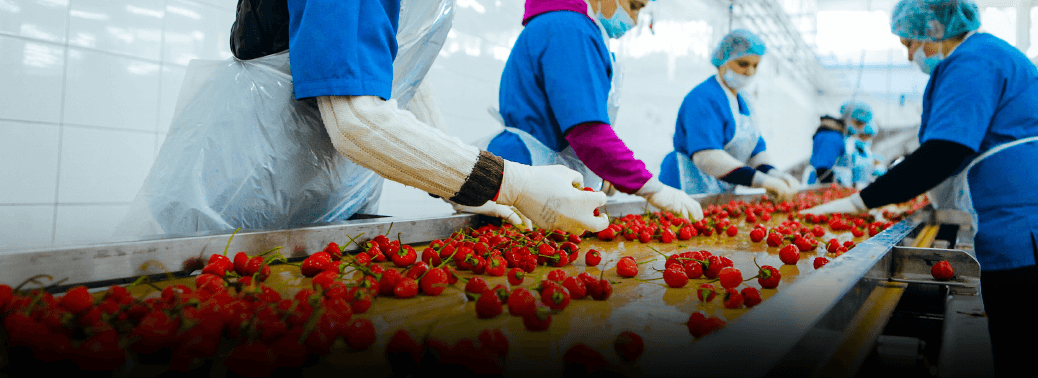
Context:
- World Food India 2019 will be the biggest gathering of all global and domestic stakeholders in Food Processing Sector.
World Food India:
- The government initiated biennial event- World Food India to promote food processing sector at global level.
- WFI 2019 will be held from 1-4th November 2019 in New Delhi and will position India as Food Processing Destination of the World.
- The tagline of the event will be “Forging Partnerships for Growth”.
Why there is need to focus on Food Processing Industry:
- India produces more fruits & vegetables in comparison to food grains. There is huge loss of Fruits and Vegetable due to perishable nature of it.
- As per APEDA (Agricultural and Processed Food Products Export Development Authority), India loses Rs. 13,000 to 15,000 Crore every year on waste of fruits and vegetables.
- Non availibity of Storage facility is issue, only 2% of the perishable produce has that Facility.
Scope for Food Processing Industry:
- Due to Increase in Standard living of people– there is demand for quality food , Packed food.
- Packaging increases shelf life of food.
- farmers also shifting production towards horticultural crops to cash in on growing demand of packaged food.
- food, it can be customized to suit the nutritional requirements of groups such as the elderly, pregnant women, infants, young children and athletes.
- Food processing industry is sun rise industry.
- Indian Food Processing Industry has grown tremendously recording 11% growth rate, which is twice the pace of Global Industry.
Global Market:
- Global Food processing industry market valued around USD 3.4 trillion.
- Only 6 percent of processed foods are traded across borders compared to 16 percent of major bulk agricultural commodities.
- There is room for India to capture this space in international market.
Issues in Food Processing Industry:
- Productivity of Food product is quite low compared to international standard. Supply Chain Issue – Backward and Forward Linkage Gap.
- Certification infrastructure gap.
Government Initiative:
- The Scheme of Mega Food Park aims at providing a mechanism to link agricultural production to the market by bringing together farmers, processors and retailers so as to ensure maximizing value addition, minimizing wastage, increasing farmers income and creating employment opportunities particularly in rural sector.
NATIONAL SMALL SAVINGS FUND
17, Jun 2019
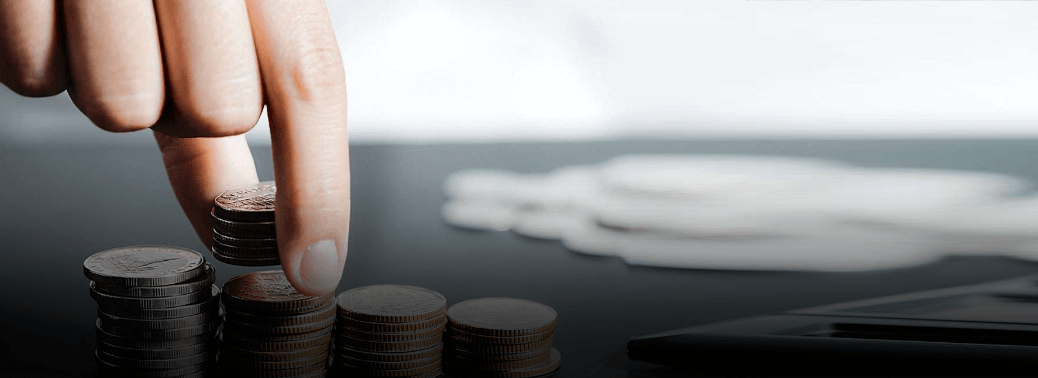
It has been established under Public Account of India since 1st April 1999. It Comprises of
- Postal Deposits
- Savings Certificates and Kissan Vikas Patra
- Social Security Schemes such as PPF and Senior Citizens Savings
Although it reflects a borrowing mechanism, its transactions are not included in the fiscal deficit of the government. The balance in the fund is invested in Central and State Government securities.
INDIAN ECONOMY
17, Jun 2019
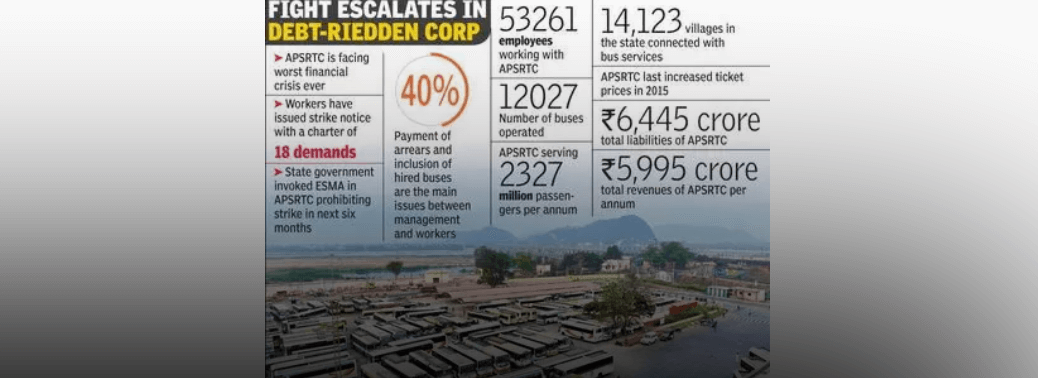
- What are Debt Instruments?
- They are either paper or electronic obligations that allows the issuing party to raise funds by promising to repay the lender in the terms of the contract.
- E.g. Bonds, debentures, certificates etc.
Dwindling automobile sales market in India Since Nov 2018:
- The major reason for such a downfall in the market is the reduction in the private consumption expenditure.
What is Private Consumption Expenditure?
- It is defined as the value of the consumption goods and services acquired and consumed by households.
- It is influenced by the following factors: Inflation or price rise
- Increase in taxes which may reduce personal savings. Unemployment
G 20 NATIONS
17, Jun 2019

- It is an international grouping that consists of central bank governors and government representatives of 19 countries and the EU.
- The nations consist of 90% of world’s GDP, 80% of world trade and 2/3rd of world’s population.
- It is an initiative of the World Bank, IMF and the WTO.
- The G20 summit this is scheduled to take place in Osaka in Japan on June 28-29. Ahead of this, the G20 Environmental Ministers met near Karuizawa, Japan.
Outcome:
- Adopt a new implementation framework for actions to tackle the issue of marine plastic waste on a global scale.
- It had earlier adopted G20 action plan on marine litter in 2017 at Hamburg Summit.
- It is to follow a life cycle approach to prevent and reduce plastic waste litter discharge into oceans. The countries will share best practices, promote innovation, and boost scientific research and analytical methodologies.
- Japan will host the first meeting under the framework during the G20 Resource Efficiency Dialogue.
INDRAYANI RIVER
17, Jun 2019
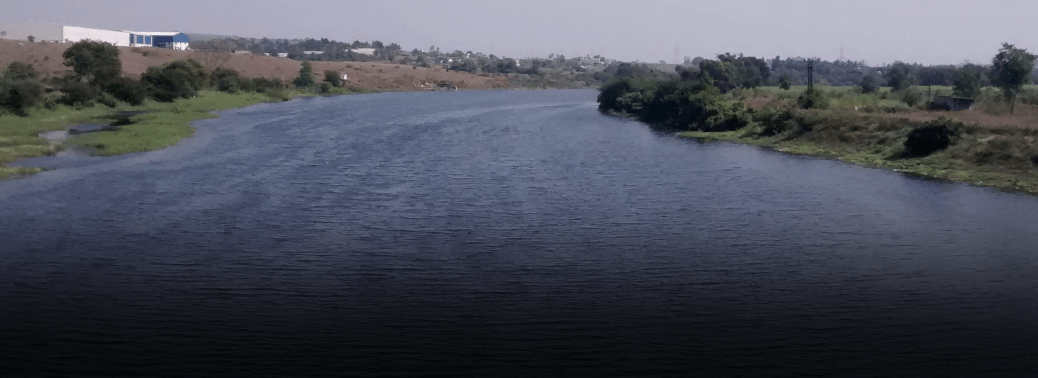
- UPSC Questions Related to rivers -cultural place associated, historic place associated, tributaries, National parks, wild Sanctuary, Biosphere.
- UPSC Question on Rivers- Chandrabhaga 2019, Cauvery 2019, Yammuna 2016, Bhramaputra 2017,
Context:
- Incident in which around 4,000 fishes died in Indrayani River, Maharashtra.
About:
- Indrayani river is one of the important place where holy Pandarpur with cultural significance is located. Indrayani river joins Bhima River, which is tributary of Krishna River
Bhima River:
- Bhima River originates in Bhimashankar hills near Karjat in Maharashtra Holy City of Pandharpur is on the bank of Bhima River
- Bhimashankar is one of the twelve esteemed Jyotirlinga shrines
Krishna River:
- It is the fourth largest river in India after the Ganga, Godavari and the Narmada Krishna River rises at Mahabaleswar in district Satara
- It flows through Maharastra, Andhra Pradesh, Telangana and Karnataka.
- Home to Ancient Satavahana and Ikshvaku Dynasty kings. Vijayawada is the largest city
Narmada:
- Krishna River rises at Mahabaleswar in district Satara
- It flows through Maharastra, Andhra Pradesh, Telangana and Karnataka.
- Home to ancient Satavahana and Ikshvaku Dynasty kings. Vijayawada is the largest city
Places Associated with Indrayani River:
- Bhaja & Kanheri Caves
- Rock cut architecture in India
- Bhaja Caves located at the Valley of Indrayani River, near Lonavala Approximately 2,200 years ago, circa 200 BC
- Chaitya and Viharas
NEW SPECIES IN EASTERN HIMALAYA- BALSAMS OR JEWELWEEDS.
16, Jun 2019
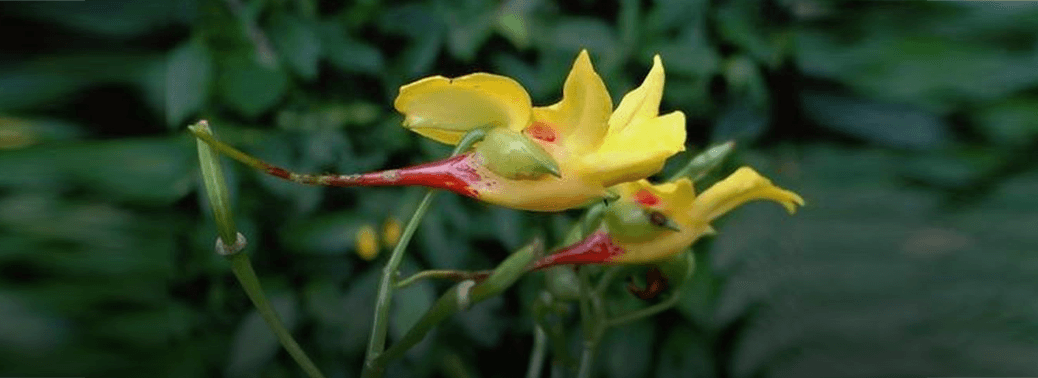
- Context-23 new species from the eastern Himalayas of a group of plants commonly known as Balsams or jewelweeds
- UPSC mainly asks question regarding new species of plant, animal found in Western Ghats, Himalayas, North east, Andaman and Nicobar.
- UPSC prelims questions- Himalayan nettle (Girardinia diversifolia)-2019
- There are about 230 species of Balsams found in India and majority of them are found in the eastern Himalayas and Western Ghats. These species need proper conservation initiatives as they are highly vulnerable, especially to climate change.
- They are mostly found in stream Margins, Moist Roadsides, Near Waterfalls and Wet Forests.
INTERNATIONAL ECONOMY
16, Jun 2019
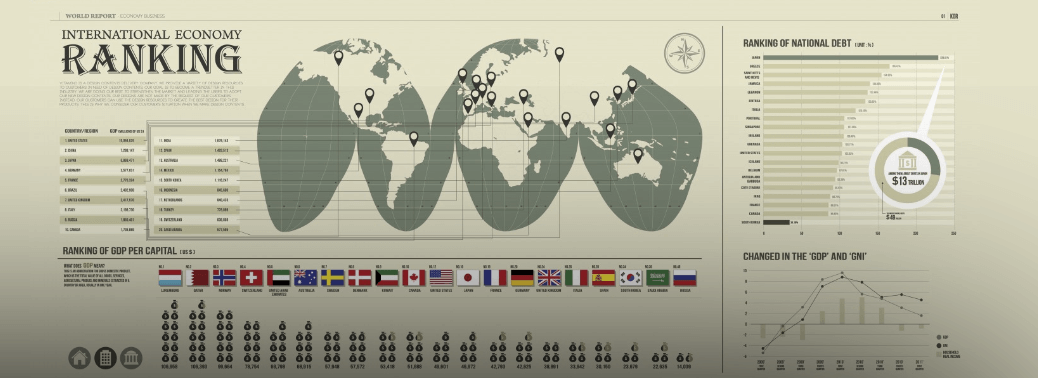
- India imposed tariffs on 29 goods from the U.S from June 16. This is a retaliatory measure taken by India against the U.S imposing tariffs on steel and aluminium form 2018.
- This is also a part of the ongoing tussle between the nations with regard to the protectionist tendencies in the global economy.
- 301 Probe: It is a law in the U.S that allows the President to impose tariffs and other restrictions on a country to protect U.S companies from unfair trade practices by other countries.
- U.S has imposed 301 probe on China in 2017, and is likely to impose the same on India Very soon
BIO TECHNOLOGY
13, Jun 2019
7.1 INTRODUCTION
- It involves development of certain special life forms & systems that help in obtaining maximum benefits not only for mankind but also for other living organisms while obtaining in optimum.
- Genetic Engineering or recombined DNA technology is considered a tool of biotechnology in whichby deliberate human manipulation a foreign but desirable gene is inserted into DNA of an unrelated organism resulting in formation of a DNA molecule that has got genetic material from two or more unrelated sources.Such a DNA is called Recombinant DNA.Biotechnology has got wide ranging
a. Applications
- In the field of agriculture, biotechnology has been used to develop genetically modified organisms or transgenic
organisms that are able to produce in less time. Such organisms would ensure food security in food source country.
- Biotechnology has widest application in the field of health.It can be used in making safe cost effective vaccines e.g.,Hepatitis
- It can be used in making important proteins such as Insulin, Thyrotropin, Somatropin, Interferon that can be of great help in treating various childhood hormonal disorder e.g.
- It can also be used in making bio- diagnostic kits which is used to detect various diseases before they become
- It can be used in the preparation of scarce enzymes such as urokinase. This enzyme helps in dissolution of blood
- In the field of Energy and Environment, Genetically Modified Bacteria can be used to enhance oil exploration by a technique called Microbial enhanced oil Recovery(MEOR) in which bacteria acts as a surface tension reducing agent (surfactants) helping in increasing oil extraction from 30% to 60%.
- GMB can also be used to transform non biodegradable wastes such as plastics, synthetic, pesticides etc
- In the field of Industry, Biotech can also be used to prepare alcohol, ethanol, acids such as lactic acid, tartaric acid, acetic acid various amino acids that are used for pharmaceutical purposes. This technology can also be used for producing vitamins, antibiotics & steroids on a massive
b. Demerits
- It can be misused to form biological weapons of mass destruction.
- The inserted gene segment may express to form a harmful protein that may result in various diseases
- Biotech holds a lightly possibility of bringing extinct organisms each to life
- Scientists at present stage of R & D may likely commit a mistake whose consequence can’t be foretold.
- Biotech if misused may result in depletion of biodiversity e.g.At present biotechnological research is focused in developing 29 plant varieties that are able to cater to
90 % almost of the food requirement of man kind. If such discriminate biotech research effects continue they would result in other plant loss species along with dependent plant species, as on every plant species there are
about 30 – 40 dependent animal species such efforts would interfere in the natural process of selection and evolution of biodiversity.
c. Steps taken by Government of India:
- A department of Biotechnology was established in 1986 working under ministry of Science & Technology, Department of Biotechnology is responsible for promoting, planning and coordinating various biotechnological projects taken up by GOI which are as follows:
- Development of safe and cost effective vaccines & holding immunization camps especially for weaker and more susceptible sections of society.
- Increase oil seed production by using tissue culture technique in plants. E.g. coconut.
- Developing high yielding varieties of plants and animals.
- Cattle herd improvement by Embryo Transmit Technique(ETT).
- Developing improved & safe fertility controlled
Institutes involved in this process are
- IARI – Indian Agricultural Research
- NTN – National Institute of Nutrition (Hyderabad)
- IISc – Indian Institute of Science, Bangalore
- Control Drug Research Institute (Lucknow)
- Centre for cellular & molecular biology Hyderabad
- Institute of microbial technology, Chandigarh
- International centre for genetic engineering and biotechnology established by UN Industrial Development organisation(UNIDO) to provide International Research links in biotechnology.
7.2 CLONING
- It is a process of asexual reproduction in which the offspring or the progeny produced is an exact genetic replica of the single present donor which has donated his/her genetic material by way of donating nucleus present in any of the body’s somatic or non – reproductive cell.In contrast sexual reproduction involves inheritance of genetic material from both the parents equally.JBS Haldane(America) in 1963 theorized cloning stated that every cell has the necessary technical knowhow in the form of genetic material to raise entire individual. One individual is able to create a new individual by obtaining the genetic material form any of the body’s livingcell. Male donor results in formation of a male clone whereas female donor provides female clone. Cloning also exists naturally for example, Bacteria divides asexually in bacterial clones. Monozygotic twins are clones to each other.Cloning in plants is called tissue culture technique by which large number- of disease free saplings can be produced in no time specially in those plant where the process of seed germination of e.g., sandalwood and rubber, growth and development is slow.E.g. Bamboo tissue culture is of great help in commercially valuable crops such as sugarcane, turmeric plantation crops, species etc. These crops can be micropropagated fast and desirable tree varieties can be produced rapidly increasing the profits of the farmers.
7.2.1 Animal Cloning
- Animal cloning experiment succeeded when in Feb , 1997 a team of scientists led by Professor. Ian Wilmut from Roslin Institute, Edinburg, Scotland, UK successfully cloned 1st mammal sheep Dolly. This success led to cloning of other animals since then large no of animals have been cloned E.g. Mice, Cow, Goat, pig, Rabbit, cat, mule, horse and a wild puppy known as snuppy in Seoul National university South Korea. Animal cloning experiments though are one step forward, the cloned animals have not been able to complete their life span as they have fallen prey to various genetic disease.E.g. Dolly died of arthritis and degenerative lung disease.Still animal cloning experiments can be of great helps in preserving rare species.
7.2.2 Human Cloning
- Cloning in human beings is practised by a technique known as somatic cell nuclear transfer in which a deployed nucleus containing 46 chromosomes from any of the body cells of the donar is transferred to e – nucleated egg. The manipulated egg is stimulated by electrical shocks of various chemicals to start dividing within a week.This single cell becomes a ball of 200 – 300 unspecialised cell. This stage is called as Blastocyst. Human cloning is of two types on the basis of the fate Blastocyst:
- Reproductive human cloning
- Therapeutic human cloning
7.2.2.1 Reproductive human cloning
- If blastocyst is implanted in the uterus of either surrogate or original mother, it is thought that probably it would developinto a new individual.But there has been no conclusive proof when so many cloned animals are dying of genetic diseases. Reproductive human cloning is still believed to be a for fetched
7.2.2.2 Therapeutic human cloning
- It involves use of initial unspecialised blastocyst cell to develop into genetically similar body pacts to replace the damaged or torn out body organs.Therefore therapeutic cloning provides effective genetically similarreplacement material. It is of great help in providing therapy in various degenerative

7.2.3 Uses of cloning:
- Cloning can help us understand the process of ageing and once understoodit can be effectively postponed or
- It will help us understandwhy certain adult body cells reversed to original embryonic condition of rapid division resulting in formation of cancers
- Therapeutic cloning is of greatest help in treating various degenerative diseases e.g. diabetes, Parkinson’s disease, Alzhemier, spinal cord injuries , burns etc
- Therapeutic cloning can also help in regenerating some of those body parts that do not effectively regenerate if damaged
e.g. neuron, heart muscle cells
- Reproductive human cloning can also be considered in those childless couples who are suffering from incurable infertility (unable to produce viable gametes)
7.2.4 Ban on Cloning and the ethical issues involved:
- Reproductive human cloning experiments are being opposed on various ethical & environmental grounds
- WHO has denounced R. H. C experiments considering them ethically unacceptable for the reason that they undermine society’s respect for human life.Such experiments destroy the known social structures and institutions like marriages, family etc.They would likely to bring in fundamental changes in the society as people may opt to produce their clones to raise their families without entering wed lock.Moreover family identities and relationships may get blurred. So as the offspring produced would be considered a sibling or a progeny.
- Increased cloning tendency would result in loss of genetic diversity in human It may interfere with natural process of selection affecting evolution of human beings as a species.
- The prolifer group led by Pope opposes human cloning on the ground that it is an unnatural, unnecessary man’s attempt to play the role of God.These experiments would result in large scale creation and destruction of human embryos which is similar to using human life as an experimental subject which is highly unethical.
- Human cloning experiments may be misused to raise clone armies that would result in subjugation of human race which were this clones would be consider slaves having no right what so ever
- Scientist at present stage of R& D are likely commit to mistakes that may result in serious mutationswhose consequences cannot be predicated
- This technology also misused by private individuals & organisation for commercial purposes ignoring the general interests of the society
Legal Ban
- In 1998, 19 European countries signed an agreement under which they have agreed to banhuman cloning experiments for reproductive purposes for next
20 years.USA has also banned such experiments for 10 years. Depth of Biotech in India has also banned human reproductive experiments
- In October 2004 United Nations adopted a non binding declaration that prohibited all attempts to create human life through cloning or any research achieving this aim. Therefore indirectly UNs has allowed member nations to continue with therapeutic cloning. In this regard UK became the 1st country to provide legal authorisation from Government’s Human Fertilisation & Embryology Authority to perform therapeutic cloning using human embryo to treat serious diseases. In May 2005, New Castle University which was allotted the 1st license successfully claimed to produce an early stage human embryo by nuclear transfer technique and that will be used for treating diabetes and license was given to Ian Wilmut for conducting research by using human embryo in treating motorneuron
7.3 STEM CELLS
- Stem cells are undifferentiated primitive blank cells that have not yet grown into any recognisable part of the human body.They have the ability to be coaxed to develop into any if the 220 different types of specialised cells of the body.So stem cells are the very early cell capable of transforming into any type of cells and tissues in the body
7.3.1 Types of Stem cells
- Embryonic Stem Cells
- These are far more advantageous they are highly prolific and can develop into millions of cells. Therefore they are considered totipotent in
- These cells can specialise into any type of body cells. Therefore they are pluripotent in nature but their use results in violation of ethical
7.3.1.2 Adult or Somatic stem cells
- These are some of the already specialised body cells that still
contain some of the ability to specialise differently.These cells are rare and difficult to be identified and isolated and their ability is divide and specialise is for more restricted.
E.g, Bone marrow cells, umbilical cord blood
- Wharton’s Jelly,a cushioning substance found in umbilical cord, is believed to be a rich source of obtaining stem cells non-invasively and non- Use of adult stem cells does not violate any ethical issue. Hybrid stem cells are those adult or somatic cells that can be reprogrammed to become pluripotent cells. In this adult somatic cells genetic expression is reprogrammed so that it starts functioning as embryonic cells.
- Stem cell colony/line is a self replenish able colony of embryonic stem cells from which any amount of stem cellscan be harvested without apparent limit.however it is extremely difficult to establish such a colony
as stem cell colony is highly sensitive to even slightest fluctuations in nutrient availability and environment.So far more them 78 colonies have been established by a hand full of countries, India being one of them and the 2 centres are
- Reliance life science centre, Mumbai
- National centre for Biological sciences Bangalore
7.3.1.3 Uses of Stem Cell
- Stem cell have opened a new branch of medicine known as regenerative medicine as they can be induced to develop into specific body tissues replacing the damaged ones. They can be used in Alzheimer, diabetics, Parkinsonism, burns, spinal cord injuries
- They can also be induced to develop into blood cells so that any amount the blood can be created for some blood fusionin various genetic diseases as visible cell anaemia,
- Stem cells also help in development cheap and effective drugs within a short period of time as they can be made to grow into specific body tissues on which drugs can be tested without violating animal rights as well. They can be used to study the process of embryonic development and therefore this understanding would minimise the occurrence of congenital malformations.
7.3.1.4 Ethical question involved in use of stem cells
- There is no ethical question, however, the Prolifer group led by the Pope opposes the Stem cell research on ethical grounds. It considers life to start from the very 1st day of conception and therefore it is highly unethical to use living human embryos as experimental
- This research would also result in large scale construction and destruction of human embryo On the other hand some researchers maintain that within first 14 days embryo can’t be considered a living human being as the Stem cell has not yet developed into identifiable body organs. They also say to treat infertility; multiple embryos are created for the process for Invitro fertilisations (IVF) to treat infertility. These leftover embryos can be put to research for treating various degenerative human ailments.
- Other countries involved in Stem cell research are Australia, Japan, Singapore, Israel, Sweden, U.K, South Korea and
7.4 HUMAN GENOME PROJECT
- It was one of the most innovative the largest biological project ever launched as a consortium of scientists from 18 different countries. It was launched in 1990 its succeeded including 24 different human chromosomes by June 2 Human Genome refers to complete set of genetic instructions in the form of nitrogenous base pair that constitute DNA in every cell of the human body.
- This DNA is present in the form of tightly coiled thread like structure known as chromosome. Human Genome Project succeeded in decoding 1st the 22ndchromosome which is the smallest chromosome followed by 21st and 20th and so
7.4.1 Benefits of Human Genomics
- Human Genome is of great value in the field of molecular medicine as it helps in improving diagnosis of diseases and identifying India’s genetic predisposition to a particular disease. Therefore genetic diseases can be permanently cured by instituting gene therapy. Tailor made drugs can be made to suit individual’s requirement and minimise the adverse
- In the field of human evolutions Human Genome can help in understanding the pattern of human evolution that has taken place over thousands of year. Once understood it would help in predicting the future course of evolution.
- In the field of DNA forensic, genetic Information can help in identifying the war victims specially dead soldiers whose bodies have been mutilated beyond recognition.
- It can also be used in settling paternity disputes in case of illegal exchange of newborn
- Criminals identity can be pin- pointedly established on the basis of the body samples left behind by him/her in the form of hair, nail, skin or body fluids at the scene of the crime and this would help in strengthening the criminal justice
- This information can also help in minimising organ transplant rejection reaction as organs can be cross matched in geneticsimilarity before transplantation.
- On the field of plant and animal genomics (plants and animals such as rice, mice chimpanzee and chicken) more disease and drought resistant, high yielding stronger varieties of crop and livestock can be produced. The food obtained from such crop varieties will be safer to be consumed as such plants would require less amount of pesticides and fertilizer
7.4.2 Potential dangers:
- Genetic information can be misused by parents who can go for the birth of designer babies where the parents would determine which of their physical factors and personality features their children shall possess. This may seriously restrict human gene pool and will interfere with the natural process of selection resulting in loss of diversity among human population knowing of so called bad genes may effect evolution of human beings as a species.
- The genetic privacy of an individual may be violated and based upon the genetic information various life and health insurance schemes would not be sold. Moreover, career recruitment and promotional opportunities would also be denied to so called genetically weaker sections of the society. This may have serious social consequences leading to lack of social
- This information can also be misused for producing biological weapons of mass destruction specially targeted against genetically weaker sections or a particular race susceptible to particular disease leading to social
- It may also increase the gap between the rich and the poor as the lengths arousing out of such information will benefit mostly the richer sections of the
7.4.3 Measures to prevent the misuse of human genomics:
- The international bio ethics committee constituted by UNESCO defeatedthe Universal declaration on human genome and human This declaration was adopted by UNESCO and later on also by UN general assembly. However this is not legally binding on the members of UNO but it has succeeded in making a distinction between what is possible and what is acceptable use of human genetic information. It represents a moral responsibility on the parts of the member nations to respect right to genetic privacy of Individuals.
7.5 GENE THERAPY
- It is the most revolutionary method of treatment of genetic disorders e.g., diabetics, Haemophilia, Cancers etc. Hereditary diseases occur when the key genes are flawed or missing. The gene therapy aims to either modify or replace the key genes. The technique of Gene therapy involves stripping a harmless virus(Retrovirus) of some of its genes, replacing them in correct version of defective gene that causes the diseases. The manipulated virus (retrovirus) is then introduced into the body to infect the target tissues. The advantage of using retrovirus is that it is able to break down into its constituents helping in easy incorporation of replaced genes with the genetic material of the target tissue. In Dec 1999, a team of doctors from UK and France successfully carried out world’s 1st gene therapy cure against Severe Combined Immuno Deficiency (SCID) diseases which develop therefore of a defective gene on 20th chromosome. This gene is responsible for formation of special type of white blood cell (WBC) known as T lymphocyte.
7.5.1 Other uses:
- It could also be used as a drug delivery system. A gene that manufactures a useful product can be insected into the DNA of
the patient’s cell where the product can be used by the patient’s body. E.g., During blood vessel surgery a gene that make santi-clotting factor could be inserted into the DNA of the cells of the blood vessels to prevent formation of dangerous blood clots.
- It holds a likely possibility in making body cell resistance to HIV
7.6 DNA VACCINE
- It is a third generation vaccine in the process of Unlike conventional vaccines in which either the microbial agent in attenuated form e.g., Oral Polio vaccine or the vaccines in which a harmful protein also called as microbial antigen prepared by recombinant DNA technology e.g., Hepatise B vaccine is inoculated. In DNA vaccines the DNA or the genetic blueprint of microbial antigen that would initiate immunogenic response in body by synthesizing this harmful protein is inoculated. DNA vaccine holds a
likely possibility for developing effective vaccines even against disease such as Malaria, T. B, and HIV AIDS that have until now defied the ambit of vaccination.
7.7 INTERFERONS
Interferons are the proteins that function as powerful antiviral agents. They are synthesized by vertebrates in response to viral infections. They are called so as they interfere with the ability of the virus to replicate fast.One type of interferon can be effective against different type of viruses. But animal interferons can’t be used in human beings. Biotechnology holds a likely promise to develop human interferon’s even outside human body.
7.8 BIOLOGICAL WEAPONS OF MASS DESTRUCTION
- Biological weapons include weaponised form of microscopic living agents in the form of highly toxic or pathogenic strains of bacteria, viruses, fungi and their poisonous products known as toxins. These agents are used in biological warfare to inflict tremendous causalities not only
to mankind but also disturb the delicate ecological balance by killing plants and animals. Thereby leading to a grave medical poll and social crisis of unparalleled intensity.
- Biological weapons are more popular than conventional warfare systems as they being live agents can be acquired easily and cheaply from either environment or repositories without much logistic support and they are also called as poor man’s atom bomb. Moreover, these agents are used in an invisible aerosol or droplet form, they replicate fast on dissemination. Moreover, their use comes to light only after a brief incubation period, which is required for disease to get manifested this time is sufficient enough for their perpetrators to escape form the place of their
7.9 LIMITATIONS
- These weapons as they are living agents need special environmental conditions to survive e.g. specific temperature, pressure, sunlight etc. Their use requires strategic planning and meticulous execution.
- Some of the countries that are believed to have secret clandestine stock piles of such weapons are Russia, USA , China, Libya, North and south Korea, Israel, Taiwan, Syria etc. Eg of these weapons are
- Plague causing bacteria
- Anthrax causing bacteria known as Bacillus anthracis. It is a spore forming bacteria. It remains encapsulated and remains stable even in difficult situations and can be easily circulated in powder form. These bacteria can be either inhaled, indigested or can come in contact with cut skin. Therefore may result in causing three forms of anthrax
- Inhalational anthrax,
- Gastro intestinal anthrax
- Cutaneous anthrax.
- Inhalation is most dangerous and most common. It results in flu like symptoms that include generalised body ache, fever, cold, respiratory difficulty and may cause Pneumonia the condition may cause death. Anthrax is curable if treated adequately and timely by antibiotics.
- It is also seen is Cattle, Sheep, Goat, Camel. It can be treated effectively by antibiotics if detected
Yersinia Pestis:
- It is a plaque causing bacteria which is transmitted by the bite of an agent known as rat flea. It results in a deadly disease which causes rapid death as plaque can be later on transmitted from man to man through
Variola virus:
- It causes Small pox. According to WHO this agent has been officially eradicated but is readily available with USA and Russia. Some important toxins
Botulinum toxin:
- Most potent biological weapon as it causes death by paralysing of respiratory muscles Sodium, Thiopental, Pancuronium, KCL]
Certain fungal toxins
- Aflatoxin, Tricothccene & mycotoxin
Poisonous Gases/ Chemical weapons
- Sulphur mustard, Sarin, soman, Tabun,
7.10 INDIA’S PREPAREDNESS
- A National Disaster Management Agency (NDMA) is established under ministry of Home affairs
- DRDO and DRDE (Gwalior) they are involved in Research in areas of toxicology and
- A nuclear biological chemical warfare directorate has been established in services within interservice coordination communication to monitor, prevent and combat use of such weapons
- Protective clothing has been designed for troops
- Weapons of Mass Destruction (Prohibition of unlawful activates) act 2005 – to fulfil its obligations as per UNSC resolution no 1540 which makes it mandatory for all UN members to enact a law prohibiting trafficking in nuclear, chemical and biological weapons. The parliament of India passed above said law in May 2 This act prevents transfer of WMD and technology of their developments from India to other countries
7.11 DNA FINGERPRINTING / TYPING
- DFP is a genetic method of identifying and analysing special sequences of DNA by imaging. A British geneticist known as Alec Jeffery’s in 1984 gene this technique which is based on the principle that every individual has certain unique repeatable sequences of DNA known as mini satellites and by analysing and identifying the pattern of arrangement of these DNA basis one can identify the genetic stock of an individual.
[PAGE – Poly acramide gel electrophoresis ]
- Purification – Isolation of DNA from the sample obtained from the scene from of crime
- Cutting =( A DNA molecule is cut at specific locations using DNA knives known’s as Restriction endo nucleus enzymes
- Electric current – PAGE is subjecting cut DNA fragments to electric current for their separation
- Blotting (Single hand DNA fragmented)
- Autoradiography – It is the process of obtaining fingerprints or images of complementary pairing of nitrogenous bases in between DNA Strands in question and DNA probe of similar sequence.
Uses :
- DFP is used in settling paternity disputes, illegal exchange of newborns
- This techniques can supplement various crime investigating agencies by providing an irrefutable evidences help in police personnel lawyer and forensic scientists
- It can also help for diagnosing various genetic diseases, pedigree analysis course of history and identification of genetic
- In India this technique is improved by using novel probes developed by CCMB centre for cellular and Molecular biology, Hyderabad, a new autonomous centre has been developed for the use of DNA fingerprinting in diagnosis of various Centre for DNA fingerprinting and diagnostics (CDFD)
BIOTECHNOLOGY
- Mention the breakthrough made in NCL in the field of plant- genetics and explain its significance. (90/II/8f(C)/3)
- Give a brief account of major achievements in the realm of biotechnology in India. (250 words) (91/II/3b/40)
- What is tissue culture? (91/II/8c(C)/3)
- What is genetic conservation? Bring out the salient features of genetic conservation activity in India. (About 250 words) (93/II/3b/40)
- Describe how biotechnology is finding use in medicine. Give a few current (93/II/7b/20)
- What is DNA fingerprinting? Which research institution in India is working in this area? (94/II/7d/20)
- What is a gene? Where is it found? (94/II/8f(C)/3)
- What are transgenic organisms? What are they used for? (96/II/7d/20)
- What is tissue culture? (97/II/8e(C)/3)
- What is genetic engineering? Why is it getting increasingly important these days? (98/II/3b/40)
- Why are transgenic organisms important? (98/II/8a(C)/3)
- What is the Human Genome Project? Discuss briefly its importance. (99/II/7a/20)
- What are biosensors? Describe their uses. (99/II/7d/20)
- Where is Centre Cellular and Molecular Biology located? (99/II/10e(i)/1)
- How do identical twins differ from each other genetically? (99/II/10f/3)
- Discuss Human Genome. (00/I/11b/10)
- How are transgenic plants different from hybrid plants and what is their relevance in modern agriculture? (00/II/11a/15)
- What are stem cells? Why have they been in the news recently? Discuss. (01/II/10b/30)
- “Biotechnology boom may pave a golden path for India.” Discuss. (02/I/10b/30)
- What is Human Cloning? Is it dangerous or beneficial? Discuss. (02/II/11c/15)
- Discuss the elements of ‘frozen semen technology’. What are ‘embryo transfer’, ‘transgenic animals’, ‘DNA recombinant technique’? (03/II/11c/15)
- What is Biotechnology? Discuss the important applications of Biotechnology. (04/II/11b/15)
- What is the therapeutic cloning? Describe briefly the method and its potential applications. (05/II/11b/15)
- Write a note on ‘Bio-refinery versus Fossil fuels’. (06/II/11b/15)
- What are normal osmosis and reverse osmosis? Why has reverse osmosis become popular in India today? (06/II/11c/15)
- Short note on Genome. (03/13e/2)(07/I/13e/2)
- Explain the objectives and the current achievements of human genome project. (150 words) (07/II/11b/15)
- In what way ‘Medical Biotechnology’ and ‘Bioengineering’ are useful for technological development of India? (250 words) (08/II/10a/30)
- What do you understand by
‘Biosignatures’? (09/II/8a/15)
- Write about Green Fluorescence Protein (GFP) and its applications. (09/II/8b/15)
- Define ‘Bioinformatics’. How does it work? What are its major branches and applications? (09/II/8c/15)
- Explain: DNA Finger Printing and its utility. (09/II/9a/10)
- Write brief note in about 30 words: Biiometric ATMs. (09/II/10e/3)
- Molecular Breast Imaging (MBI) technology. (2011/I/9d/5)
RAIN DEFICIT AND WATER STRESS
08, Jun 2019

Why in News:
- Reportedly, nearly 40% of the country is facing an acute paucity of pre-monsoon rain, causing severe water distress in scorching heat.
Background: / How is the rain deficit scenario?
- Though summer droughts are very common, the extent and intensity of aridity witnessed this year are rare.
- The rain deficit has been as high as 48% in the southern peninsula, especially Tamil Nadu and coastal Karnataka.
- It is nearly 30% in western India, notably Gujarat and large parts of Maharashtra, and 17% and 12% in the Central and north-east region respectively.
- Shortfalls of 70 to 80% have also been reported from some places.
- The overall countrywide average rainfall between March and May, 2019 remained 23% below normal.
What do monsoon forecasts suggest?
- The rain deficit conditions across the country are a matter of grave concern. But the redeeming factor is that the onset of the monsoon is round the corner.
- The rain during the 4-month monsoon season (June to September) is anticipated to be well spread out.
- It is also expected to be quantitatively normal or somewhat below normal.
- The India Meteorological Department (IMD) forecast has suggested rainfall to be likely around 96% of the long-period average (LPA).
- On the other hand, private weather forecaster Skymet has put it at 91%.
What is the Concern Though?
- The problem is that both IMD and Skymet have forecast that the monsoon would be sluggish/slow to begin with.
- The reason cited for this is the existence of El Nino (warming up of the Pacific Ocean), which often impairs the monsoon performance.
- Also, IMD and Skymet differ on the progression of El Nino.
- The IMD expects El Nino conditions to turn neutral in the second half of the rainy season. But Skymet reckons it to last the whole season, even if in a weaker form.
- So clearly, there is a possible delay in relief from the current water crisis in some areas.
What is a favourable factor yet?
- Of the three main facets of drought (meteorological, hydrological, agricultural), the present conditions conform chiefly to the meteorological drought (rainfall inadequacy).
- Only in some areas, aridity has accentuated to cause hydrological drought, reflected in exhaustion of the surface and groundwater resources.
- The overall hydrological profile of the country is still positive.
- The total water stock in 91 major reservoirs monitored by the Central Water Commission is
- around 14% above the last year’s corresponding level.
- It is 3% higher than the long-period average (May, 2019 data).
- Agricultural drought has, by and large, been averted as the rabi crops have mostly been harvested and the kharif ones are yet to be planted.
What is the Way Forward?
- An enduring solution to the recurring water crisis largely lies in drought-proofing the vulnerable areas.
- In-situ conservation of rainwater should be a key priority in this regard.
- The need is to construct rainwater-harvesting structures at the field, village and watershed levels.
- Either digging ponds or putting up check dams at suitable sites on the natural water drainage routes should be taken up.
- This is a time-tested water management practice that has helped people survive even in the chronically arid areas.
- Piecemeal measures as isolated water conservation works under the rural employment programmes can, at best, offer only limited gains.
- So what is needed is a broad-based planning, keeping in view the whole watershed, transgressing village, district or even state boundaries.
NGT stays linkage of Godavari, Krishna and Penna
01, Jun 2019
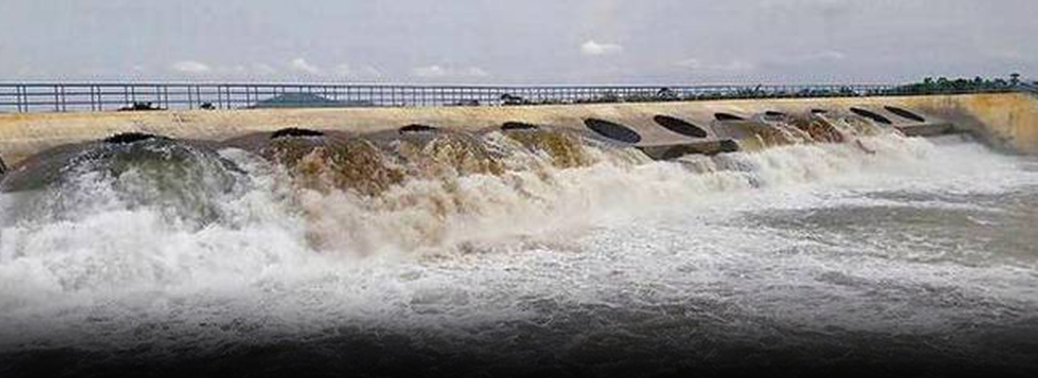
Why in News:
- The National Green Tribunal (NGT) has issued an order staying the Andhra Pradesh Government’s scheme to link Godavari Krishna and Penna Rivers of the State. It ordered that Ministry of Environment should submit a report on it within a month.
Details:
- The Tribunal in an order released said that the State could not go ahead with the project without getting clearance from the Central Water Commission (CWC) and the Ministry of Environment, Forest and Climate Change.
- A Bench of the tribunal in an order “restrained” Andhra Pradesh from proceeding further with the project till acquired environmental clearance, consent to establish and operate the project under provisions of the Environmental (Protection) Act, 1986, Water (Prevention and Control of Pollution) Act, 1974 and the Air (Prevention and Control of Pollution) Act, 1981. The tribunal ordered the Regional office of the Union Environment Ministry to inspect the river linkage project along with the Central Pollution Control Board and the State Pollution Control Board and submit a factual report.
CWC
- CWC is apex Technical Organization of India in the field of Water Resources.
- It is presently functioning as an attached office of Union Ministry of Water Resources, River Development and Ganga Rejuvenation.
- It is charged with the general responsibilities of initiating and coordinating schemes of control, utilization and conservation of water resources throughout the country.
NGT Raps states for not curbing pollution in Ganga
01, Jun 2019
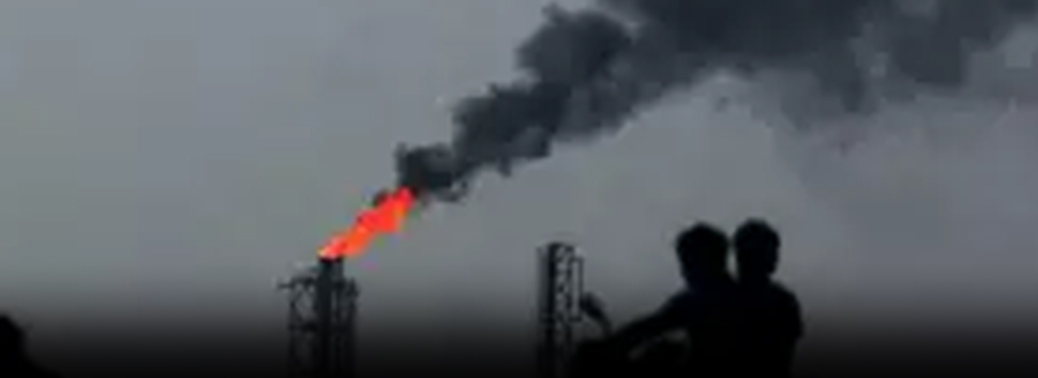
Why in news
- The National Green Tribunal (NGT) has imposed a penalty of Rs. 25 lakh each on the States of Bihar, Jharkhand and West Bengal for not taking adequate steps to curb pollution in the river Ganga.
Details:
- A Bench headed by NGT Chairperson observed that while in Bihar there was no progress in terms of completion of sewage treatment infrastructure projects, in West Bengal only three out of the 22 projects had been completed. “The States of West Bengal, Bihar and Jharkhand are not represented in spite of orders of this Tribunal by which we recorded strong disapproval to such attitude of the said States. Such insensitivity in a serious matter is a matter of concern,” the Bench observed.
- NGT directed the [three] States to deposit Rs. 25 lakh each by way of interim compensation for continued damage to Ganga and inaction of the said States even in responding to this Tribunal. The States were directed to deposit the penalty within a month with the Central Pollution Control Board, and the amount “may be spent on restoration of the environment.” Noting that the discharge of effluents is an offence, the green panel directed the Uttar Pradesh government to prohibit industrial activity that resulted in pollution.
What is National Green Tribunal (NGT)?
- It is a specialised body set up under the National Green Tribunal Act (2010) for effective and expeditious disposal of cases relating to environmental protection and conservation of forests and other natural resources. With the establishment of the NGT, India became the third country in the world to set up a specialised environmental tribunal, only after Australia and New Zealand, and the first developing country to do so.
- NGT is mandated to make disposal of applications or appeals finally within 6 months of filing of the same.
- The NGT has five places of sittings, New Delhi is the Principal place of sitting and Bhopal, Pune, Kolkata and Chennai are the other four.
Philippines returns trash to Canada
01, Jun 2019
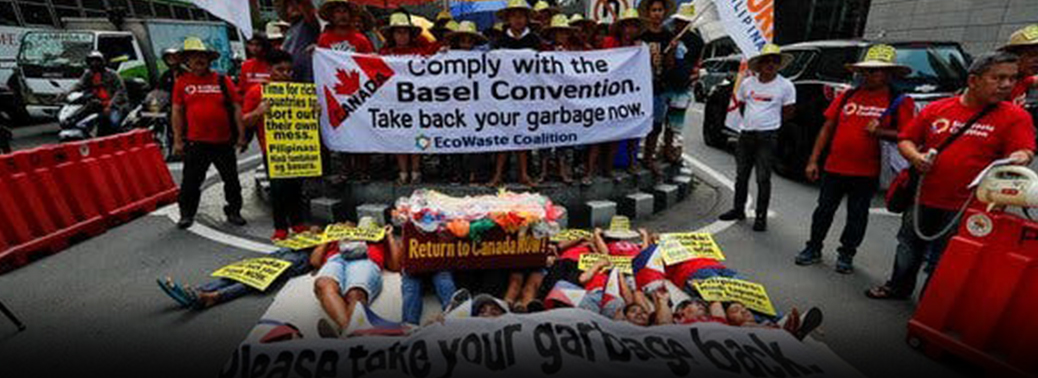
Why in news
- Tonnes of garbage sent to the Philippines years ago was shipped back to Canada after a festering diplomatic row.
Details:
- Asian nations are increasingly objecting to being treated as dumping grounds for international trash.
- The 69 shipping containers of garbage were loaded onto a cargo vessel at Subic Bay to begin the lengthy trip to Canada.
Malaysia to return non-recyclable plastic waste
- The Malaysian Government has announced it will return around 3,000t of smuggled non-recyclable plastic waste to their countries of origin, including the UK, US, Australia and Canada. The offending countries were urged to review their management of plastic waste and to stop shipping waste out to developing countries.
Waste dumping proposal defeated
- A proposal by India to prevent developed countries from dumping their electronic and plastic waste onto developing countries, was defeated at the recently concluded meeting of the Basel Convention in Geneva.
- “India and Nigeria were the only countries that had strongly opposed the guidelines, pushed by the European Union, to dilute safeguards against the trans-boundary movement of e-waste,”
The Basel Convention
- Formally called: The Basel Convention on the Control of Transboundary Movements of Hazardous Wastes and Their Disposal. It is an international treaty
- Aims to reduce the movements of hazardous waste between nations, and specifically to prevent transfer of hazardous waste from developed to less developed countries
E-Cigarettes Pose Public Health Risk, Says ICMR
01, Jun 2019
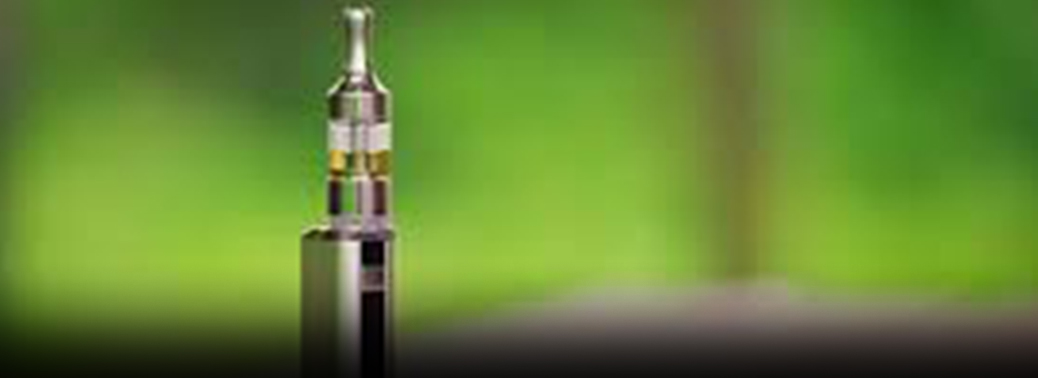
Why in News:
- The Indian Council of Medical Research (ICMR) has warned of a potential public health disaster if action was not taken to completely prohibit and dissuade the use of Electronic Nicotine Delivery Systems (ENDS) or e-cigarettes.
Details:
- The nicotine delivered by these devices adversely affect almost all systems in a human body.
- E-cigarette use adversely affects the cardiovascular system, impairs respiratory immune cell function and airways in a way similar to cigarette smoking and is responsible for severe respiratory disease.
- It also poses risk to foetus, infant, and child brain development
Harmful effects
- “Use of e-cigarettes has documented adverse effects on humans which include DNA damage; carcinogenesis; cellular, molecular and immunological toxicity; respiratory, cardiovascular and neurological disorders and adverse impact on foetal development and pregnancy,’’ Given the harmful health effects e-cigarettes pose to users, as well as passive exposure, failure to make appropriate interventions at the right time could lead to a public health disaster in India.
Urges complete ban
- There are more than 460 different e-cigarette brands with varying configurations of nicotine delivery available in the market, according to the ICMR.
- The ICMR has recommended complete prohibition on ENDS or e-cigarettes in India in the greater interest of protecting public health.
- E-cigarettes also open a gateway for new tobacco addiction, which is a potential threat to the country’s tobacco control laws and ongoing tobacco control programmes and efforts
ICMR
- ICMR is India’s apex scientific body for the formulation, coordination and promotion of biomedical research. It was established in 1911 as Indian Research Fund Association (IRFA) making it one of oldest and largest medical research bodies in the world.
- The ICMR functions under Department of Health Research, Ministry of Health and Family Welfare. It is headquartered in New Delhi.
NO SHORTAGE OF POLIO VACCINE
19, May 2019
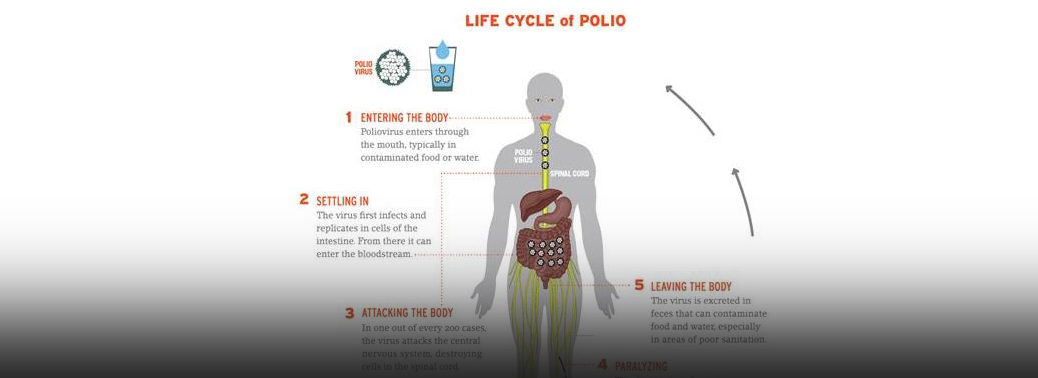
Why in News:
- No shortage of polio vaccine for routine immunisation says Health ministry.
Background:
- The issue came after reports of anticipated shortage following the detection of contamination, by the Central Drugs Laboratory (CDL) in Kasauli, in 16 batches of polio vaccine manufactured by Bharat Immunological and Biologicals Corporation Limited (Bibcol).
What is poliomyelitis/polio?
- Poliomyelitis, often called polio or infantile paralysis is an acute infectious disease caused by polio virus. The virus is a human enterovirus of the Picornaviridae
- There are three types of Polio Virus: 1,2,3-Single stranded RNA virus Natural or Wild Polio Virus (WPVS). It is transmitted from one person to another by oral contact with secretions or faecal material from an infected person. It attacks the central nervous system through the blood stream and damage the cells and paralyse the victim.
Types of Polio vaccines
- Two different kinds of vaccine are available: an inactivated (killed) polio vaccine (IPV) and a live attenuated oral polio vaccine (OPV).
Inactivated Polio vaccine (IPV):
- It was first introduced in 1995 by Dr. Jonas Salk
- It is produced from wild-type poliovirus strains of each serotype that have been inactivated (killed) with formalin.
- It is an injectionable vaccine and can be administered alone or in combination with other vaccines (e.g., diphtheria, tetanus, pertussis, hepatitis B, and haemophilus influenza).
Oral Polio vaccine (OPV):
- It was first introduced in 1961 by Dr. Albert Sabin
- consists of a mixture of the three live attenuated poliovirus serotypes (Sabin types 1, 2 and 3), selected for their lower neurovirulence and reduced transmissibility.
- Apart from trivalent OPV (tOPV), monovalent OPVs viz. against Type 1 (mOPV1) and against type-3 (mOPV3) have been licensed for use in some countries
- In 2009, 2 bivalents (type-1 and type-3) OPVs (bOPVs) were licensed.
EXTERNAL WOES: ON INDIA’S FOREIGN TRADE
18, May 2019

Why in News:
- The estimates for foreign trade showed a sharp slowdown in merchandise export growth in April, 2019 to 0.64% from a year earlier.
Background: / what is the exports scenario?
- There was a 31% surge in petroleum products shipments to overseas markets in April.
- If this is removed, India’s goods export actually contracted by over 3% in dollar terms.
- [In contrast, overall merchandise exports had expanded 11% year-on-year in March, 2019 with the growth in shipments excluding petroleum products.]
- The slump in exports was fairly widespread, with 16 of the 30 major product groups reflecting contractions.
- This is in contrast with the 10 categories that had shrunk in March.
- Worryingly, shipments of engineering goods declined by over 7% after having expanded by 16.3% in March.
- The traditionally strong export sectors all weakened in April.
- These include the gems and jewellery, leather and leather products, textiles and garments, and drugs and pharmaceuticals sectors.
- E.g. contraction in gem and jewellery exports widened to 13.4% in April, from 0.4% in March; it was 15.3% from 6.4% respectively for the leather segment
- Likewise, the pace of growth of garment exports decelerated to 4.4% from 15.1% in March.
What is the case with imports?
BALANCE OF TRADE
- Imports grew by 4.5% to $41.4 billion in April, accelerating from March’s 1.4%.
- This was primarily because the purchases of crude oil and gold continued to increase.
- The 9.3% jump in the oil import bill, from March’s 5.6%, can partly be explained by the rise in international crude prices. However, the 54% surge in gold imports reflects India’s unappeasable appetite for gold, calling for policymakers’ attention and action.
- Excluding oil and gold, however, imports shrank by more than 2% in April.
- This signals that import demand in the real productive sectors is largely balanced.
What are the Implications?
- Jobs and demand – The traditionally strong export sectors are all key providers of jobs.
- So any prolonged slump across these industries will impact jobs, wages and overall consumption demand in the domestic market.
- Trade deficit – With merchandise imports outpacing exports, the trade deficit widened to a five-month high of $15.3 billion.
- The widening trade shortfall will add pressure on India’s widening current account deficit (CAD).
- Being at around $51.9 billion in the first 9 months of fiscal 2018-19, CAD had already surpassed the preceding financial year’s 12-month shortfall of $48.7 billion.
- More challenges and limitations to trade and exports are ahead with the escalating trade war between the U.S. and China.
- The impacts of this could be widespread on global growth.
- Moreover, the rising military tensions in West Asia could potentially further push up oil prices, further increasing India’s import burden.
- Given these, containing the trade and current account deficits seems significantly challenging and urgent measures are needed to boost exports.
AIR INDIA ARM’S PRIVATISATION HITS A BUMP
18, May 2019

why in news:
- The government’s effort to privatise Air India Air Transport Services Ltd., Air India’s ground handling arm, has run into a stone wall, with potential bidders raising concerns over the Airport Authority of India’s plan to award ground-handling work at 76 of its airports to vendors.
Background: / What is the present condition of Air India?
- Air India had accumulated debt of more than Rs.50,000 crore as of the end of the 2015-16 fiscal year.
- Flights are routinely delayed, the equipment is old and mouldering, and the service is poor. The airline has become a platform through which politicians and officials enjoy the perks of office.
What are the advantages of privatization?
- A privatized Air India will cease to be a drain on the exchequer.
- The theory of economic policy establishes that government intervention in the economy is warranted only in the event of market failure or of an overarching non-economic objective. Going beyond conventional tools of intervention, such as regulation, taxes and subsidies, nationalization and monopolization of an industry only makes sense in the rarest of cases.
- e.g Situations in which the private market cannot deliver, such as a case of catastrophic market failure. So logically the government should not be in the commercial airline business. It might support flights to commercially unviable areas, subsidies, etc, not nationalization. Competing with private airlines, Air India is not doing a good job of it.
- Its domestic market share dropped to about 13% as of March 2017.
What should be done?
- The best way to turn Air India into a great global airline would be to cut it loose from the clutches of the government. It can be done either by fully privatizing the airline or reducing the government’s stake to a minority interest. e.g Following the privatization, British Airways rose to become the world’s “favourite airline”. The experience of other countries, from Kenya to Canada to Singapore shows how successful is privatization.
- Disinvestment of Air India would send absolutely the right message, that India is now a market economy.
- If that happens, we will know that the old era of central planning is, just maybe, genuinely behind us after all.
MASALA BONDS LISTED AT LSE
18, May 2019
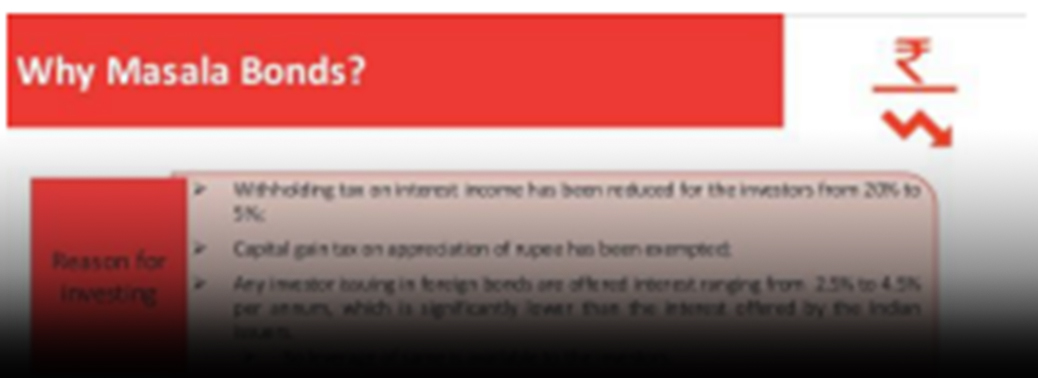
Why in News:
- Kerala becomes first sub-sovereign entity in country to access global market
Background: / Kerala masala bonds:
- The State has turned out to be the first sub-sovereign entity in the country to access the international market by listing masala bonds issued through its
- off-budget mechanism, the Kerala Infrastructure Investment Fund Board (KIIFB).
- Chief Minister Pinarayi Vijayan has become the debutant head of state in the country to open trading at the London Stock Exchange.
- KIIFB has raised ₹2,150 crore through masala bonds at a fixed interest rate of 9.723% per annum.
- The resources earned through the bonds would be channelised for funding a clutch of infrastructure development projects cleared by the KIIFB director board. KIIFB had decided to garner ₹3,500 crore from the international market in the initial phase. It plans to list the bonds at the Singapore stock exchange too.
What is Masala bond:
- Masala Bonds are rupee denominated bonds issued for funding Indian companies using foreign investor’s money.
- They are issued by International Finance Corporation (IFC )- a part of World Bank Group.
What is so special about them?
- Since these bonds are rupee denominated, burden of debt repayment due to fluctuating of currency falls on funders and hence Indian companies are expected to benefit from them.
How they help in meeting housing and infrastructure development
- Indian construction companies have big problems in getting domestic capital and it is a big challenge for getting foreign investor to come to India.
- Therefore, funders can buy bonds in their own stock exchange (London stock exchange , in this case ) without facing hassle to register here first
- Since denomination ensures good profit to Indian companies, this would create a healthy environment for other infrastructure companies to follow suit too and provide for necessary capital for Housing for all.
Challenges
- Though Real estate bill, prevention of corruption act and black-market bill will help in suspicious money to be reduced to large extent, much more needs to be done to boost consumers and investors’ confidence
VARANASI HAS ONLY ONE AIR QUALITY MONITORING
18, May 2019
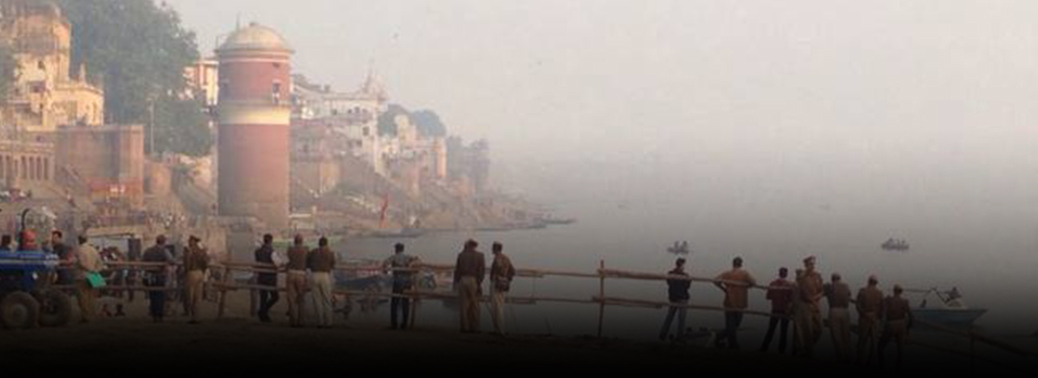
Why in News:
- Varanasi is being ranked as one among the top 3 most polluted cities in the world three years ago, a Right to Information request has found.
Details:
-
The Central Pollution Control Board’s 2015 dataset found Varanasi’s air quality to be
among the most toxic in the country. - It had only one air quality monitor capable of measuring particulate matter 2.5 and particulate matter 10 levels. Out of 227 days measured in 2015, the city had zero ‘good- air’ days and this was attributed to the heavy levels of industrial pollution.
- Biomass burning, vehicular emissions, brick kilns and diesel generator sets were also major contributors. Varanasi is one of the cities that is part of the National Clean Air Campaign, an initiative by the Union Environment Ministry to improve air quality in 100 cities by 20% at least by 2024. One of the commitments under this is to improve air quality monitoring.
National Clean Air Programme / Objective:
Target:
Implementation:
- NCAP talks of a collaborative, multi-scale and cross-sectoral coordination between central ministries, state governments and local bodies. The CPCB will execute the nation-wide programme for the prevention, control, and abatement of air pollution within the framework of the NCAP. NCAP will be “institutionalised” by respective ministries and will be organised through inter-sectoral groups that will also include the Ministry of Finance, Ministry of Health, NITI Aayog, and experts from various fields.
Other features of NCAP
- Increasing the number of monitoring stations in the country including rural monitoring stations, Technology support
- Emphasis on awareness and capacity building initiatives Setting up of certification agencies for monitoring equipment Source apportionment studies
- Emphasis on enforcement Specific sectoral interventions.
National Ambient Air Quality Standards
- National Ambient Air Quality Standards are the standards for ambient air quality set by the Central Pollution Control Board that is applicable nationwide.
- The CPCB has this power of setting the standards given by the Air (Prevention and Control of Pollution) Act, 1981. The main objective of Air (Prevention and Control of Pollution) Act 1981 is to prevent and control Air Pollution. Recent industrialization and increased number of air polluting sources has polluted the environment with toxic materials which not only harm human health but are also a threat to the eco system in general.
- In order to cope up with deteriorating air quality, Government of India enacted Environment (Protection) Act, 1986, which is an umbrella act for the protection of all aspects of the environment.
The main functions of CPCB are:
- To advise the appropriate government regarding improvement of the quality of air and the prevention, control and abatement of air pollution. To execute and plan a nation-wide programme for the prevention, control and abatement of air pollution. To carry out due diligence related to prevention, control and abatement of air pollution.
- To provide annual standards for the quality of air.
- To compile, collect and publish technical and statistical data related to air pollution.
NOTICE TO CENTRE ON BT BRINJAL
13, May 2019
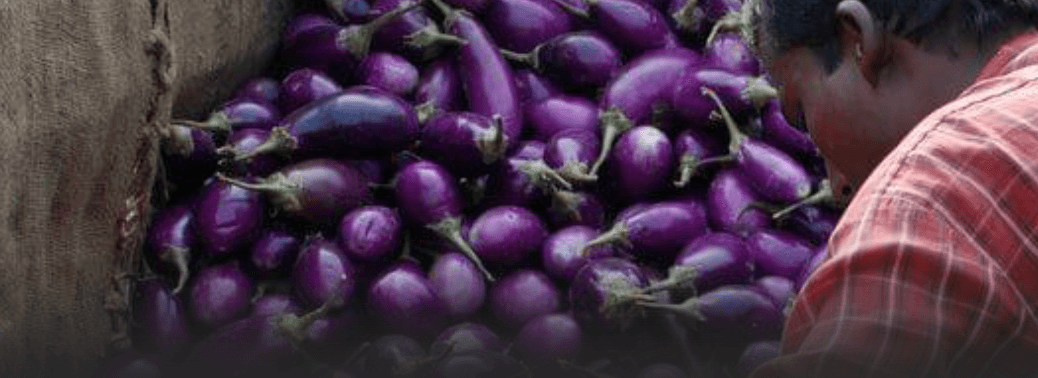
Why in News:
- Senior advocate Prashant Bhushan has sent a legal notice to Union Environment Minister Harsh Vardhan asking for a freeze on all genetically modified organisms, including field trials.
Details:
- Though growing Bt brinjal is illegal in India Bhushan’s letter comes in the aftermath of activist groups recently proffering evidence of Bt Brinjal, a GM crop, being grown in a farmer’s field in Haryana.
- Letter demands the Environment Ministry to uproot and destroy planted Bt brinjal in farms and seedlings in nurseries, undertake a scaled-up exercise of testing of seeds and plantings (for the presence of BT Genes) and, ascertain the supply chain – from seed developers to intermediaries.”
- Bt brinjal was the first food crop made to contain an insecticidal protein, called cry1 ac,
- Though this was cleared for commercial cultivation it was put in deep-freeze in 2010 on the grounds that there was scientific and public disagreement on its safety.
- The lab report was also sent to the government, which picked up samples of the suspected Bt Brinjal crop and sent it to the National Bureau of Plant Genetic Resources (NBPGR) in New Delhi for testing.
- Following brinjal, a genetically modified strain of mustard too is in the regulatory pipeline. GEAC panel ruled that more tests were required before the mustard could be made available in farmer fields.
What is Bt Brinjal?
- Bt Brinjal is a transgenic brinjal created out of inserting a gene [Cry 1Ac] from the soil bacterium Bacillus thuringiensis into Brinjal. The insertion of the gene into the Brinjal cell in young cotyledons has been done through an Agrobacterium-mediated vector, along with other genes like promoters, markers etc.
- This gives (so said) Brinjal plant resistance against lepidopteran insects like the Brinjal Fruit and Shoot Borer (Leucinodes orbonalis) and Fruit Borer (Helicoverpa armigera).
Genetic Engineering Appraisal Committee (GEAC)
- The Genetic Engineering Appraisal Committee (GEAC) was constituted under the Ministry of Environment, Forest and Climate Change (MoEFCC) as the apex body under the ‘Rules for Manufacture, Use, Import, Export and Storage of Hazardous Microorganisms/Genetically Engineered Organisms or Cells 1989’ in accordance with the Environment Protection Act, 1986.
National Bureau of Plant Genetic Resources
- Management and promote sustainable use of plant genetic and genomic resources of agri- hotricultural crop and carry out related research
- Coordination and capacity building in PGR management and policy issues governing access and benefit sharing of their use
ASSAM PRODUCES AN ORCHID LINK TO THE ORIENT
13, May 2019
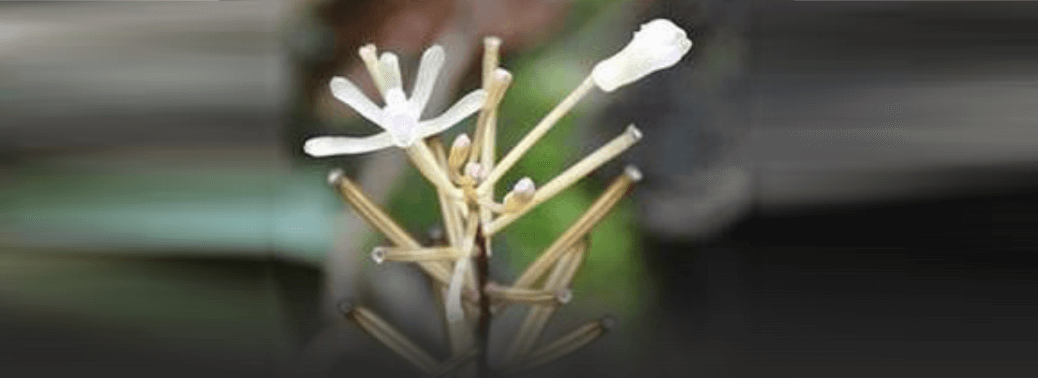
Why in News:
- A discovery in Assam has given India one of its smallest orchids in terms of size and duration of bloom to be recorded botanically.
Details:
- Lecanorchis taiwaniana, which the Japanese Journal of Botany has published as a “new record for the flora in India” in its latest issue, is a mycoheterotroph, one of two types of parasitic plants that have abandoned photosynthesis.
- It appeared close to the nigricans species while bearing 90% similarity with the taiwaniana species named after Taiwan.
- Lecanorchis taiwaniana adds to the orchid wealth of northeast India, which has 800 of some 1,300 species in the country.
- About 300 species are found in the Western Ghats and 200 in the northwestern Himalayas The orchid, discovered earlier in Japan, Taiwan, and Laos, was found to have a maximum height of 40 cm and a blossoming period of five-six days.
- The herbal value of this orchid that flowers and fruits from July to September is yet to be ascertained. But as it derives its energy and nutrients from fungus, it may be of herbal importance
- Medicinal Plants and Mushrooms of India with special reference to Assam contains information on 1,400 medicinal plants and mushrooms, including Costus pictus or the insulin plant used in treating diabetes mellitus, and Ophiorrhiza mungos used in treating cancer because of the alkaloid Camptothecin present in it.
- Also known as Indian snake root, O. mungos has been the subject of medicinal research.
Parasites
- The word parasite is derived from the Greek word meaning -one that eats at another table and is estimated to be from around 5900BC.Parasites are an incredibly varied group of organisms that live within host cells. They are smaller than their host organism and reproduces faster by causing more damage to the host. They receive all sort of benefits like food and shelter from the host. Their size ranges from tiny, single-celled organisms to worms over 20- 30 m in length.
Cyclone Fani’s Fury Creates Four New Mouths in Odisha’s Chilika Lake
11, May 2019
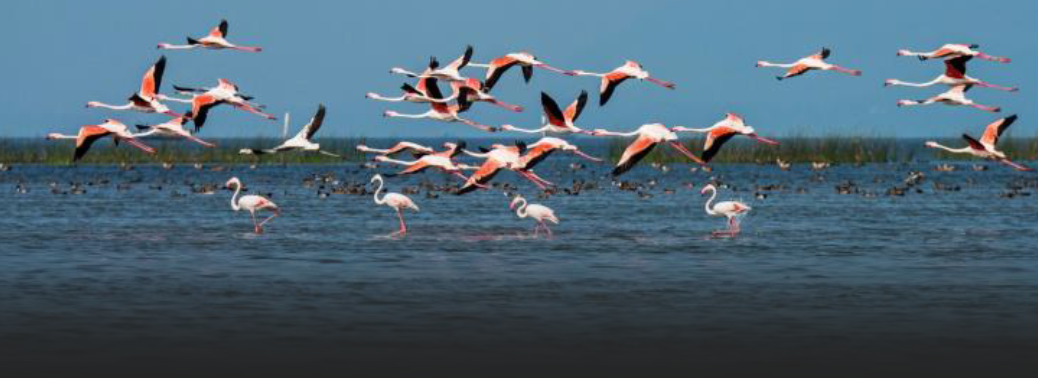
Why in News:
- The extremely severe cyclone, Fani, has created four new mouths in Chilika Lake, Asia’s largest brackish water lake, connecting to Bay of Bengal.
Details:
- Chilika lagoon had only two active mouths — the point where it meets the sea before Fani hit the Odisha coast on May
- Four new mouths have opened due to wave energy with high tidal prism.
Salinity surge
- While three new mouths have come up between the two functional mouths near Sanpatna and Arakhakuda, a smaller mouth has been noticed on the northern
- a lot of sea water is entering Chilika Lake.
- If sea water ingression goes up, fish migration will increase and the biodiversity will get richer. But its long-term impact is something we will have to keep a watch on,
- Three of the four sectors are more or less marine The rise in salinity will lead to increase in productivity. Chilika Lake is a mixture of saline and fresh water
- Increase in salinity will not have an impact on Irrawaddy dolphins as they can survive in salinity. Though nesting grounds at Panchakudi and Mangalajodi have been affected, they would be ready to host migratory birds by the time they arrive in Chilika Lake
A fraught moment: U.S.-China Trade War
11, May 2019
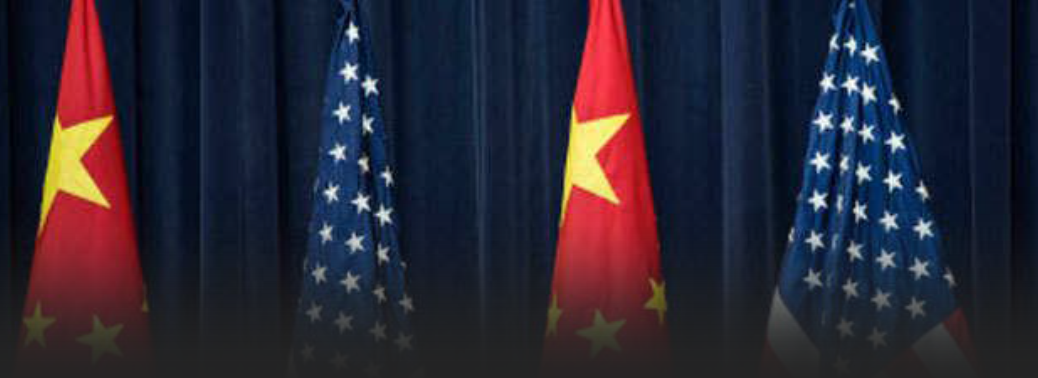
Why in News:
- The U.S. and China need to take sustained steps to de-escalate tensions over tariffs
Details:
- The U.S.-China trade war has flared up again after a deceptive lull over the last few months, when both sides were trying to negotiate a
- Trump tweeted that he would raise the 10% tariff
- imposed on $200-billion worth of Chinese goods to 25%. The latest revival in tensions between the world’s two largest economies elevates the risk of a global trade war to its highest level since the first signs emerged in 2018. The increase in tariffs imposed on goods crossing international borders essentially represents a new tax on a global economy already facing a slowdown
- The International Monetary Fund trimmed its projection for global growth in 2019 to 3%, from a 3.5% forecast made in January, citing slowing momentum in “70% of the world economy”.
- Were tensions in trade policy to flare up again, it could result in large disruptions to global supply chains and pose downside risks to global growth, the IMF warned
- world economy faces the very real risk of an escalation in this trade war where other countries, including India
- it could result in U.S. job losses too as the import of Chinese parts become uneconomical for smaller businesses
- Indian policymakers would do well to closely monitor the latest escalation in trade tensions pans out for global demand and international energy prices, given that the RBI has flagged oil price volatility as a factor that would have a bearing on India’s inflation
Impact on India:
- The trade war may impact Indian economy more adversely.
- A trade war would slowdown global growth overall, worsening India’s already dismal export numbers. The biggest impact could be on the rupee which is already battling historic lows against the US The rising price of oil threatens to widen India’s current account deficit, impacting India’s macroeconomic stability. Reducing investment flows into India. However, India which runs a $51.08 billion trade deficit with China may stand to benefit. China imports 100 million metric tons of soybean which serves as protein source and feeds its food processing industry, this presents a huge opportunity for India.
- India may also seek the opportunity to reduce its own trade deficit against India may be able to gain some traction in textile, garments and gems and jewellery if Chinese exports to the US slow down.
India Facing Critical Shortage Of Healthcare Providers: Who
11, May 2019

Why in News:
- Despite the health sector employing five million workers in India it continues to have low density of health professionals.
Details:
- It is lower than those of Sri Lanka, China, Thailand, United Kingdom and Brazil, according to a World Health Organisation
- This workforce statistic has put the country into the “critical shortage of
- healthcare providers” category. Bihar, Jharkhand, Uttar Pradesh and
- Rajasthan are the worst hit while Delhi, Kerala, Punjab and Gujarat compare Southeast Asia needs a 50% increase in healthcare manpower to achieve universal health coverage by 2030. India faces the problem of acute shortages and inequitable distributions of skilled health workers as have many other low- and middle-income countries,’
New courses needed
- The need of the hour is to design courses for different categories of non-physician care providers.
- Competencies should be valued and reform must be brought in regulatory structures to provide flexibility for innovations,
- Data on the prevalence of occupational vacancies in the health care system in India overall is
- Government statistics for 2008, based on vacancies in sanctioned posts showed 18% of primary health centres were without a doctor, about 38% were without a laboratory technician and 16% were without a pharmacist,”
- The health workforce in India comprises broadly eight categories, namely: doctors (allopathic, alternative medicine); nursing and midwifery professionals; public health professionals (medical, non-medical); pharmacists; dentists; paramedical workers (allied health professionals); grass-root workers (frontline workers); and support
World Health Organization
- WHO is a specialised agency of UN
- It is concerned with international public health
- It acts as coordinating authority on international public health Established in 1948
- It succeeded the Health Organization, which was an agency of the League of HQ: Geneva, Switzerland
- India is a founder member of WHO.
- It is a member of UN Development Group (UNDP).
- WHO flag features the Rod of Asclepius as a symbol for healing
National Health Mission
- The National Health Mission (NHM) envisages achievement of universal access to equitable, affordable & quality health care services that are accountable and responsive to people’s needs. The National Health Mission seeks to ensure the achievement of the following indicators. Reduce Maternal Mortality Rate (MMR) to 1/1000 live births
- Reduce Infant Mortality Rate (IMR) to 25/1000 live births Reduce Total Fertility Rate (TFR) to 1
- Prevention and reduction of anaemia in women aged 15–49 years
- Prevent and reduce mortality & morbidity from communicable, non-communicable; injuries and emerging Reduce household out-of-pocket expenditure on total health care expenditure. Reduce annual incidence and mortality from Tuberculosis by half
- Reduce prevalence of Leprosy to <1/10000 population and incidence to zero in all districts Annual Malaria Incidence to be <1/1000
- Less than 1 per cent microfilaria prevalence in all districts
- Kala-azar Elimination by 2015, <1 case per 10000 population in all blocks
Karnataka Law On Sc/St Promotion Quota Upheld
11, May 2019

Why in News:
- Jeff Bezos, who heads both Amazon and space company Blue Origin, unveiled a lunar lander and it would be used to transport equipment, and possibly human beings, to the south pole of the Moon by 2024
Details:
- He showed a mock-up of a huge vessel weighing many tons and able to carry four self- driving Mr. Bezos didn’t announce a specific date for the project’s first launch, but said the lander would be ready in time to make President Donald Trump’s announced timeline to return people to the Moon by 2024.
Generating water
- The vehicle has been under development for the past three years.
- It will be capable of carrying scientific instruments, the four small rovers, and also a future pressurized vehicle for humans. The goal is to land on the Moon’s south pole, where ice deposits were confirmed in 2018. Water can be exploited to produce hydrogen, which in turn could fuel future exploration of the solar Fully loaded with fuel, Blue Origin will weigh about 33,000 pounds (15,000 kilograms), which will decrease to around 7,000 pounds when it is about to land
Lunar colonies
- The broader vision to build an infrastructure that would sustain the colonisation of space by future generations of humans and shift polluting industries off the As space agencies prepare to return humans to the moon, top engineers are racing to design a tunnel boring machine capable of digging underground colonies for the first lunar inhabitants. The humans need to be shielded from radiation and freezing temperatures in structures which maintain atmospheric pressure in a vacuum.
- They also need protection from meteorite strikes.
India’s lunar mission
- Chandrayaan-2, India’s second lunar mission, has three modules namely Orbiter, Lander (Vikram) & Rover (Pragyan). The Orbiter and Lander modules will be interfaced mechanically and stacked together as an integrated module and accommodated inside the GSLV MK-III launch The Rover is housed inside the Lander. After launch into earth bound orbit by GSLV MK-III, the integrated module will reach Moon orbit using Orbiter propulsion module.
- Subsequently, Lander will separate from the Orbiter and soft land at the predetermined site close to lunar South
- Further, the Rover will roll out for carrying out scientific experiments on the lunar Instruments are also mounted on Lander and Orbiter for carrying out scientific experiments.
- All the modules are getting ready for Chandrayaan-2 launch during the window of July 09, to July 16, 2019, with an expected Moon landing on September 06,
Trump Raises Tariffs On Chinese Goods
11, May 2019
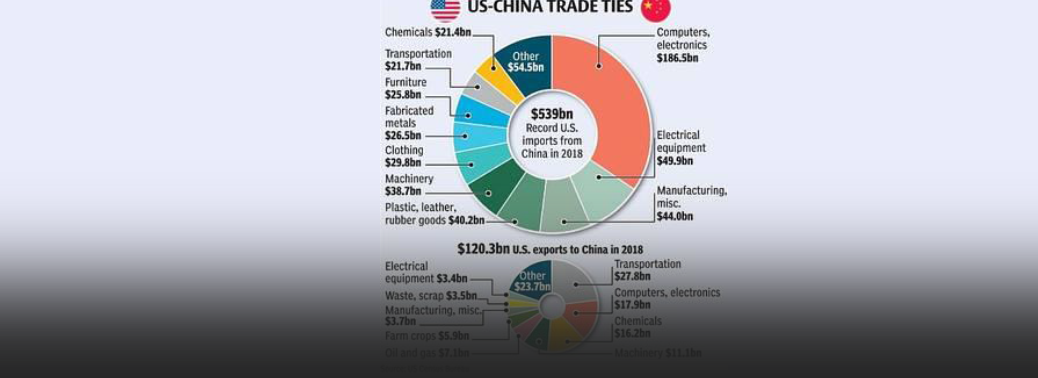
why in news:
- The Trump administration raised import taxes on $200 billion of Chinese imports from 10% to 25%.
Background: / China’s Dominance:
- China joined WTO in 2001 and since then it has very clearly used the existing Free Trade system to its huge advantage.
- China exports more than 2 trillion worth of goods whereas it imports are just 1.32 trillion. The balance in trade which is in favour of China is 236 This is clearly unsustainable.
- It has created mass manufacturing empire for itself which is hurting other countries including India –low- end manufacturing by offsetting high costs with better infrastructure and more reliable and extensive supply networks. As factory wages in China have risen to the highest in emerging
- Asia, however, other developing countries with lower costs have begun to steal away investment and jobs, helping to promote industrialization and boost growth at home.
- Trump is sending a clear message – China cannot dump their goods around the world.
What Happens Now:
- China holds $1.17 trillion of U.S. government debt. If there is a trade war, China could reduce its S. debt holdings as a political weapon against the Trump administration tariffs proposal.
- If that happens, the dollar could fall and other countries could follow suit and sell their holdings.
- If China reduces it’s buying at a time when the U.S. is increasing its supply of new Treasuries into the market, which could lead to a rout in the bond market.
Effect on India:
- It invariably leads to a higher inflationary and low growth scenario.
- Inflation is generally good for assets such as gold, while having a negative impact on currency and some sectors in the equity market.
- The three external risk factors — higher tariffs, rising interest rates, and elevated bond sales
- —at a time when the domestic banking system is grappling with a renewed stress of bad loans, is a serious threat to India.
Chandrayan -2 to Be Launched in July
11, May 2019
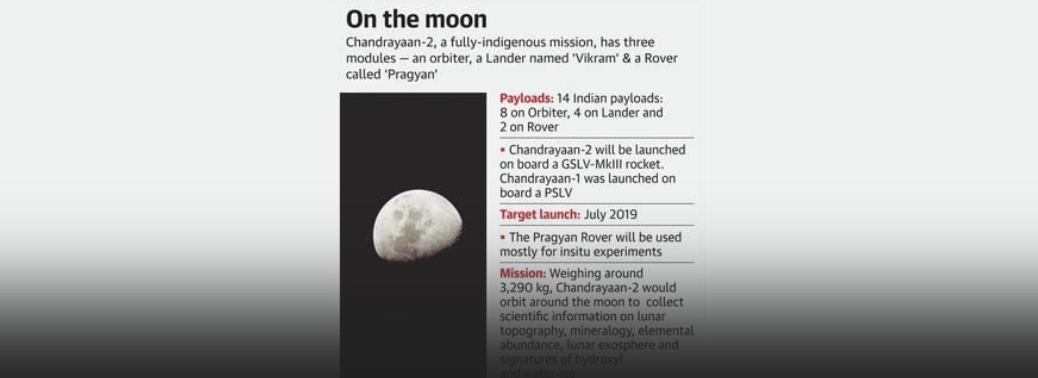
Why in News:
- Chandrayan-2, a fully indigenous mission to be launched during mid of July with 14 Indian payloads
Background:
- In October 2008, the space organisation had launched its orbiter mission Chandrayaan-1 on its PSLV The spacecraft had 11 payloads. One of the U.S. payloads shares credit with Chandrayaan-1 for confirming the presence of water ice on the moon.
- Before that, the Moon Impacter Probe carrying the Indian tricolour image was made to hard-land on the lunar south pole.
About Chandrayan -2:
- Launch vehicle: GSLV Mk III
- Lift off mass (approx.): 3,890 kg
- Launch from: Satish Dhawan Space Centre, Sriharikota, Andhra Pradesh
- Orbiter: It will orbit the moon at a distance of 100 km from the lunar Payloads on the orbiter are: Large Area Soft X-ray Spectrometer, L and S band Synthetic Aperture Radar, Imaging IR Spectrometer, Neutral Mass Spectrometer and Terrain Mapping Camera-2. The structure of the orbiter was manufactured by Hindustan Aeronautics Limited (HAL).
- Lander: The lander has been named Vikram after scientist Vikram The lander will detach from the orbiter, descend to a lunar orbit, before attempting to land on the surface.
- It will make a soft-landing and deploy the rover. It will also perform some scientific activities for about 15 days. Payloads on the lander are: seismometer, thermal probe, Langmuir probe and radio occultation.
- Rover: The 27 kg rover will operate on solar It will move on six wheels and conduct chemical analyses on-site. It will then transmit the data to the orbiter which will send this data back to the earth station. The rover payloads include Laser induced Breakdown Spectroscope (LIBS) and Alpha Particle Induced X-ray Spectroscope (APIXS). Chandrayaan II is India’s second lunar mission after Chandrayaan I.
- The mission includes a lunar orbiter, rover and a The mission is developed by ISRO, India. Initially, the lander was supposed to have been developed by Russia. But, when Russia cited its inability to provide the lander by 2015, India decided to go solo. Now, the mission is entirely Indian. The launch vehicle would be a GSLV (Geosynchronous Satellite Launch Vehicle Mark III).
Way Ahead:
- The mission is attempting to soft-land on the moon’s surface at a latitude of about 70° south, that would be on a high plain in between 2 If successful, this would be the
Long wait for power in Odisha after Cyclone Fani snaps transmission lines
10, May 2019
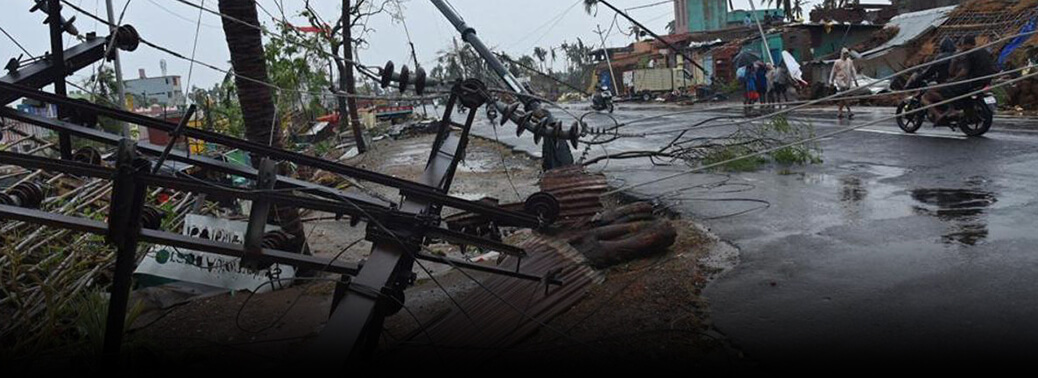
Why in news:
- Hot and humid weather has compounded the woes of the cyclone-affected people in Odisha, with the government facing a gigantic task of restoring power to houses in Puri and Khurdha districts battered by Fani. massive efforts is taken by the State government for total power restoration in Bhubaneswar.
Details:
- The extremely severe cyclonic storm ‘Fani’ has damaged 75 high power transmission towers while 84,000 km low tension power lines have been found either broken or sagging. Over 11,000 distribution transformers were damaged.
- Two lakh electric poles have been damaged by the cyclone.
- The Steel Authority of India Limited has made a commitment to provide 60,000 poles in phases while 30,000 poles have to be procured from different manufacturers in the State.
Background:
- A powerful cyclonic storm named Fani is headed towards the Odisha coast.
- As a cyclone in Bay of Bengal in April-May season, of this nature, is unusual, it is essential to understand the causes.
How do tropical cyclones form?
- Cyclones are formed over slightly warm ocean waters.
- It depends on the temperature of the top layer of the sea, up to a depth of about 60 metres.
- This has to be at least 28°C to support the formation of a cyclone.
- This explains why the April-May and October-December periods are conducive for cyclones.
- Secondly, the low level of air above the waters needs to have an ‘anticlockwise’ rotation in the northern hemisphere and vice versa.
- During these periods, there lies the Inter-Tropical Convergence Zone (ITCZ) (a low pressure zone) in the Bay of Bengal region, which shifts with seasons.
- The southern boundary of the zone experiences winds from west to east and the northern boundary from east to west.
- The ITCZ and the resultant wind pattern induce the anticlockwise rotation of air.
- Once formed, cyclones in this area usually move northwest.
- As it travels over the sea, the cyclone gathers more moist air from the warm sea, and adds to its strength.
How prevalent are tropical cyclones in India?
- Cyclones are a normal event in the eastern coast of India.
- On an average, five to six significant cyclonic storms emerge in the Bay of Bengal region every year.
- The prime seasons for tropical cyclones arethe months of
- April and May, just before the start of the summer monsoon
- October to December, immediately after the end of the summer monsoon
- Cyclones emerging in April-May are usually much weaker than those during October-December.
- Most of the cyclones in April-May move northeast to hit Bangladesh, Myanmar or other countries in the Southeast Asian region.
- There have been only 14 instances of a “severe cyclone” forming in the Bay of Bengal region in April since 1891.
Why are Oct-Dec cyclones more strong?
- A thumb rule for cyclones is that the more time they spend over the seas, the stronger they become.
- [E.g. Hurricanes around the US, which originate in the vast open Pacific Ocean
- They are usually much stronger than the tropical cyclones in the Bay of Bengal, a relatively narrow and enclosed region.]
- In India, cyclones in October-December are usually remnants of cyclonic systems that emerge in the Pacific Ocean.
- They manage to come to the Bay of Bengal, considerably weakened after crossing the Southeast Asian landmass near the South China Sea.
- However, these systems already have some energy, and gather momentum as they traverse over the Bay of Bengal.
- Notably, April-May is not the season for typhoons in the west Pacific Ocean.
- Most of the typhoons, in northern hemisphere, form between June and November.
- So cyclones in April-May originate in situ in the Bay of Bengal itself.
- This is barely a few hundred kilometres from the Indian landmass, and hence the cyclones are relatively weaker.
How and why is Fani different?
- Tropical cyclones in the Bay of Bengal are graded according to maximum wind speeds at their centre as follows:
- depressions – 30 to 60 km per hour (kph)
- cyclonic storms – 61 to 88 kph
- severe cyclonic storms – 89 to 117 kph
- very severe cyclonic storms – 118 to 166 kph
- extremely severe cyclonic storms – 167 to 221 kph
- super cyclones – 222 kph or higher
- Fani is now categorised as an “extremely severe cyclone”.
- It is expected to generate storms with wind speeds as high as 200 km per hour.
- It has the potential to cause widespread damage in Odisha and neighbouring states.
- Given the above discussed reasons, a cyclone of this nature is unusual for April-May cyclones in India.
- Fani is different mainly on account of its place of origin, and the route it has taken.
- Origin – The in situ cyclonic systems in the Bay of Bengal usually originate around latitude 10° N (in line with Chennai).
- Route – Fani was initially headed north-westwards, towards the Tamil Nadu coast.
- But it changed its course midway and moved northeast away from the coastline to reach Odisha.
- The recurve it has taken gave it more time over the sea and has ensured that it has gathered unusual strength.
Barn owls to fight Rodents in Lakshadweep
10, May 2019
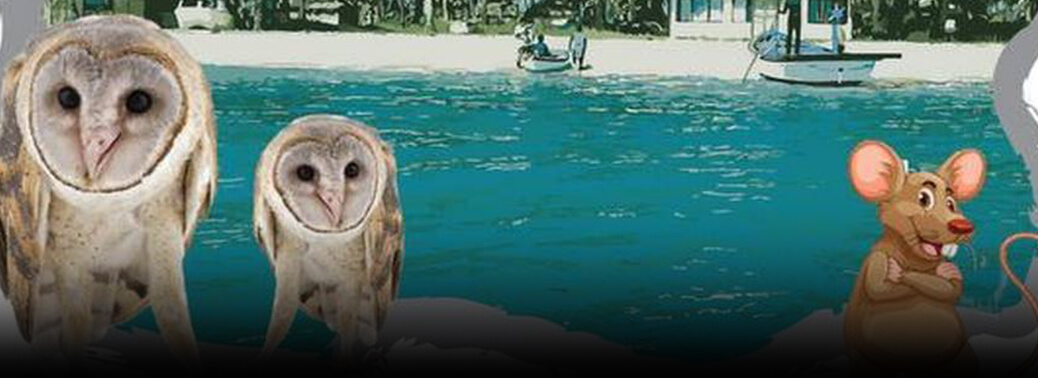
Why in news:
- The Union Territory of Lakshadweep have ‘recruited’ three pairs of barn owls from Kerala to fight against the rodents.
Details:
- The owls were chosen from among healthy birds rescued by the Kerala Forest Department.
- The biocontrol measure is spearheaded by the Lakshadweep Administration, with the Krishi Vigyan Kendra (KVK) at Kavaratti providing the technical knowhow.
- Coconut is an important money-spinner for the islands, but the pesky rodents account for 30 to 40% of the yield loss. Total production stood at 8.76 crore nuts in 2017-18.
Rodent control
- Rodent pests are especially problematic in terms of agriculture and public health since they can inflict considerable economic damage associated with their abundance, diversity, generalist feeding habits and high reproductive rates.
- To quantify rodent pest impacts and identify trends in rodent pest research impacting on small-holder agriculture in the Afro-Malagasy region we did a systematic review of research outputs from 1910 to 2015, by developing an a priordefined set of criteria to allow for replication of the review process.
ThreemethodsTo combat the menace of the rodents:
- Acute-Toxic
- Low Toxic
- Non-Toxic
Acute-Toxic
- This method is used to control rats in open spaces outside the buildings. This is used against Norway Rats, which generally stay in Nalas and dustbins. The rats die within minutes due to the Phosphine gas released by our chemical. This is very effective against Bandicoots. The disadvantage is we cannot overcome the bait shy character of rats; and bait rotation has to be done very frequently.
Low Toxic:
- This method uses the second-generation anti-coagulants, which are effective after the very first dose. They eliminate the bait-shy among rodents, as the target does not die immediately unlike in the acute toxic method. The rats affected by the Anti-Coagulants come out into the open and die eliminating the risk of stinking.
Non-toxic:
- In this method glue pads, mechanical traps, runway traps etc are used which making it completely safe for people as well as pets.
- a) Second-generation anti-coagulants with bromadiolone 0.25%CB
- b) Low toxic and harmless to other Pests.
- c) Does not include bait shyness
- d) Tends to make rats come out in the open and die.
- e) Non-toxic methods used are : Deploying Glue boards, Snap traps, mechanical traps, runway traps
Endless war: on U.S. putting pressure on Taliban
10, May 2019

Why in news:
- Afghanistan’s Loya Jirga, a grand assembly of senior politicians and tribal and religious leaders had a four-day meeting, for a ceasefire between government troops and the Taliban underscores the mood in Kabul. Afghanistan’s leaderswants to resolve the 17-year-long conflict. The Jirga asked the government to set up a negotiating team with members from the assembly for talks with the insurgents.
Details:
- The Taliban group controls half of Afghanistan and has shown its capacity to strike anywhere, including in the most fortified of locations.
- It has also been engaged in direct talks with the U.S. for months.
- But the peace talks haven’t prevented the Taliban from carrying its offense against the government.
- By rejecting the Loya Jirga proposal, the Taliban has once again made it clear that it is not ready yet to engage with the government in Kabul.
- The U.S. seeks an assurance that Afghanistan will not provide a safe haven to transnational terrorist groups such as al-Qaeda and the Islamic State.
- The government lacks the resources to accomplish either.
- It cannot defeat the Taliban militarily, as the 17 years of the war suggest.
- It cannot forge peace on the Taliban’s terms as it would mean endangering whatever few freedoms the Afghans enjoy right now.
Background:
Afghanistan
- Afghanistan, located in South Asia, is a landlocked country bordered by Pakistan, Iran, Turkmenistan, Uzbekistan, Tajikistan and China.
- Afghanistan has a strategic location and it connected the cultures of the Middle East and other parts of Asia by the Silk Road.
- Much of Afghanistan’s territory covers the Hind Kush range that stretches along Afghanistan-Pakistan border and has been historically a significant sector of Buddhism and acted as a passageway during the invasions of the Indian subcontinent. It is still important during modern era warfare in the nation.
- The 2430km long Durand line, established in 1896, is the international border between Afghanistan and Pakistan. It is described very dangerous from a geopolitical and geostrategic perspective and, lot of insurgency and other related activities has occurred across the porous border for years.
- India-Afghanistan: Security interests
- India faced many security challenges from the Taliban in Afghan during the 1990s.
- Pakistan has raised and supported several militant groups such as Lashkar-e-Taiba, Harkat-ul-Mujahideen/Harkat-ul-Ansar, and Harkat-ul-Jihad-al-Islami among others, which operate in India.
- All of these groups have trained in Afghanistan, with varying proximity to the Taliban and by extension al-Qaeda.
- Thus India is absolutely adamant that Afghanistan should not again become a terrorist safe haven.
- Radical ideologies and terrorism spreading in this region are a security threat for India.
- With Pakistan increasing its strategic depth in Afghan, it can reverse the gain of India in Afghan brought through much cost. Pakistan can incubate and move around various anti-India groups in Afghan especially in Loya Paktia.
- The golden crescent comprising of Iran, Afghan, and Pakistan is a worry for India, especially with respect to the issue of drug abuse in Punjab.
- Islamic State is using Afghan as an outpost in Asia as it comes under stress in Iraq and Syria.
Moscow Format
- It was a meeting of world leaders, held in Moscow, Russia, in November 2018, to discuss future of Afghan polity, Taliban’s role in it and the Taliban’s acceptability among world leaders.
- Earlier the meeting was called off due to non-participation of the Afghan government, this time meeting was open also to non-government representatives.
Deliberations took place on a number of issues surrounding the Taliban and its role in Afghanistan. - The Afghan government did not send any officials, but four members of the Kabul-based High Peace Council (HPC) attended the event.
- India was represented in ‘Moscow Format’ by former diplomats non-officially. The choice of delegates allowed India and Afghanistan distance and deniability about the Taliban.
India-Afghanistan: Economic interests
- Afghanistan has a mineral wealth of about $1-3 trillion of Iron ore, Lithium, Chromium, Natural Gas, Petroleum etc.
- Safeguarding Indian investments and personnel in Afghan is utmost important to India as Indian investment in Afghan amounts to about $3bn.
India’s soften stand on Taliban
- India has always been seeking an “Afghan-led, Afghan-owned and Afghan-controlled” peace process and settlement but as international talks with the Taliban leadership gain momentum India soften its stance.
- Recently Taliban offer dialogue, promising to safeguard India’s investments in Chabahar and promises to protect minorities, including Hindus and Sikhs, in Afghanistan.
- Also, US announced its withdrawal of troops from Afghanistan which made India worried about the prospect of chaos and civil war, akin to the scene after the previous U.S. pullout in the early 1990s that cut India out and brought the Taliban to power in Kabul with Pakistan’s support.
- It is felt that it is time India recognized and negotiated with the Taliban to protect its huge investments
- Geopolitically non-involvement of India in talk with Taliban would consolidate Pakistan’s position in the future of Afghanistan which already has good relations with the Taliban
- World over, Russia and Iran also soften its earlier stand over the Taliban and engage in peace talks
Way forward:
- This resource deficit can be bridged only with the help of the international community. The U.Swhich is in talks with the Taliban, should not overlook the interests of Kabul, It must put pressure on the Taliban to cease hostilities and engage with Mr. Ghani’s government.
BELLANDUR LAKE IS DRYING UP
09, May 2019
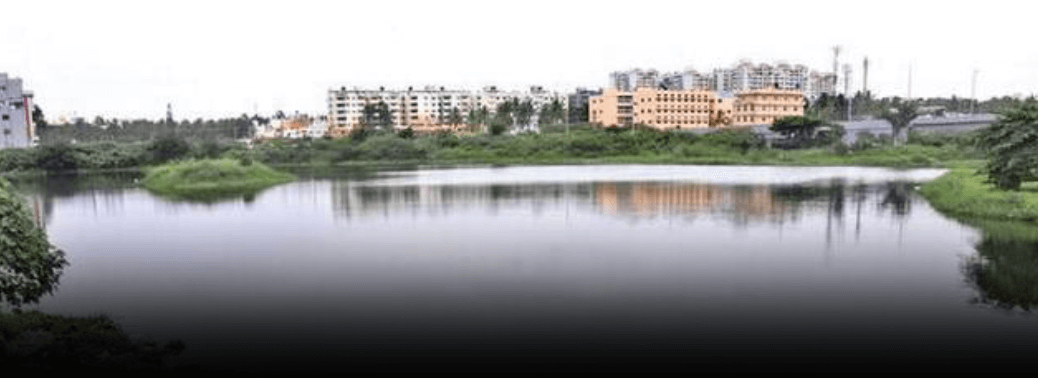
Why in News:
- Bellandur Lake, the city’s most polluted waterbody, is drying up. In the past few days, the water level has reduced with the lakebed being visible in some places
Why the lake count has started to decrease?
- The terrain on which Bengaluru is situated allowed for the natural formation of lakes. These lakes, were at one time, the main sources of water for the city.
- The essential nature of lakes to life has even gave rise to development of a sacred practice called Karaga. The
- city has lost an estimated 79% of water bodies and 80% of its tree cover from the baseline year of 1973. As the city grew, it faced a dilemma. If the additional population was to be accommodated, it would require more land. If it decides to protect all its lakes, it must expand far beyond its already extensive boundaries, thereby hurting the interests of farming. In this context, the city chose to hurt the lake beds instead.
What did the state government do?
- Bangalore Development Authority (BDA) is currently the custodian of the water body for its rejuvenation.
- But BDA feels that there is no point in restoring a lake if sewage water is not stopped entering the lake.
- Bengaluru Water Supply and Sewerage Board is in charge of diversion of sewage water, which clearly it has not been able to do.
- Meanwhile, the response of the state government too has been piecemeal.
- But without addressing the question of how many lakes a modern city could sustain, they typically will end up with policies that are considered impractical by those who see cities as engines of growth.
CIRCLE OF LIFE: ON ECONOMIC GROWTH FACTORING ECOSYSTEM
09, May 2019
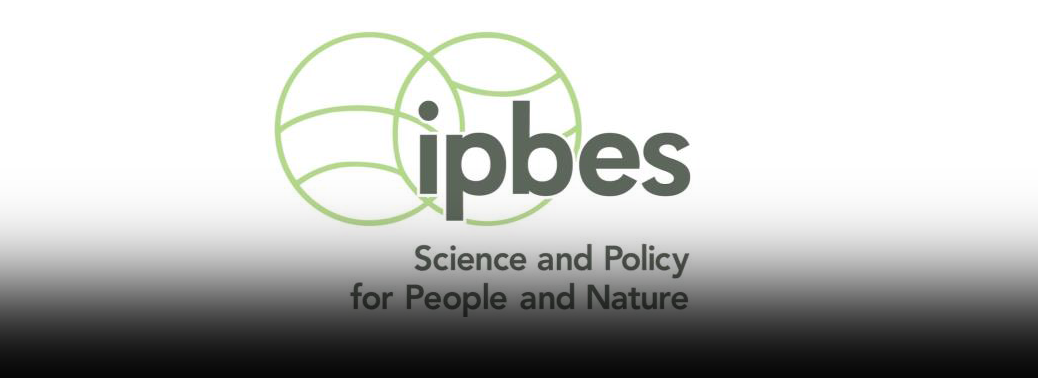
Why in News:
- Biodiversity assessments must be factored into all economic activity
Details:
- The overwhelming message from the global assessment report of the Intergovernmental Science-Policy Platform on Biodiversity and Ecosystem Services (IPBES) is that human beings have so rapaciously exploited nature, and that species belonging to a quarter of all studied animal and plant groups on earth are gravely threatened
- If the world continues to pursue the current model of economic growth without factoring in environmental costs, one million species could go extinct, many in a matter of decades Catastrophic erosion of ecosystems is being driven by unsustainable use of land and water, direct harvesting of species, climate change, pollution and release of alien plants and animals in new habitats. there is particular worry over the devastation occurring in tropical areas, which are endowed with greater biodiversity than others; only a quarter of the land worldwide now retains its ecological and evolutionary integrity, largely spared of human impact.
- Nature provides ecosystem services, but these are often not included in productivity estimates: they are vital for food production, for clean air and water, provision of fuel for millions, absorption of carbon in the atmosphere, and climate moderation.
- Expanding agriculture by cutting down forests has raised food volumes, and mining feeds many industries, but these have severely affected other functions such as water availability, pollination, maintenance of wild variants of domesticated plants and climate regulation.
- IPBES assessment points out, marine plastic pollution has increased tenfold since 1980, affecting at least 267 species, including 86% of marine turtles, 44% of seabirds and 43% of marine mammals
The Intergovernmental Science-Policy Platform on Biodiversity and Ecosystem Services
- The Intergovernmental Science-Policy Platform on Biodiversity and Ecosystem Services or IPBES is an independent inter-governmental agency formed to reinforce the interface between science and policy for ecosystem and biodiversity services in order to conserve and sustainably use biodiversity, achieve long-term well-being for humans, and sustainable development.
- 94 governments established the IPBES on 21st April 2012 in Panama City. Any member of the UN can join this body.
- The organisation is dedicated to making IPBES as the pioneering inter-governmental body for evaluating earth’s biodiversity and ecosystems, and the basic services they provide to society
INDIA HAS OVERLY RESTRICTIVE MARKET BARRIERS
08, May 2019
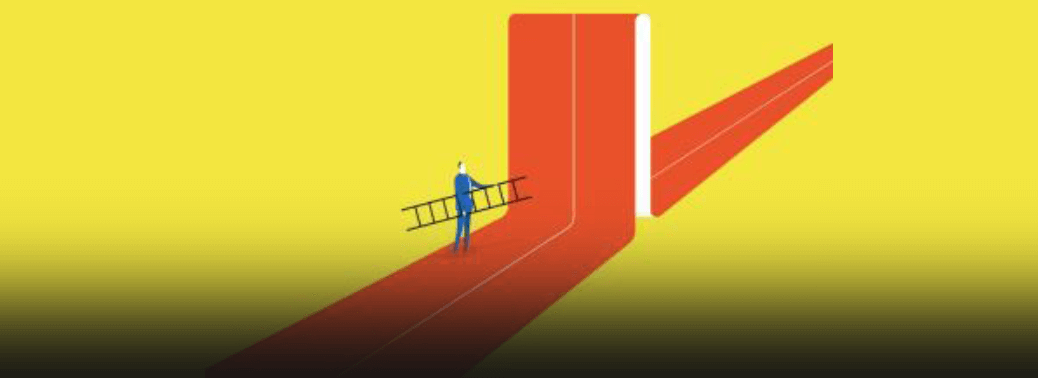
Why in News:
- U.S. is India’s largest export destination, India is only the 13th largest for the U.S. due to “overly restrictive market access barriers.Tariff and non-tariff barriers, multiple regulations put foreign firms at disadvantage
Details:
- India is already the world’s third largest economy, and by 2030, it will become the world’s largest consumer market because of the rapid growth of the middle class, India is only the U.S.’s 13th largest export market, due to overly restrictive market access barriers,”
- Meanwhile, the U.S. is India’s largest export market, accounting for something like 20% of the total. There is a real imbalance.”
- while American technology and expertise can play an important role to meet India’s
- developmental needs, U.S. companies faced significant market access barriers in India. These include both tariff and non-tariff barriers, as well as multiple practices and regulations that disadvantage foreign companies,”
- India’s average applied tariff rate of 13.8%, and that remains the highest of any major world economy
- goal is to eliminate barriers to U.S. companies, operating here, including data-localisation restrictions that actually weaken data security and increase the cost of doing business,
Price controls’
- “Other obstacles include price controls on medical devices and pharmaceuticals, and
- restrictive tariffs on electronics and telecommunications products
- U.S. would not be able to sell oil to India at lower rates because oil is owned by private players and the U.S. government would not be able to force them to offer concessionary rates.
Tariff or customs duty
- A tariff or customs duty is a financial charge in the form of a tax, imposed at the border on goods going from one customs territory to another.
- Tariffs applied to imports are usually collected by customs officials of the importing country when goods are cleared through customs for domestic consumption.
- Tariffs can also be imposed on exports also but the import tariffs are the most common type of tariffs and have been the main focus of attention of GATT/WTO negotiations.
Impact of Tariffs
- There are two main purpose of imposing tariffs by the Governments. To protect their domestic industries from the competition of imports. To collect revenue.
ODISHA’S WILDLIFE SANCTUARIES RAVAGED BY FANI
08, May 2019

Why in News:
- Severe Cyclone Fani rendered not only several thousand people homeless as it tore along India’s east coast, but also dealt a body blow to wildlife and forest resources in the region.
Details:
- The scenic stretch along the tree-lined Marine Drive that bisects the Balukhand Wildlife Sanctuary adjacent to the Bay of Bengal between Puri and Konark, is now a wasteland with hardly any tree left untouched.
- the cyclone damaged nearly 55 lakh trees, mostly casuarinas, The devastation has left around 400 spotted deer homeless
- In Bhubaneswar, the cyclone had uprooted decades-old trees inside the Nandankanan Zoological Park
- The Chandaka Wildlife Sanctuary, has also been impacted with thousands of trees uprooted.
- hundreds of displaced monkeys have entered residential colonies in the periphery of Bhubaneswar.
Bhitarkanika National Park
- Bhitarkanika National Park is a national park located in Kendrapara district of Odisha in eastern India.
- It was designated as national park on 16 September 1998 and as a Ramsar site on 19 August 2002.
- Gahirmatha Beach and Marine Sanctuary lies to the east, and separates swamp region cover with canopy of mangroves from the Bay of Bengal.
- The national park is home to saltwater crocodile (Crocodylus porosus), Indian python, King cobra, black ibis, darters and many other species of flora and fauna.
- It hosts a large number of mangrove species, and is the second largest mangrove ecosystem in India
Integrated Coastal Zone Management (ICZM):
- Integrated coastal zone management (ICZM) or Integrated coastal management (ICM) is a process for the management of the coast using an integrated approach, regarding all aspects of the coastal zone, including geographical and political boundaries, in an attempt to achieve sustainability. It is a World Bank assisted project.
- The ICZM plan involves identification of infrastructure requirements and livelihood improvement means in coastal districts. Conservation of mangroves is among the components.
- The national component of the project includes mapping of the country’s coastline and demarcation of the hazard line
NOT KEEPING RECORD OF PRE-NATAL TESTS IS CRIMINAL: SC
04, May 2019
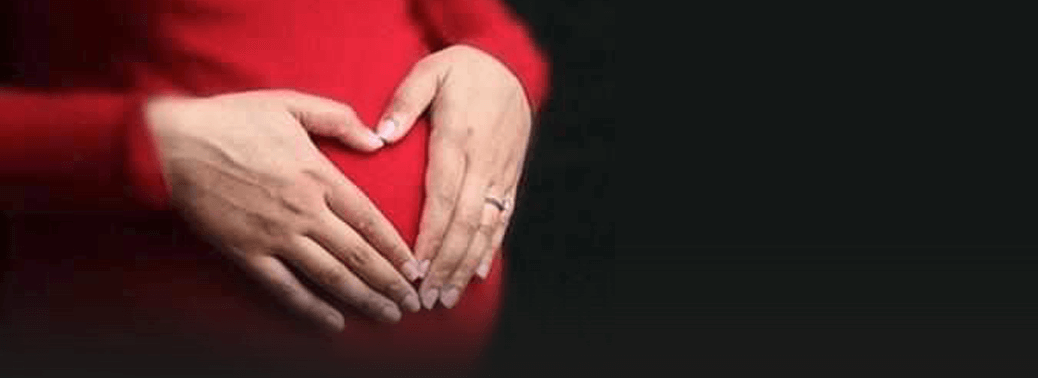
Why in News
- The Supreme Court upheld provisions in the anti-pre-natal sex determination law which ‘criminalises’ non-maintenance of medical records by obstetricians and gynaecologists and suspend their medical licence indefinitely.
Details:
- A Bench of Justices held that the particular provisions in the Pre-conception and Pre-natal Diagnostic Techniques (Prohibition of Sex Selection) Act of 1994 were necessary to prevent female foeticide in the country.
- The main purpose of the Act is to ban the use of sex selection and misuse of pre-natal diagnostic technique for sex selective abortions and to regulate such techniques.
- The court dismissed averments made by doctors that the provisions in the law criminalise even the smallest anomaly in paperwork which is in fact an inadvertent and unintentional error.
- The sections have made obstetricians and gynaecologists vulnerable to prosecution all over the country.
- “It is a responsible job of the person who is undertaking such a test i.e., the gynaecologist/medical geneticist/radiologist/ paediatrician/director of the clinic/centre/laboratory to fill the requisite information. In case he keeps it vague, he knows fully well that he is violating the provisions of the Act,
Pre-conception and Pre-natal Diagnostic Techniques (Prohibition of Sex Selection) Act
- The Pre-conception & Pre-natal Diagnostics Techniques (PC & PNDT) Act, 1994 was enacted in response to the decline in Sex ratio in India, which deteriorated from 972 in 1901 to 927 in 1991.
- The main purpose of enacting the act is to ban the use of sex selection techniques before or after conception and prevent the misuse of prenatal diagnostic technique for sex selective abortion.
- The Act was amended to bring the technique of pre conception sex selection and ultrasound technique within the ambit of the act.
- In 1988, the State of Maharashtra became the first in the country to ban pre-natal sex determination through enacting the Maharashtra Regulation of Pre-natal Diagnostic Techniques Act
CBI SEARCHING FOR EVIDENCE ON ELEVEN ‘MURDERED’ GIRLS
04, May 2019

Why in News
- The Central Bureau of Investigation (CBI) is searching for evidence related to the 11 girls believed to have been murdered in shelter home in Muzaffarpur district of Bihar. CBI files 7th status report in Muzaffarpur shelter home case
Details:
- The agency got wind of the alleged murders from the rescued children.
- In its seventh status report to the Supreme Court, the CBI, which is facing allegations that its probe into the grisly case is “hogwash”, said a scrutiny of the girls’ home register at Muzaffarpur had so far revealed that a total of 35 girls with identical or similar names had lived there at one point of time or the other. A “field-level verification” of the existence of these girls is also under way.
CBI
- The CBI was established as the Special Police Establishment in 1941, to enquire into cases of corruption in the procurement during the Second World War.
- With time the Santhanam Committee on Prevention of Corruption recommends the establishment of CBI. The CBI was then established by a resolution of the Ministry of Home Affairs. The Ministry of Personnel eventually took over the responsibility of CBI and now it plays the role of an attached office.
- The CBI is the premier investigating agency of the Central Government. It is not a statutory body; it derives its powers from the Delhi Special Police Establishment Act, 1946.
- The important role of CBI is prevention of corruption and maintaining integrity in administration.
SEVERE CYCLONE FANI HITS PURI
04, May 2019
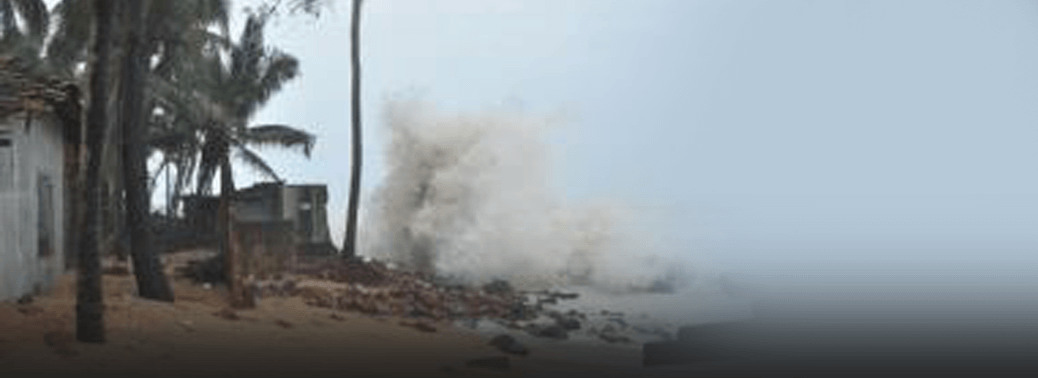
Why in News
- The extremely severe cyclonic storm Fani barrelled into the Odisha coast, unleashing torrential rain and winds gusting up to 175 kmph, killing at least eight people, bringing rail and air transport to a halt, and swamping towns and villages,
Details:
- The cyclonic system made landfall near the coastal pilgrim town of Puri and brought heavy winds and rainfall to the State capital Bhubaneswar and Cuttack.
- More than one million people in low-lying areas were evacuated to nearly 4,000 shelters, ahead of the cyclone’s landfall.
Re-curving Cyclone
- Cyclone Fani was a ‘re-curving cyclone’ and therefore a harder to precisely predict than
- most cyclones
- Recurving cyclones’ are those that sharply turn north-eastwards instead of a more typical path of north-westwards. In the Indian context, they are relatively rare and harder to track.
- It also had an unusually long gestation period of atleast 10 days.
- Fani was the strongest cyclone to have passed India since cyclone Hudhud in 2014. It’s also
- the first time since 1976 that a cyclone of such intensity will be blowing through India
- The Indian Coast Guard (ICG) and the Navy have deployed men, material and assets as
- part of preparatory efforts for the extremely severe cyclonic storm ‘Fani’.
- They have launched Humanitarian Assistance and Disaster Relief (HADR) operations
Role and Mandate of NDRF:
- Specialized response during disasters.
- Proactive deployment during impending disaster situations. Acquire and continually upgrade its own training and skills. Reconnaissance, Rehearsals and Mock Drills.
- Impart basic and operational level training to State Response Forces (Police, Civil Defence and Home Guards).
- Community Capacity Building Programme. Organize Public Awareness Campaigns
Tropical cyclones
- Tropical cyclones are regarded as one of the most devastating natural calamities in the world. They originate and intensify over warm tropical oceans.
- These are ferocious storms that originate over oceans in tropical areas and move over to
- the coastal areas causing violent winds, very heavy rainfall, and storm outpourings.
ONLY 10 OF 100 SEWAGE PROJECTS ON GANGA HAVE BEEN COMPLETED
04, May 2019
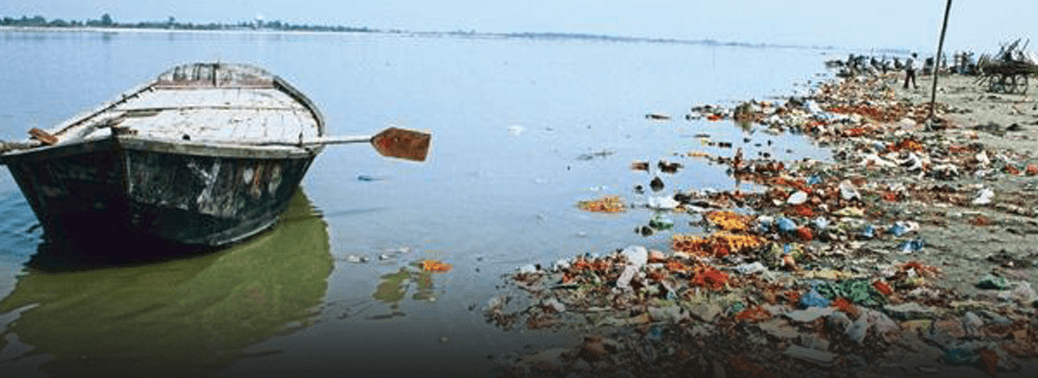
Why in News:
- Only 10 of the 100 sewage infrastructure projects commissioned after 2015 have been finished under the Namami Gange mission, according to records.
Details:
- Commissioning of sewage treatment plants (STP) and laying sewer lines are at the heart of the mission to clean the Ganga.
- Nearly ₹23,000 crore has been sanctioned of the ₹28,000 crore outlay for sewage management work.
- River-front development, cleaning Ghats and removing trash from the river — the cosmetic side of the mission — make up about for ₹1,200 crore of the mission outlay.
- Uttar Pradesh, responsible for about three-fourths of the inadequately treated industrial waste and municipal sewage, had 18 pre-2015 STP and sewage infrastructure projects commissioned. The incomplete projects are reflected in the river quality. None of the towns through which the Ganga courses through has water fit for bathing or drinking, according to water monitoring reports by the State and Central Pollution Control Board.
Hybrid Annuity-PPP model
- The Union Cabinet had approved to Hybrid Annuity-PPP model with 100% central sector funding. Under this model, development, operation and maintenance of STPs will be undertaken by Special Purpose Vehicle (SPV) created by winning bidder at local level
National Mission for Clean Ganga
- NMCG is a river cleaning project.
- NMCG is the implementation wing of National Council for Rejuvenation, Protection and Management of River Ganga
- It was established in 2011 as a registered society under Societies Registration Act, 1860.
- It has a two-tier management structure and comprises of Governing Council and Executive Committee.
- The Union Cabinet has recently approved changes allowing the National Mission for Clean Ganga to fine those responsible for polluting the river. Earlier this power was vested solely with the Central Pollution Control Board. The power to fine the polluters is derived from the Environment Protection Act.
GST BUOYANCY
04, May 2019
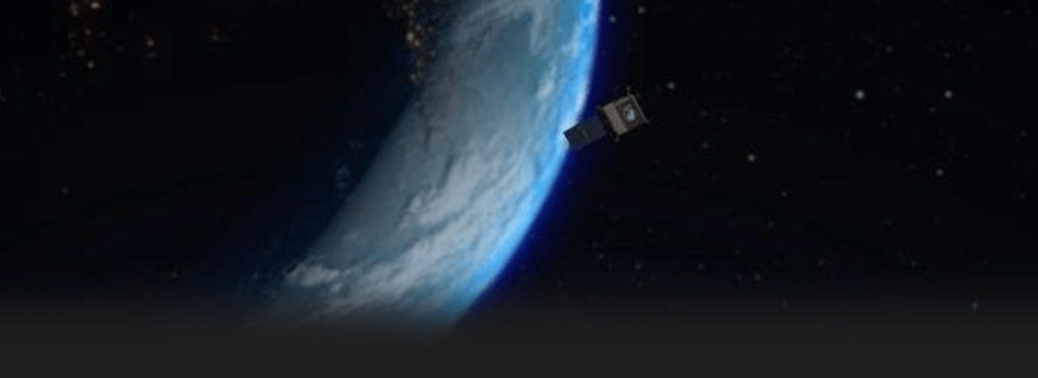
Why in News
- GST collections hit a record high, the next step should be to simplify the tax regime
Details:
- The GST inflows of ₹1,13,865 crore in April are the
- highest recorded since the tax regime was introduced in July 2017
- They represent an increase of over 10% compared to the same month a year ago
- GST revenues have crossed the ₹1 lakh crore mark Healthier GST collections, if sustained, will also mean less pressure on the Centre to cover its fiscal deficit. In the absence of more disaggregated data, it could be argued that tax rate cuts by the GST Council in December too may have spurred higher volumes for some goods and services. The rush to pay tax arrears at the end of the financial year may have been another seasonal factor contributing to better tax collection
GST
- It is a destination-based taxation system.
- It has been established by the 101st Constitutional Amendment Act.
- It is an indirect tax for the whole country on the lines of “One Nation One Tax” to make India a unified market. It is a single tax on supply of Goods and Services in its entire product cycle or life cycle i.e. from manufacturer to the consumer.
- There is a provision of GST Council to decide upon any matter related to GST whose chairman in the finance minister of India.
GST Council
- It is the 1st Federal Institution of India, as per the Finance minister. It will approve all decision related to taxation in the country.
- It consists of Centre, 29 states, Delhi and Puducherry.
- Centre has 1/3rd voting rights and states have 2/3rd voting rights. Decisions are taken after a majority in the council.
OUTER CLARITY: ON ‘WEAPONISATION’ OF OUTER SPACE
05, Apr 2019
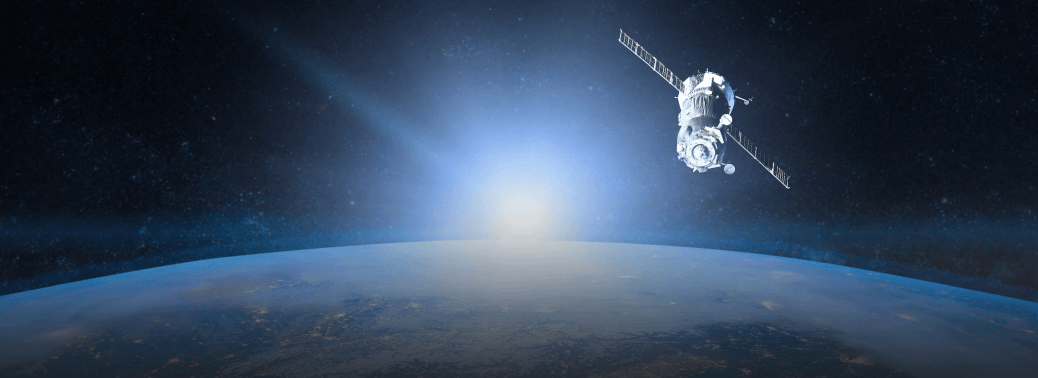
Why in News:
- The Indian Space Research Organisation (ISRO) successful launch of the PSLV-C45 rocket that placed 29 satellites in three different orbits appears that the Indian space programme stands galvanised and poised for a giant leap.
Details:
- In February 2017, the PSLV-C37 placed 104 satellites, 96 of them from the U.S shows
- ISRO’s ability to launch satellites at a fraction of the cost that other countries incur.
- In February 2017 launch also placed the fifth of the Cartosat 2 series in orbit, an earth observation satellite with cameras that have a resolution of less than a metre.
- The PSLV-C45 placed EMISAT, which can, among other things, aid in electronic intelligence. In other words, India is achieving a great place in space military architecture.
- Over the next few months, as many as eight satellites are expected to be launched, which aims to strengthen the defence dimension.
PSLV-C37 / CARTOSAT -2 Series Satellite:
- India’s Polar Satellite Launch Vehicle, in its thirty ninth flight (PSLV-C37), launches the 714 kg Cartosat-2 series satellite for earth observation and 103 co-passenger satellites together weighing about 663 kg at lift-off into a 505 km polar Sun Synchronous Orbit (SSO). PSLV- C37 was launched from the First Launch Pad (FLP) of Satish Dhawan Space Centre (SDSC) SHAR, Sriharikota. This was the sixteenth flight of PSLV in ‘XL’ configuration (with the use of solid strap-on motors).
- The co-passenger satellites comprised of 101 nanosatellites, one each from Kazakhstan, Israel, The Netherlands, Switzerland, United Arab Emirates (UAE) and 96 from United States of America (USA), as well as two Nano satellites from India. The total weight of all these satellites carried on-board PSLV-C37 was about 1377 kg.
- PSLV-C37 also carried two ISRO Nano satellites (INS-1A and INS-1B), as co-passenger satellites. These two satellites carry a total of four different payloads from Space Applications Centre (SAC) and Laboratory for Electro Optics Systems (LEOS) of ISRO for conducting various experiments.
- The 101 International customer Nano satellites were launched as part of the commercial arrangements between Antrix Corporation Limited (Antrix), a Government of India company under Department of Space (DOS), the commercial arm of ISRO and the International customers.
PSLV C45:
- The PSLV-C45 is the 47th mission of the Indian Polar Satellite Launch Vehicle (PSLV) program.
- The Polar Satellite Launch Vehicle (PSLV)-C45 was launched on 1 April 2019 with a payload of 29 satellites, including one for electronic intelligence, along with 28 customer satellites from other countries.
- It placed the primary satellite, EMISAT, a piece of surveillance equipment to be used by the Defence Research and Development Organisation (DRDO), to the 748 km sun-synchronous polar orbit.
- It then made one complete revolution around Earth, over the poles, while lowering its orbit to 504 km height, after which it deposited the 28 international customer satellites — 24 from the US, two from Lithuania, and one each from Switzerland and Spain.
- It then made a further round of Earth while attaining an even lower orbit of 485 km, where the fourth stage of the rocket will continue for some time. This operation took a little over three hours.
Significance of the Achievement:
- Reaching three different orbits gives ISRO a new technological edge.
- It demonstrated its capability to reuse the fourth-stage engines multiple times, and also showed that the guidance and navigation systems aboard the launch vehicle could be used for much longer times than in earlier missions
- it will help ISRO pack its future rockets with multiple satellites even if they require to be placed in very diverse but precise orbits. Currently, this could be done only in multiple missions.
Significance of Using the Fourth Stage as a Satellite:
- The rocket, or the launch vehicle, is only a carrier. Once it places its passenger, or satellite, to its designated orbit in space, it becomes practically useless, adding to the space debris.
- For the last few years, ISRO had been planning to give some life to the rocket — at least to the uppermost part, or the last stage — which remains with the satellite till the ejection.
- The lower parts of the rocket are in any case discarded in the earlier stages and become junk. There is no way to put them to any use.
- The uppermost stage, however, can be used, at least temporarily. Previously, they would end up in some orbit to wander aimlessly and endlessly.
What purpose will it serve?
- The fourth stage is carrying three kinds of equipment to carry out some measurements and experiments, and a solar panel to provide power to these equipment’s and enable communication with ground stations.
- One kind of instrument can be used to capture messages transmitted from ships, another can be used by amateur radio operators use for tracking and monitoring position data, and the third can study the structure and composition of the Ionosphere.
Way forward:
- The government should articulate much more clearly the doctrinal aspects of the space programme.
- India must communicate its peaceful intentions so as to contribute to a better understanding among countries and to reduce the chances of wrong inferences being drawn in crisis situations.
- New Delhi must take a bigger lead in forging a global and legally binding instrument to prevent militarisation of space
RBI to Inject Rs. 37,500 Cr through OMO in FEB
30, Jan 2019
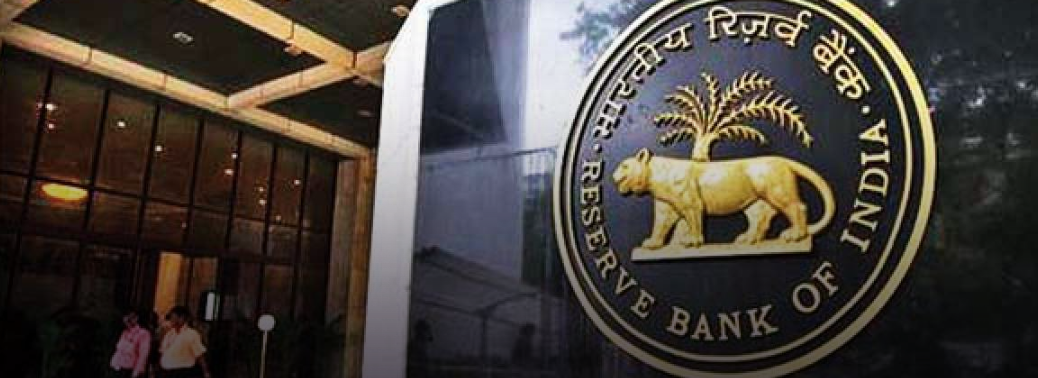
In News:
- The Reserve Bank of India (RBI) said that it will inject Rs. 37,500 crores into the system through purchase of government securities in February to increase liquidity.
Background:
Open market operations (OMO):
What is it?
- Open market operations are conducted by the RBI by way of sale or purchase of government securities (g-secs) to adjust money supply conditions. The central bank sells g-secs to suck out liquidity from the system and buys back g-secs to infuse liquidity into the system.
- These operations are often conducted on a day-to-day basis in a manner that balances inflation while helping banks continue to lend. The RBI uses OMO along with other monetary policy tools such as repo rate, cash reserve ratio and statutory liquidity ratio to adjust the quantum and price of money in the system.
What its Signficance?
- In India, liquidity conditions usually tighten during the second half of the financial year (mid-October onwards).
- This happens because the pace of government expenditure usually slows down, even as the onset of the festival season leads to a seasonal spike in currency demand. Moreover, activities of foreign institutional investors, advance tax payments, etc. also cause an ebb and flow of liquidity.
- However, the RBI smoothens the availability of money through the year to make sure that liquidity conditions don’t impact the ideal level of interest rates it would like to maintain in the economy. Liquidity management is also essential so that banks and their borrowers don’t face a cash crunch. The RBI buys g-secs if it thinks systemic liquidity needs a boost and offloads them if it wants to mop up excess money.
- The cental bank’s signal that it will move to a ‘neutral’ liquidity stance from a ‘deficit’ stance, hints at more liquidity in the system in future. This could arm banks with more funds for lending, and lead to softer interest rates in the economy.
- This is good news for both businesses as well as individuals. However, large open market purchases by the RBI can give the government a helping hand in its borrowing programme and are frowned upon for this reason. In April 2006, the RBI was barred from subscribing to primary bond issues of the government.
- This was done to put an end to the monetisation of debt by the Reserve Bank. However, that didn’t stop the process. With rising fiscal deficit, the RBI has been criticised for accommodating larger government debt by way of OMO.
NASA’S Probe Discovers a New Planet
09, Jan 2019
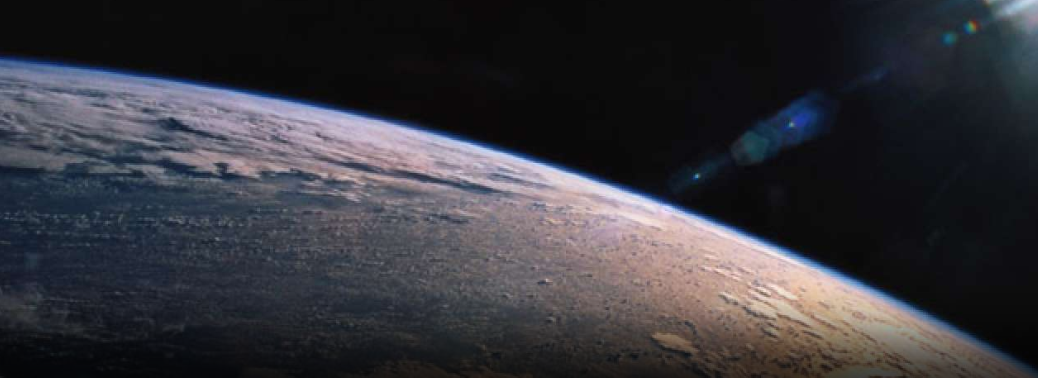
Context:
NASA’s latest planet-hunting probe has discovered a new world outside our solar system, orbiting a dwarf star 53 light years away.
Details:
- This is the third new planet confirmed by the Transiting Exoplanet Survey Satellite (TESS) since its launch in April last year.
- The planet, named HD 21749b, orbits a bright, nearby dwarf star about 53 light years away, in the constellation Reticulum, and appears to have the longest orbital period of the three planets so far identified by TESS.
About Transiting Exoplanet Survey Satellite
- The Transiting Exoplanet Survey Satellite (TESS) is a space telescope for NASA’s Explorers program, designed to search for exoplanets using the transit method in an area 400 times larger than that covered by the Kepler mission.
- It was launched on April 18, 2018 atop a Falcon 9 rocket. During its 2-year primary mission, it is expected to find more than 20,000 exoplanets, compared to about 3,800 exoplanets known when it launched.
- The primary mission objective for TESS is to survey the brightest stars near the Earth for transiting exoplanets over a two-year period.
- The TESS satellite uses an array of wide-field cameras to perform a survey of 85% of the sky. With TESS, it is possible to study the mass, size, density and orbit of a large cohort of small planets, including a sample of rocky planets in the habitable zones of their host stars.






